In 2015 I went around the world (28 countries) and in most I left a post or two. Click on the Filter button below, then move around the map, and click on a pin to see what happened! (Might need to wait 15 seconds or so for them all to show up)
Prague and the rest of Europe are coming!….. Until I get everything updated, just click on “Filter” below and then any of the pink pins on the map to see an entry. You can slide the map around to see the whole world. Also, click on any picture to make it larger. But I’m sure you already knew that….
Coming soon…..
Coming soon….
Coming soon….
Coming soon….
Coming soon…..
Coming soon…
Coming soon….
I’ve always wanted to go through the Fjords. When I was 23, I wrote up a list of places I wanted to see before I kicked the bucket, and “Norwegian Fjords” was on that list! I wasn’t sure how to approach it though. My friend in Oslo gave me a wonderful itinerary for 3-4 nights in the Lofoten Islands, but there were many moving pieces and I didn’t have the time or energy (or money, frankly) to do something that cool and adventurous. So instead I went for the self-managed (no guide) 1 day trip from Bergen to Oslo, arranged by the Norwegian State Railways (NSB) called Norway In A Nutshell. Essentially the NSB sells you tickets for a train from Bergen to Voss, a chartered bus to take you from Voss to Gudvangen where you catch the waiting ferry (see below). The ferry takes you for 2 hours along the Sognefjord and drops you off at Flåm where you take a special train waaaaaaaay up the mountain to Myrdal, which is just a rail way station, sitting at about 2,800 feet. Then you catch the regular train back to Oslo. 8:30am to about 9:30pm. Long day but as you’ll see below, MUCH fun!

Shot from a racing train, from Bergen to Voss. Not a shabby front yard view, is it? Of course, this is JUNE.
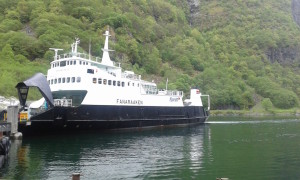
Once you get to Gudvangen, you hop aboard this mighty vessel, the Fanaraaken. It’s a working ferry, taking cars and cargo, but mostly tourists.
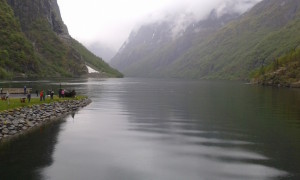
Also at Gudvangen, notice the Viking Ship in the middle distance with Viking tourists hanging off it.
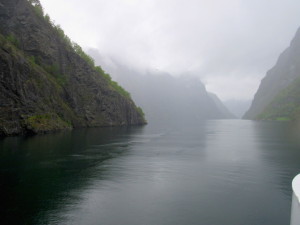
Random Sognefjord view. The day was overcast and occasional rain, but that just added to the atmosphere. Cool too, around low 50s.
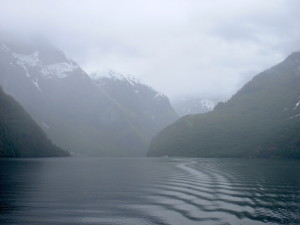
More fjord! Did you know that there live sea mammals here? Seals and porpoises. We didn’t see any, but I could just tell they were underneath the surface, mocking us.
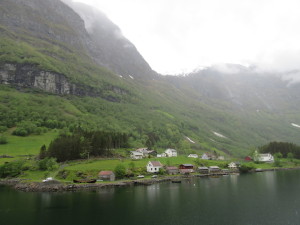
No roads can reach these fjord side villages, the only way is through the fjord. I’m not sure what they do for a living but this was one of several villages along the way.
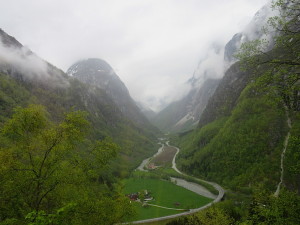
This may be out of sequence, but this is the view from the bus we took to catch the ferry. That there’s a farm down there. With the height of the flanking mountains, and the fact that they are so far north, these folks have figured out a way to live with out sunshine.
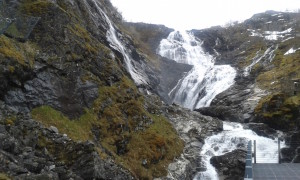
Taking the special train from Flam to Myrdal, we passed lots of amazing waterfalls, this being one of them. The water was, as you might guess, cold and clear. I could see the bottom of the fjord clearly when it was only 10-12 feet deep.
What’s a trip to Norway without a cruise through the mountains and fjords that make up that harsh and beautiful land? Well, right. So I flew over to Bergen on Friday afternoon to catch the Norway in A Nutshell all day tour from Bergen to Oslo the next day (more on that in the next post). And I got there early enough to nose around and take some pictures for you! Temps were in the 50s with rain/cloud/sun/rain/cloud/sun…
Flew 3.5 hours from Barcelona airport to Oslo airport. Our flight plan took us over France, and even Paris, which was fun. The plan was to meet and stay with my Michigan PhD friend, and she had given me instructions several trains to take to get to her. My problem, was that the Spanish SIM card I had acquired in Granada didn’t have roaming turned on, so I had no mobile data network access. So I’ve been learning to be super prepared to find a place before, and to download any maps before I leave wifi. Anyway, I find her and her husband, who I also know, drove me around town being really good and hospitable hosts! They even had a picnic packed so we drove up to the site wehre they hold many international winter sports events, a big old ski jump, cross country track…fun. Stayed at their very nice house out in the suburbs so I got to see how Norwegians live. I like how they live. Other highlight: visited the Viking Museum, toured the outdoor village of traditional Norwegian homes and buildings, went to the Edward Munch museum where I saw his painting, the Scream, along with Van Gogh paintings, which were in special exhibition. I was impressed also by the price of everything – a glass of beer was $10! Hard to get on a cheap drunk at those prices.
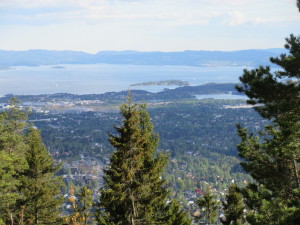
My friends took me up here for a lovely salmon sandwich picnic after I landed. They claimed that the sunny clear skies would not last, so no time to waste! This is looking southwest over Oslo.
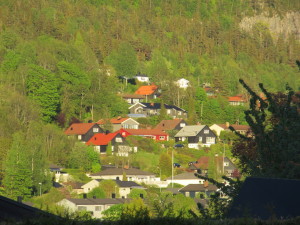
No surprise, but the sun stays up very late in the summer in Norway. Just 200 km north you get midnight sun. This setting of homes in the10:00pm “dusk” struck me as lovely.
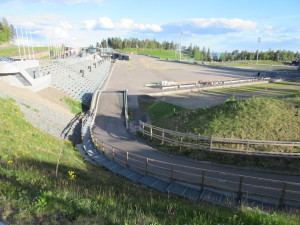
What you’re looking at is the international ski competition venue here in Norway. In winter, this is covered in snow and is the cross country skiing course.
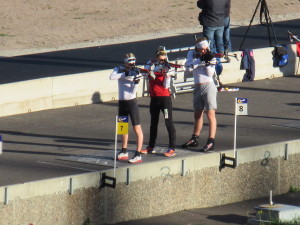
And these are Olympic hopefuls, practicing their technique. They didn’t just shoot, they practiced unslinging their rifles, setting up, breathing and then shooting, and then packing everything. They’d do the whole routine, which makes sense. Just cause there’s no snow doesn’t mean you can’t practice!
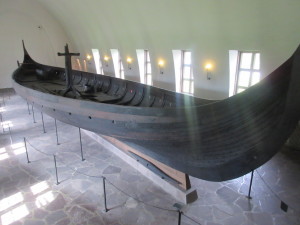
My friend Marianne took me to the Viking Museum which houses two Viking ships discovered in the 1920s here in Oslo. It was a burial site, and a veritable treasure trove of these boats, food, art, tools, clothing,…everything a departed hero might need in the after life. Even a few sacrificed bovine. These boats were NOT that big and yet…..
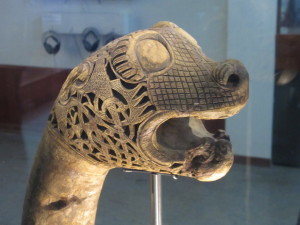
Along with the many folk art found with the boats, were four posts with animal heads, like this. The curators still have no idea what they meant or were used for. But they’re pretty cool.
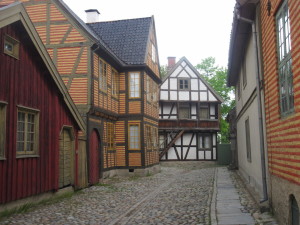
The Outdoor Museum is a really nice reconstruction, with original buildings, of traditional Norwegian villages from around the country. I can’t really add much value by way of description that you can’t see for yourself, so I’ll just present a few pictures.
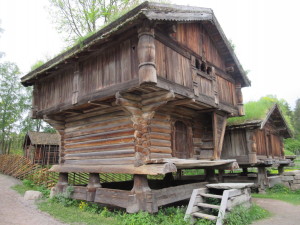
I can say, about this one, that they raised the farmouses so rats and other vermin would have a harder time of eating all the stored food.
On the trip I took from Bergen to Oslo, via the fjords and valleys through the mountains, the Flåm train makes a stop halfway up the hill. We all pile out to look at the really cool waterfall, but it seems a bit odd. All of a sudden, music blares out from what looks like an abandoned hut on the hillside up o the right. And then…out pops a woman who does a dance, and then another one pops out on the other side of the house, then another pops out on top of the house, then another pops out in front of the house. I don’t think ANYONE had any idea what was going on. I think I heard a loudspeaker from the train saying something but it was so garbled, and probably in Norwegian, that we got no information. More dancing and music. Then it stopped and we all got back on the train, puzzled.
Next day, in Oslo, I go to his museum and start talking with this woman, as i am won’t to do. (I’m behaving more like my dad every day, which is frightening). Anyway, she’s a docent here, and seems to know a lot about Norwegian “stuff”, so I ask her if she has any idea what we saw on that hillside. Well! She does! In fact, she’s a dancer by profession and was one of those hillside dancers for three years!!! What are the odds? So she happily explains that it was the dance of the Hulder, sirens of the underground troll who lure men to their deaths. Good thing I didn’t know that then. So, I guess my Dad is on to something….talk to strangers!
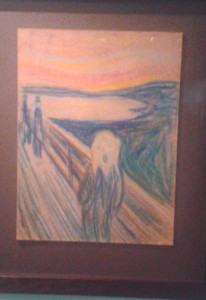
What visit to Oslo would be complete without viewing of Munch’s “Scream”? And so here it is. The reason it’s a little tilted is that just as I shot the picture a guard game up and startled me by telling me picture were not allowed. The nerve…
Stay tuned….
Took the bullet train from Madrid to Barcelona, 386 miles in 3 hours. Now that is speedy! Super smooth too. Stayed at an airbnb very close to the Barcelona Football Club stadium, and since they were in the Champions League finals against Juventus (they eventually won), it was a pretty exciting place to stay. Highlights: catching up with a Norwegian friend of mine from the Univ Michigan PhD program who happened to be attending a conference in Barcelona that week, seeing all the Gothic and Gaudi inspired architecture, wandering La Ramblas, and having dinner outside every night. I did a LOT of walking in Barcelona. Also went to the Erotic Art Museum. Ha! Fun fact: did you know that Spanish is not the first language there? It’s Catala, which is a cross between Spanish and French.
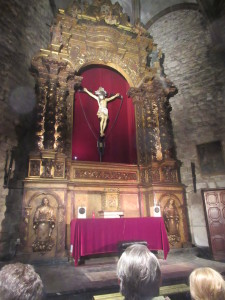
The stage. One thing I love about Europe, all the musical concerts, of all varieties, held in acoustically fascinating churches. No photos during the performance!
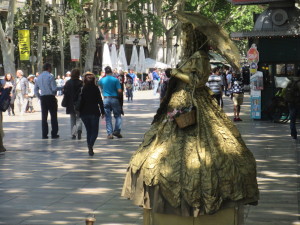
Living statues. I’ve seen them all over Europe. They paint themselves up to look exactly like a statue, then hold a pose – seemingly without breathing – until you toss in some money. Then they interact with you. Maybe you’ve seen this genre a lot, but to this local boy it was new.
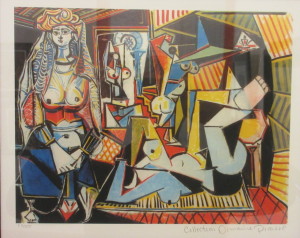
I couldn’t resist. The Erotic Art Museum was just BECKONING me from La Rambla. And the cross dressing Marilyn Monroe calling to me from the balcony, well I HAD to go it, right? Unfortunately, since this is a family blog, I can’t show you what I saw but let me tell you, it was thorough! Here’s a Picasso they showed, seems SFW enough.
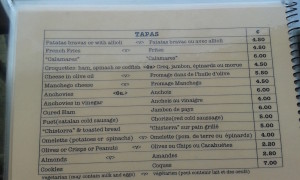
When you’re on a journey like this, in Europe, eating becomes part of the adventure. Here is my Tapas menu…
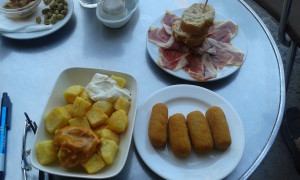
And here is what I got. It’s hard getting tapas alone, you just can’t order 6 dishes and sample like you can with a dining partner. But I gave it my best effort.
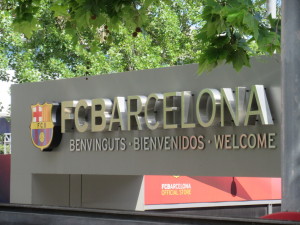
For the sport minded, I went to football mecca, the FCB stadium. I didn’t go in, seemed like a lot of effort given the crowds, but since I stayed almost across the street, I could hear the crowds roar and fireworks go off when they won a game.
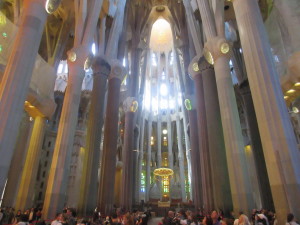
So one of the big deals in Barcelona is a church designed by the artist Gaudi. He was run over by a trolley car in 1920 but they continue to build “his” church, and this is it: Sagrada Familia. It’s a UNESCO World Heritage Building and pretty astonishing. Had to get tickets two days ahead.
Took the 5 hour bus ride ($30) instead of the 4 hour train ride ($80) from Granada to Madrid, and had a good time – the busses her are just dandy! Stayed with a fantastic family right near the Minsterios Nuevos area, and I used the Metro EXTENSIVELY. Highlights were seeing the Prado museum with all the official masterpieces, wandering around the Plaza del Sol, touring the Palace, and seeing the precise room and desk where the Spanish king abdicated his throne last year, and…a bull fight. Yep, I went to a bull fight. Cause, why not? I love the pageantry and even liked the fight, until they decided to kill the bull. Then it was just…not fun. I watched 3 of those things and then left. I knew I wasn’t going to enjoy the ending, but I wanted to see if I could see what Ernest Hemingway saw as so noble about it. I did not. (I have a longish draft of the bull fight experience, but I haven’t finished it yet).
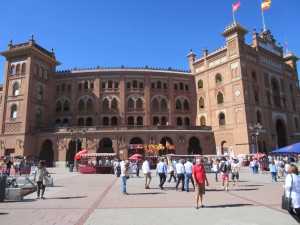
The Plaza de Toros of Las Ventas in Madrid. The energy before the bull fights felt like a football game. According to them, this arena is the “Mecca of Bullfighting” in the world.
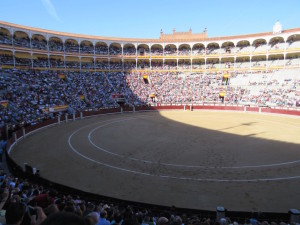
The bullring shortly before the start. They tickets in the shade are more expensive than those in the sun, and you get to pick: Shade or Sun.
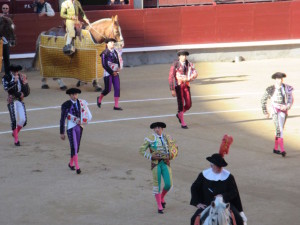
The ceremony is really the main thing I wanted to see, and I got it. All the toreros and matadors of the day, march in, followed by guys on heavily padded horses. The bulls charge these horses who stood their ground and didn’t seem to get all freaked out. That surprised me. As far as I could tell the bulls couldn’t hurt the horses.
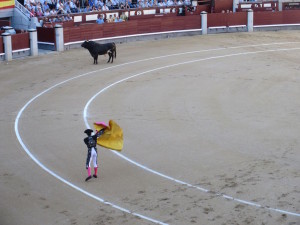
This bull entered the ring and just kinda stared at the crowd. The toreros and matadors spent a lot of time trying to get the attention of the bulls.
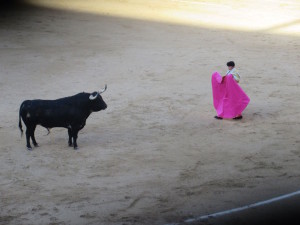
Lots of standing around. At some point, the bull would get annoyed at the bullfighters taunting and charge cape. The audience was really into this, cheering, or even booing (well, whistling) if they thought a move was good or lame. About this time the trumpets would sound which meant it was time to start killing the bull. And it was at this point that I didn’t feel so good.
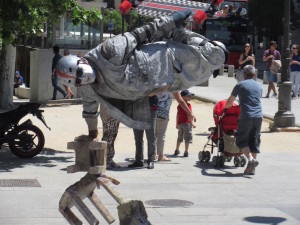
First noticed this in Spain but there are these street performance who post as human statues. I’m still trying to figure this guy out.. He holds this posiition for a long time. I stuck around 5 minutes and he was still doing it. Best I can figure is that he’s resting on some rebar thing that works its way up through the leaning chair and through his sleeve. I don’t know. Impressive, though!
Decided to wimp out and fly from Casablanca to Malaga, Spain, with Royal Air Marac, rather than go back through Tangiers. Once in Malaga, I caught a 2 hour bus on to Granada. Loved the location of my hostel/hotel/airbnb/boardinghouse/whatever. Right down in the old town. Highlight was seeing Alhambra, a UNESCO World Heritage site, at dusk, (and getting tickets eventhough online it said they were sold out for 6 weeks), and taking an Olive Oil tour, complete with olive oil tasting and tour of groves and old school factories. Did you know that Spain makes 40% of the world’s olive oil, far outpacing Italy and Greece, each with about 20%? I thought not! I really liked Granada. Perfect contrast to Morocco.
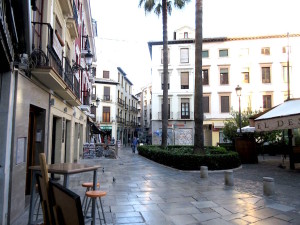
Downtown Granada! At the end of this street is where I had my breakfasts, usually at 9:30 when the shop JUST opened up. I love hanging around European Old Towns before the tourists show up.
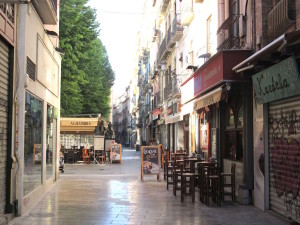
Another street before the tourists. Notice how SHINY an CLEAN the walkways and streets are. This is something I noticed about many countries I visited this year – so much decaying concrete. Granada was the opposite.
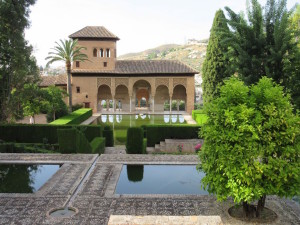
Okay, Alhambra is a UNESCO site and a huge complex of Moorish influenced palaces and gardens, high atop a hill overlooking Granada. As I said, I managed to get daily “rush” tickets even though the online store said they were all sold out. I was given a 5:30pm entry time, which annoyed me at first. But since the sun set at 8pm, I enjoyed Alhambra in a beautiful dusk.
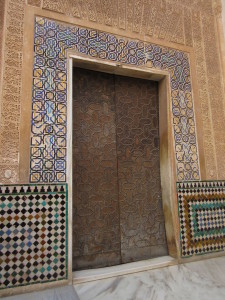
Lots of doors and windows with this amazing design, all different patterns, materials and other elements.
Okay, that’s it for Alhambra. I have LOADS more pictures but if I’m going to get all these things posted, I must move on! Next the Olive Oil Tour!
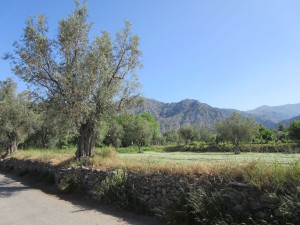
This is a 300 year old olive tree. The mountains in the background are the Sierra Nevada. The wall is pretty old too.
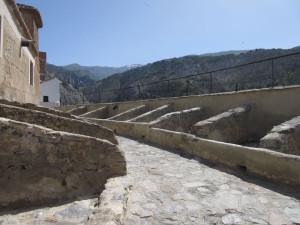
In the old times before modern machinery, local families would dump their olives in these vats, each family was assigned its own vat.
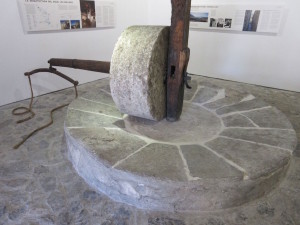
A donkey would get strapped in and turn this wheel, which would do the initial crushing of the olives, pits and all. It would end up as a paste which….(next slide please)
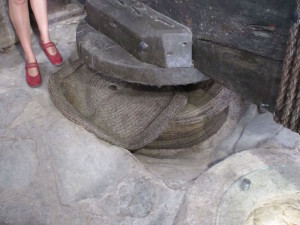
…get spread out on these pads. The pads would then be stacked up, maybe doze of them, and then…..(next slide please)..
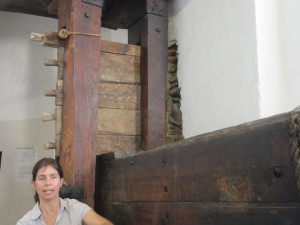
This lever would be pressed down with increasing pressure, to squeeze all the oil out of the olives. This was the much desired “first press”. After the oil was out, they would press it again later for oil to be used for cooking oil or medicines or lubricants or whatever. When it was all gone, the olive (by now pretty dry) paste would be used for fertilizer or animal feed..
Ifrane is a town and region just a bit south of Fes; in fact I took a day tour from Fes. It is pretty high up in the Atlas mountains, 5,400 feet, in what is sometimes called Berber country (my Casablanca host family iss of that culture and they preferred the term Tamaziɣ.) Very green and lush in the summer, and snowy in the winter. Iframe even has it’s own monkey: the Barbary Macaque! These pictures may not seem like Morocco to you, but I assure you, on the grave of my son’s pet rat, Ratso, that this IS Morocco.
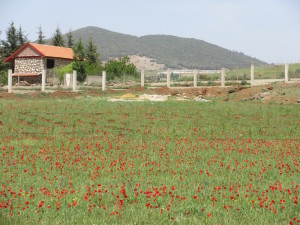
There were FIELDS of these red flowers everywhere. This was in early May, so I guess at that altitude we can call them spring flowers?
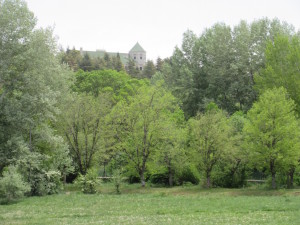
This is one reason they call it the Moroccan Alps. For some reason they build houses that look like they belong in the Alps here, and when you spot them through the trees, like this “castle”, you are transported to…well…okay, maybe not the Alps But close cousin of the Alps!
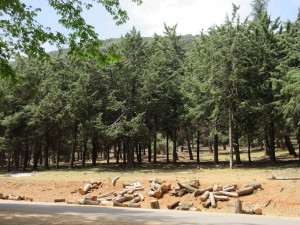
I took this picture because, along with the wood burning fires they had lit for forest management, the scene just made me think of Tahoe. Really nice.
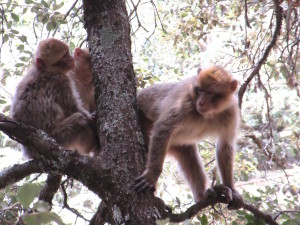
And here are the Barbary macaques…. Just hanging out in the tree. These guys are quite popular. There were maybe 20 monkeys, but at least 80 people throwing food to them.
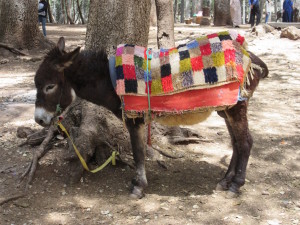
The ubiquitous donkey, in this role he carries kids around for rides. Donkeys, and horses, are all around these Ifrane parks to serve the throngs that come up for the cool air. When Ramadan is during the summer months, many families try to spend it up here. Like this year.
Fes is a really old town built with over 9,000 alleys and streets, none of which can accommodate motor vehicles – so donkeys and hand pulled/pushed wagons was it. Highlight here was hiring a personal guide for $10/hour and showed me everything, including the dying vats.
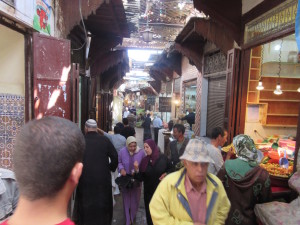
Fes is a maze of tiny alleys, “streets”, paths..some covered like this, and some not. ALL are filled with people of all types. It’s very exciting, as long as you’re not claustrophobic.
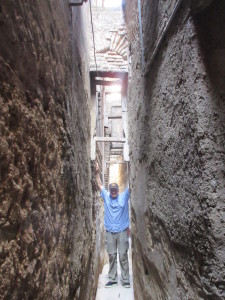
I was curious about the narrowness and asked my guide, “what’s with the narrowness?” . When these were built 1,000 years ago, there was always the chance that some marauding army, or gang would try to get you. So one reason for the narrow alleys was to discourage groups, or even individual large men, from chasing you. Doorways are sometimes just 4 feet tall for the same reason. I don’t know how effective it is. But this particular path leads to 4-5 homes. Through which those families must carry all their food, furniture, etc.
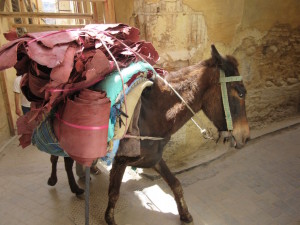
Vehicles do not fit in the Fes medina. They rely on hand carts and these guys. I almost got run over by this one. This alley looks like there’s room for him to maneuver, but what you don’t see is the crowd that has backed off to let this guy through.
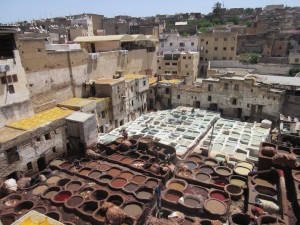
A big industry is leather. Once the skins of animals, mostly sheep, are prepared, they soak them in these vats to cure and color them. This set of vats has been here hundreds of years.
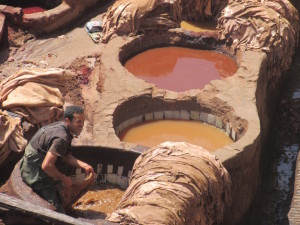
This guy is slacking on the job! His job, when he’s actually doing it, is to dip skins is the vats, stomp on them, and finally take them out for drying.
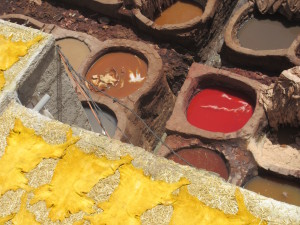
And this is how they dry them. Drying skins on the room in the foreground, more vats of dyes on the ground behind.
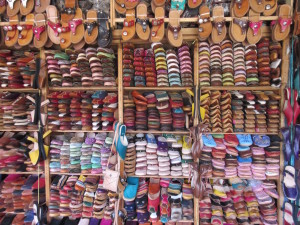
Need some slippers? We got slippers! These were made from the leather you saw getting processed above.
Marrakech, Morocco sits on the edge of the Sahara Desert, a mere 200 km from serious sand. It’s a convenient 3 hour train ride from Casablanca, and trains seem to leave somewhat on time. So…an easy weekend trip, 3 nights away. Right? Well, not so much.
I get to the Casa Voyageurs train station, in central Casablanca, an hour early so I can buy a 1st class ticket. Because I’m all about going First Class when it’s cheap. $14 vs. $9 for 2nd class, plus you get a reserved seat and 6 people per compartment rather than 8. Well worth the $5, right? Turns out, 1st class is sold out, so I get a 2nd class ticket, which puts me in the densely crowded bustling free-for-all coaches. Train rolls in and my fellow passengers start the rush and shoving to load in and find a seat. I notice a guy in the passageway who refuses to move as I struggle to get past. He looks shifty. Very tight going but I heft my backpack up high and squeeze on by. Lots of yelling, not sure why yelling helped the process. Much jostling. Everyone shorter than me which gives me a nice view of the chaos. After peering into 4 compartments, being met with resistant looks among those inside, I find one where the resistant looks feel not so annoyed. I plop down in the nearest open seat, and relax. 30 minutes later, I notice that my smartphone is gone: the shifty swine has pickpocketed me! Which, you know, really?! It’s annoying. I knew about the risk, I thought I had taken precaution, I had my phone deep in my front pocket, but that wasn’t good enough, I guess. Fine.
As I sit there with 2.5 hours more travel ahead of me, I ask the train conductor dude what my chances are of finding (a) the guy or (b) my phone. He looks at me as if I had been dropped on my head as a child. Repeatedly. “Someone is probably selling it at the train station now.” Ugh. Fine.
As I sit there with 2.5 hours more travel ahead of me, I ask the train conductor dude what my chances are of finding (a) the guy or (b) my phone. He looks at me as if I had been dropped on my head as a child. Repeatedly. “Someone is probably selling it at the train station now.” Ugh. Fine.
So at this point I face two choices. Get pissed off, rant, and generally curse the world as I sit there, stewing away the hours. And stay that way. OR I could reflect and bless the crook for having the kind of life that causes him to do harm to a fellow human. Considering these options, I decide to create a 3rd one. I silently but emphatically – and quite profanely I might add – curse the swine, AND his family, AND the horse he rode in on, for about 60 seconds. A good, solid cursing session, full of venom and indignation. Felt really good. Then I said “screw it, it’s gone” and continued to read “Huckleberry Finn”, which I’m reading for some reason in North Africa. I mean, I was NOT going to let the miscreant steal my phone AND my afternoon train ride to Marrakech too. Right? (sigh…)
I call this a Modified Buddhist approach.
I get to Marrakech, sans (notice French, which is spoken here) communication device, and no one from the hotel is there to pick me up. I kind of expected it, because I speak no language the locals speak, and the person I talked to at the hotel to arrange it spoke no English, Spanish or German – my go to languages. And I’ve discovered that the usual back up tactic of charades doesn’t work on the phone so well. So no shock.
FORTUNATELY, my practice of transferring logistics info from phone to little Moleskin notebook came in handy, because I had the name, address and phone number of the hotel in that notebook and just flashed it at the taxi dispatcher and requested a ride. He, squatting there on the curb with half a dozen cronies around him, had, of course, never heard of the hotel. He whipped out HIS phone, which, after I told him about my phone’s demise, he was kind enough to flourish in a rather condescending way, I thought. His attitude was very “Neener, neener, neener, I have a phone and you don’t!” But I overlooked this. He got hold of the hotel, in very animated Arabic, arms flailing, voices rising, incredulity lacing his tone, lots of “la la la la la la!” (la = “no” in Arabic)…after about 5 minutes of this wildness and apparent anger he hangs up, smiles at me and says “No Problem!”. Turns to my driver…..more arms flailing, voices rising, incredulity laced “la la la la la’s”….driver turns to me, smiles, and says “Let’s go!”. Morocco taxi drivers are entertaining.
I really like my guesthouse here, Riad Granvilier. It’s right in the medina, at Jemaa el-Fna, which is the main plaza in Marrakech, surrounded by souks, bazaars and a huge labyrinth of medieval alley ways, dark passages, tall walls, and hidden villas. (That’s the Jemaa on the lead picture to this blog post.) I have to admit, getting to it was a bit sketchy…Badr, my guesthouse’s day manager, met me at the taxi stand, near the shell station, because cars may not drive in the Jemaa after noontime. So Badr and me, we walked for about 10 minutes through this delightful market place insanity, then took a right at the corner with the sign that said تذكر، والأجانب تدفع ثلاثية, (loosely translated I think it means “remember, foreigners pay triple”), then another right, then another left past the donkey cart, then a left and finally a stretch before we end up at the door on our left.
Kids playing soccer in the alley paid us no mind, and I nearly took a yellow card as I stepped on one running by. Once we entered through the door, we were in another world. A beautiful courtyard, quiet, peaceful and sunny. Incense filled the air. A big orange tree in the middle, a water fountain gurgling, and my room just off to the side. The image that comes to mind is a geode, with a bland interior that opens up into brilliant beauty inside.
The next day, Badr, took me in search of a store to replace my phone. That didn’t work, so he left and I started to wander. Which I like to do. I just got lost in the labyrinth, taking pictures (some below) and not really worried about losing anything because MY PHONE HAD ALREADY BEEN STOLEN (guess I had a little residual anger…). As I’m taking a camera picture of a store’s wares, I hear a voice. “My friend, I have been waiting for you”. Which is a pretty good line from a shop owner, if you think of it. I turn and see a smiling man I later learn is named Hamza. I decide to see what he has.
At this point I need to explain one of my character defects. I hate shopping. I hate owning “stuff”. I hate haggling prices in strange currencies (with all that math) for products that I do not understand and I do not want. In fact, I really REALLY suck at it. And so “Dave in a Moroccan Bazaar” is just all sorts of wrong, kind of like a lamb being led to slaughter. I’m a grown man. I know this is a problem I should work on. But I can’t get there. My best defense is to just not carry much money.
Right. Hamza. Hamza is an Herbalist. That means that his 15’ x 4’ cubicle of a shop is lined from floor to ceiling with bottles full of…stuff that presumably comes from herbs. Stuff, you’ll remember, that I do not need, nor want. I tell this to Hamza and he looks shocked and hurt and retorts, “but you DO my friend! Here sit down and have some tea.” For those of you unaware of the tradition in these parts, before any real business transaction you must have tea. You simply can NOT do without it. If you insist on getting straight to business, you will offend your guest. (You may ask why I was worried about offending a man who was setting me up for the slaughter. But don’t. This is bigger than that.) So I sit and he sets to brewing tea in the propane tank that, if it explodes, will render his shop, and me, picayune.
While I’m there I might as well ask questions, which I do well. The format was usually this: “What’s that? No, no, no…I don’t want to buy 3 kilos of it, I just want to know what it is. Why are you putting it in a bag?” He looks hurt, and slowly removes the item from the bag. We do this at least 15 times. But sometimes he wins by sheer charm, sometimes he wins by sleight of hand, sometimes he wins because he just wears me down. Throughout he promises me a “good price”. For whom, I was never able to determine. Hamza is good. The tea is good. The experience is fun. I have nothing else to do. And I only have $50 in my wallet. What could go wrong?
We have a good time. I even manage to ignore my feelings of impending doom, incompetence and sheer naivete, and just go with it. In the end I walk away with $45 worth of stuff. That I do not need. That I do not want. Here’s my haul.
Anyway, he tossed all these in the bag, after weighing everything carefully, insisting all the time that he was going to give (someone) a good price. And then he announced the result: “420 dirham!” An auspicious number I thought. Gathering up all my pride I countered with 400, and he accepted. I’m a tough negotiator after all! I figure I got a bag full of stuff (that I don’t need nor want nor fully understand), I got 45 minutes worth of local entertainment, I got 3-4 cups of tasty local tea, I got to learn about vary strange substances (he also sold pigments, incense, oils, dried flowers and many other exotic items). I got to sit inside out of the hot sun. I also got to watch his partner work the passing crowd in 4 languages. And I got some of this blog post for you! So, for $42, not a bad investment. Right?
More happened in Marrakech that I’ll just allude to.
I took a picture of a group of men drumming, and a man came up to me and asked for money for the privilege. I thought I was being picked on, he didn’t ask anyone else. And I wasn’t even sure he was with the drummers. So I gave him 10 dirhams ($1) and he looked at me with disgust and said, “Fuck you!”. (Sigh.)
I took a picture of a cobra, and then let the snake handler take a picture of me with the cobra. He said, “that will be 300,000 dirham!” What the…. He was asking me for $30 for 5 seconds of work on MY camera. I told him he was nuts. His partner then comes over as the Voice of Reason, asks me what happened, I laugh and say this guy just asked me for 300,000 dirham for one picture on MY camera. The Voice of Reason looks at the guy, looks at me, and then as if he was King Solomon passing judgment calmly says, “You should not pay more than 200,000”. Ha! I give them 20 and walk away. There’s one thing the street performers do well in Marrakech – they target the tall foreigners and then go for the big bucks!
The first night as I perused menus in search of a restaurant that looked tasty AND served a cold beer, a man with a limp came up to me and asked, “you looking for beer?”. How did he know? I said, yes I am! And he said, “follow me, I know a good restaurant”. So I followed Abdul Ahmad, as he led me through a dizzying route of back alleys. Sure I was doubtful that I would find myself back, or maybe he was hauling me off to some Saharan bandits that wanted to kidnap me and make me a sex slave for their women. I could deal with either consequence. Plus, I wanted a beer. Ended up at a VERY nice restaurant, Dar Nejjarine, that I even went back to two days later. Turns out Abdul Ahmed gets paid for brining tourists to the restaurant, so it cost me nothing. I got a great meal, free live music, and a delightful view of the sunset through minarets. And he got paid. (When I went back two nights later, I searched him out on the square and asked if he wanted to deliver me again, and get another commission and he happily agreed!). Nice guy.
The trip back to Casablanca went nicely, partly because I got a First Class ticket, partly because I had Survived Marrakech!
To spare you further commentary, I now present…pictures! With captions of course….
The first set shows a small subset of things you can buy in the alleys and “streets” of Marrakech. Colorful, but I avoided all (except from Hamza). Traveling around the world in with only one bag and 25 pounds thankfully prevents me from buying too much.
I apologize in advance for the formatting. WordPress is annoying sometimes, andI don’t have the patience to fix it. Click to see these in more detail!
—
Then I just offer random shots of Marrakech, things that caught my interest.
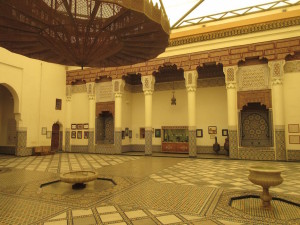
The inside of a very nice museum, although I thought the architecture of the building itself was way more interesting than any of the exhibits.
Stayed here 3 weeks with a fabulous family. They were really warm and the college age children even gave up their room for me. All set up through IVHQ. I won’t talk about the assignment here, but my days were generally spent working in a coffee shop on a couple assignments, and evenings were spent often at the Center when all the kids were there. One day another volunteer and I explored Casablanca and saw the biggest mosque in Africa and ate at Rick’s Café, with no Bogie.
I was on my way to Rabat, Morocco to start my assignment with International Volunteers HQ but the is no direct route from Albufeira to Rabat. For some reason, the market doesn’t exist. The next best way to do make it happen is to take a bus to Seville, spend the night, and then continue the journey the next day. So it was a very brief visit to Seville, but I had a very nice outdoor meal, and it was nice to see signs and speak a language that I kinda know.
In the morning I took that 3 hour bus from Seville to Tarifa, on the straights of Gibraltar. Then I had to hike 15 minutes “thattaway”, which was kind of dicey since my mobile phone didn’t have any working GPS, on account of the international Lebera SIM card I bought in London didn’t do roaming well. Anyway, I found the ferry, boarded, and enjoyed the ride over. On board, they have one Moroccan clerk processing the passports of all several hundred passengers. I was looking at the end of the line, and decided that I did not want to spend my voyage in that line, so I went out on deck and enjoyed myself. When we docked, I went to the line, and sure enough there were only 3 people left. So I got in line, got my passport packed and then headed out in to…..Morocco. Immediately was fleeced by the only taxi driver I could find quickly who would drive me to the back up train station on account of the main station being renovated for the next 12 years. Missed my 1:30 train to Rabat, borrowed a phone from the ticket clerk and called Samad, my connection in Rabat, and told him I’d be on the next train. Eventually I made it. My first inkling of what the next 3 weeks would be like.
I’m sorry I didn’t have much time to take good pictures…I was moving a lot.
It as early April and I wanted to stay warm, so I went south to this seaside town to soak up the “not quite but just west of” Mediterranean climate. For the most part, I got it. Highlights of this week was that there were no highlights. I just relaxed, read, mused, took walks on the beach, ate.
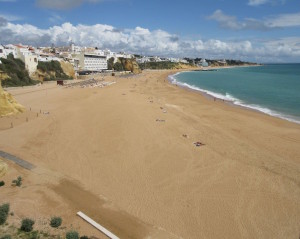
A very nice beach, that’s the Atlantic as it creeps south around the Iberian Peninsula towards the Mediterranean.
I had a decision to make. If I went back to Kenya, I would have really pushed the whole schedule back a month, and I would basically miss out on most of Europe. And it would cost a lot of money. Since I had a 3 weeks teaching commitment in Morocco starting April 19, I decided to spend some time in Portugal now instead of tacking it on to Spain later. So I flew into Lisbon via Ryan Air (fun!), and spent a few days there. Highlight was probably the Sintra tour, a “storybook” region just west of Lisbon. Ate the biggest sardines I’ve ever seen too!
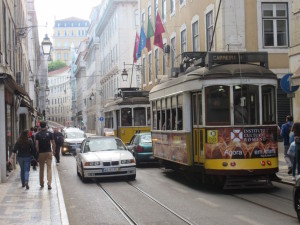
Lisbon reminds me of San Francisco SOO much! Even to the same cobblestones as we have in the Embarcadero Center!
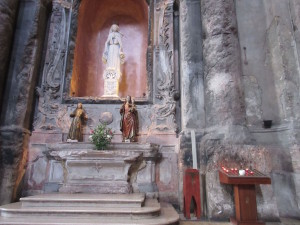
I found the Sao Domingos Catholic church. The roof had collapsed during the huge 1755 8.0 earthquake that caused damage as far away as Morocco. They renovated it. I took the moment to light a candle to my friend Don (his is the second from the right), and meditate.
Sintra! Sintra is a fascinating little area, full of European Romantic architecture. So unique that the UN created a World Heritage category for it, Cultural Landscape.
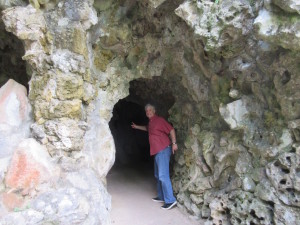
Dave heading into a man made cave at the quirky and mysterious Quinta de Regalaria castle. Was he a Mason…or wasn’t he?
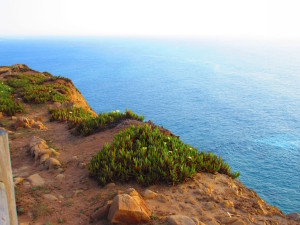
This is the westernmost point of continental Europe. Beyond this there be dragons, well, Americans. Specifically, New Yorkers due West.
Just a stopover here because I found out buying a round trip from DTW to LHR was cheaper than buying just a one way ticket, might as well fly back to the US from London, right? So I just did for a day what I do best: wander. I also ate fish and chips!
While I was in the States, I also went to Michigan to see my family who pretty much universally asked the question, “Why are we seeing you more when you go for a trip around the world than when you live in California?”
I think they were glad to see me. One highlight, going to the Spring Scrimmage of the Michigan football team. They played against themselves, with no punts, and coaches running all over the field. But I think they got 40,000 fans in the stands and it sure felt like a regular game. Hot dogs, band and everything! We’re nuts, I guess.
I’m in Nairobi, and I get a call. My very close friend Don Horsley is dying (heart, blood cancer). He has “2 weeks – 2 months” to live, and his daughter thinks it may be quicker than that. So…I need to get there, regardless of the cost and disruption to this journey, right. I mean, friends and love are the only thing that matter. Plus, when I talked to Don on the phone he said he wanted me there.
Don Horsley was a very close friend of mine, who died too young. Because of the quick thinking of his daughter, who called me in Nairobi, I was able to get back and spend 3 days with Don before he did. My obituary and eulogy for Don is here
I was planning on staying here 2 weeks and do what I could for the Human Needs Project in Kibera , the biggest slum in Africa. I had a good start! Walked around Kibera with Margaret, one of the Community Center managers, along with Edward, a resident of Kibera who was basically our body guard. And I was getting some ideas for how to help the Center get more engagement from the community. Then…I got a call that one of my best friends, Don Horsley, was dying in Maine and didn’t have much time left. So I did what I could, which wasn’t much. Mostly showed the Community Center leadership how the IDEO Human Centered Design methodology could help them come up with products and services to serve Kibera, and showed them a few data gathering techniques to get insight from the community. Really smart, engaged staff there. I’m sad I couldn’t stay longer.
For a 3 minute video flyover of Kibera, to see what it’s like, and what the Human Needs Project is up to, go here.
(Okay, I know, I’m WAAAAAY behind in my posts. Since I last posted, I’ve been through India and now 10 days in Uganda. All good stuff that I’ll try to find time to write up. But honestly, I’m so busy “doing” that I have too little time to write. The following is a fun little morsel I hope you enjoy. I sure did.)
——-
I’m a bit early for my 9:30am RwandaAir flight from Entebbe, Uganda to Nairobi, Kenya. Looking very “munu” (foreigner) here, but otherwise comfortable. As I amble happily away from the Immigration desk (this time, a very nice man), I hear a yell, “My Friend!”. I turn to see a Ugandan Police officer, with a rifle slung on his shoulder, walking towards me, with some purpose in his stride.
He approaches me. “My friend, where are you going?”
“I’m off to Nairobi on RwandaAir”
“Ah, Nairobi. Why are you going there?”
“I’m on a trip around the world, and that’s my next stop.” (Dammit, I screwed that up! Always say you’re a missionary and they’ll leave you alone)
“A trip around the world, very nice. When are you returning to Uganda?”
“I don’t know, I have a lot of traveling to do”
“Well when you come back, you will want a friend, yes?”
“A friend?”
“Yes, someone to greet you when you arrive. Like a police man”.
“Like you?”
“Yes, like me. Will you give me $10?”
“What is your name?” (I say, trying to change the subject and pretending I didn’t understand him)
“Innocent” ( I am NOT making this up)
“Your name is Innocent?”
“Yes. Will you give me $10?”
I give up the feigned ingnorance. “$10? For what?”
He smiles and gently shakes his head. “So you will have a friend when you return to Uganda”
“Hmmm…What can you do for me now?” (thinking maybe I can bribe my way into a shorter security line) “This looks like a pretty long security line?”
“Ah, that is not your security line. Your flight is not yet called. You can sit over there until they call you”
“Oh, okay. Well, I don’t happen to have $10. The foreign exchange lady would only give me a $100 bill, and I already have friends here.” (At this point, I realize I’m not in trouble, he just wants money, so I decide to play along just so you readers could have this story. Yes, I did.)
“You only have $100? But you could change it?”
“I don’t know. Who here could change a $100 bill if the foreign exchange lady doesn’t even have change?”
“You could go there” (pointing to a bar inside security)
“Okay, I’ll go check. I want a Coke Zero anyway.”
This gave me a chance to check to see what cash I actually did have on hand. So I take my time with the clerk, and notice that I have a $100 bill, and two $20 bills. He’s not getting those. But I also have some extra Ugandan shillings left over, 10,000 to be precise (about $3). So I figure I’ll just pull the Bali shuffle on him with that. He’s a nice guy, laughing easily with me, not at me, and probably makes no money at all. What am I going to do with 10,000 Ugandan shillings anyway? So I fold the two 5,000 shilling notes in my hand, grab my Coke Zero, and walk back out to the terminal, where he is waiting.
Remembering my Bali strategy, I palm the money, look him straight in the eye, full of bon vivant, and reach to shake his hand.
“My friend, I’m sorry, they couldn’t break the $100, but here is what I have. I appreciate you being my friend. “
He smiles, then stops smiling as he looks at what is in his hands. He really wanted US money.
“I’m sorry, they couldn’t break a $100 and I need that to get into Kenya.”
“Oh, okay.”
“Where is my gate?”
“It’s just over there” (he says dejectedly) “They will call you when your flight is ready.”
“Okay, thanks so much. Sorry I couldn’t do more, but I appreciate your kindness, Innocent. Bye!”
“Good bye, my friend”
————–
I should keep a list of skills I’m learning on this trip. One would definitely be “how to haggle with people carrying automatic weapons”.
So in Part 2 we take a ride down the Victoria Nile, which is the SAME Nile that Moses floated down a few thousand years ago up near Cairo way. This cruise was NOT like this familiar cruise…..
….but it wasn’t far off (tour guide on our boat was not so quick with the jokes). So let’s get started!
We, David, my trusty driver, and I, hopped on the boat which isn’t actually this one. I’m not really sure why I have a picture of a boat that isn’t ours, but there it is. Ours was a bit bigger. Our journey takes us up river towards the amazing Murchison Falls. Do you see how big that river is on the above shot and the cover shot? Now imagine all that water getting shoved into a tiny rocky crack about 7 feet wide. That’s what Murchison is. You’ll have a chance to see this all a bit later in the show. With movies!
For now, let’s just take a look at the animals I was able to point my camera at and snag. If you read the previous post, you’ll know that David felt it was his duty to keep me alive by keeping me in the truck. He could relax on this, since I wasn’t going anywhere off the boat. Well, except for the rocks that we bumped up to but…more on that later.
As we move up the river with Captain Thomas at the helm, he pretty quickly yells and points up at the tree. If you look in the top left hand corner you’ll see a Colobus Monkey,which doesn’t do much except sit in the tree and look like a Colobus Monkey, as far as I could tell. If you read that link, you’ll learn that the Colobus Monkey has no thumbs. Which kinda puts Darwin’s theory in all sorts of hot water.
And then we have this guy. The notorious Nile Crocodiles. Claimed in the Bible book Leviathan to be aquatic, untameable, strong, possessing teeth and having a scaly back immune to sword, spears, sling stones and arrows. (look it up) And our favorite ancient pundit, Pliny the Elder, once famously – and bit controversially at the time – said of the Nile Croc: “It is a four-footed evil thing, as dangerous on land as in the River. It is the only land creature without a tongue and the only one that bites by pressing with its movable upper jaw”. Take a look at that top picture. Do YOU see tongue?
Momma crocodiles lie on their eggs and protect them from Evil Doers such as…..
…the voracious and none to considerate Monitor Lizard., who likes to steal and then eat, Nile Croc eggs.
One of the delightful scenes along this part of the Nile is seeing several cool animals together – here is a croc and a waterbuck. I dimly recall seeing National Geographic shows where a croc such as this would actually ambush a waterbuck such as this, much to the waterbucks dismay and indignation. These two seemed to get along well enough that day.
I don’t show many pictures of myself because I’m usually holding the camera and, well, I’m just not the selfie type. But to prove I have been to a certain place, I must offer, uh, proof. So here’s me in our boat, with Murchison Falls in the background. If the boat sank I’m really not sure which of the carnivorous animals would respect that orange life vest, but fortunately it did not. Sink.
And there is Murchison Falls from the down river side. See how narrow it looks? Well take a look at what it looks like from the top!
This is at the top of the Falls, and all that water is rushing downstream and then crashes into ….
That. Maybe 4-5 feet across.
For maybe 100 yards. That is a LOT of water going into very small crack in the rocks.
Had to prove I was there, too.
And of course I need to prove that David, my trusty driver, was also there. That’s him. If you want to really experience the falls, check out this 40 second video I made.
Back on the boat!
So, back on the downriver side of the falls….we’re floating along, going with the current and I see movement out of the corner of my eye.. And look what I see, two of these guys just hanging out, foraging. And there were more!
Three animals! Elephant, egret and – look carefully in the middle – hippo!
And then I spot an elephant HERD frolicking and wallowing in the water!
Just….wow.
I’ve saved the funnest for last…..hippos!
This is what a pod of hippos looks like from afar. I must have seen 15 or so of these pods in a pretty short stretch of river. Let’s see if we can get a little closer….
Awwwww….. I’m now wildlife expert, but it doesn’t seem to me that hippos are in that much trouble here. Lots of them.
Even OUT of the water!
So in the past two posts you’ve seen pretty much all the animals saw on the trip to Murchison. Lions, elephants, hippos, cape buffalos, monitor lizard, baboons, warthogs, warthoglets, Colobus “I got no thumbs!” Monkey, Nile croc, a variety of ruminants and so many birds I can’t count. Not bad for a 24 hour period, right?
As we’re leaving to get on this ferry across the Nile…
…three enterprising young men started up some music. I recorded it, but can’t figure out how to put it on here. I will. It was really pretty good! So I dropped some Ugandan shillings in their bucket.
Thanks, Murchison! You’re the best!
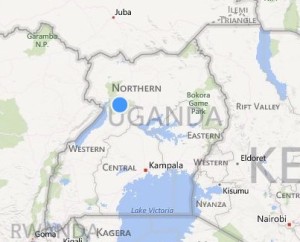 Well! While I was in Uganda, I HAD to do a photo safari, right? And safari I did! I chose Murchison Falls State Park, in north western Uganda. However, in keeping with the “winging it” flavor of this journey, I did NOT book a tour. No, I did not. Instead I borrowed a pick up truck, paid for gas, and hired one of the NGO’s talented drivers, David, to haul me around. So, on the cheap, I had a personalized visit to an amazing place, Murchison Falls National Park. I could go where I wanted, when I wanted and, within reason, stop and get out and get to know some of these animals up close and all personal like. I mean, what giraffe wouldn’t want an eager, slightly absent minded, foreigner coming up and saying howdy-do? Exactly.
Well! While I was in Uganda, I HAD to do a photo safari, right? And safari I did! I chose Murchison Falls State Park, in north western Uganda. However, in keeping with the “winging it” flavor of this journey, I did NOT book a tour. No, I did not. Instead I borrowed a pick up truck, paid for gas, and hired one of the NGO’s talented drivers, David, to haul me around. So, on the cheap, I had a personalized visit to an amazing place, Murchison Falls National Park. I could go where I wanted, when I wanted and, within reason, stop and get out and get to know some of these animals up close and all personal like. I mean, what giraffe wouldn’t want an eager, slightly absent minded, foreigner coming up and saying howdy-do? Exactly.
David, way below at the end of this post, was astonishingly patient with me, only getting firm with me about what I should not do…just a few dozen times. For example: “Sir, the lion may LOOK like she’s resting and calm and chill but do NOT get out of the truck.” Harumph.
So there’s not much commentary here, I hope you just enjoy the animals as I saw them. There’s a hand held shaky 30 second movie of giraffes if you stick with the scrolling long enough. All pictures are mine, taken as close as I could get without annoying David. And presumably the animals.
This is part 1, the land animals in Murchison. Part 2 will be the Nile river animals. Part 3 will be the rhino preserve about an hour east. Fun!
You can’t really get an idea for how expansive Murchison is from these pictures, all told it encompasses almost 1,350 square miles, and the skies are just Wyoming big. This is the sort of landscape here.
Our strategy unfolded thusly: David would drive the truck down “barely can call them roads” and I would yell STOP. Frequently. David would sigh. Stop. Watch me get out of the truck. Watch me take photos of dirt. Or some animal that he’d seen a million times before and held about as much fascination for him as a groundhog would for us North American types. On occasion he would urgently “ask” me to get back IN the truck. We did this no more than a million times.
This guy is a Ugandan Kob. In both pictures, he is proving to be camera shy.
This would be the Hartebeest. Pretty big guy. One seemed to like me. The other, bottom right, I couldn’t seem to make a connection.
Waterbuck. A stout ruminant. We’ll see him again during the Nile River shoot.
Now who doesn’t like a gruff, standoffish warthog? I mean he/she carries birds on her/his back and he/she lets little warthoglets hang around. (I did not check the gender of these noble beasts. I thought it would be impolite.)
Okay so now we’re getting to exotica! Let’s start with the lugubrious giraffe (I may be using that word incorrectly).
All of these pictures were taken from the seat of my truck. David thought it would be imprudent of me to chase after them for that perfect shot. Still, they were RIGHT there, maybe 20 meters at times, from the road so I was giddy!
There are over 2,400 giraffes wandering around Murchison. I have to say, while I appreciate the role zoos play in our world, watching these animals just….roam…with no wall or fences, left me feeling sad. Even the best zoos, like San Diego’s, with all of their “humanely designed confinement areas” can’t possibly even mimic what I saw in Murchison. On the other hand, the rhino was poached to extinction here in 1983. And only with the help of rhinos in zoos are they making a comeback in the wild (see part 3 of this series when I visit the rhino preserve.).
And now, as a special multimedia treat, I offer you…. a shaky hand held 30 second video of giraffes!
What else do we have?
Ah yes. Our friend the Cape Buffalo. The first of our “Big Five” African mammals viewed on this expedition. The “Big Five” is apparently a marketing thing, or a blast from the past when people would shoot these fine creatures (I guess some still do). The Big Five are the Cape Buffalo (above), Elephant, African Lion, Rhinoceros and Leopard. I never did see a leopard, regrettably. (I did spot 2 hyenas running along the landscape, too far to photograph, but …well…okay. NOT the same as a leopard.) I shall provide you with lovely shots of the rest.
Starting now!
What’s not to love about a momma and baby elephant?
I’ve been really fortunate that I’ve now seen both Asian and African elephants. Spent a day with Asian elephants in Chiang Mai, Thailand, and although they weren’t truly wild as the African elephants here, they were not caged nor abused. Which goes a long way for an elephant these days. I got to within 30 meters of Mom and Baby. 🙂
Okay, now for a demonstration of Nature’s amazing camouflage. Spot the lioness…
No? How about this one?
This is what she looks like, from 20 feet (and, thanks to David, from INSIDE the truck).
Now go back and see if you can find her!!!! It’ll be fun!!
And if you really can’t, click on this small photo and smack yourself on the forehead.
So how, you may ask, did we find this needle in a haystack? A resting lion under some shrub, barely visible, in a park of some 1300 square miles? Well…I hired me a guide with a mobile phone who had a bunch of other guide friends with mobile phones who told her where it was, that’s how! Best $30 I ever spent. We also got up at 6am to get there. Really excited to see a live wild lion. Even with David nervously telling me to roll up the window.
That was a lot of excitement for one day. So we headed out of the park (the river cruise that I’ll post next actually happened the day before). But on our way out we had one more surprise!
What could it be? Surely it will run off before we can get close enough to see!
A baboon! And he’s…he’s not moving out of the way?
No. In fact he never moved. We pulled up right next to him, 3 feet away. And I rolled down my window and took this shot. He barely looked at us. David wasn’t happy but even he could see this primate had zero interest in us.
This was as close as I got to any animal. I would have reached and and pet him on his furry little head but, well,…my driver seemed anxious.
And then we left. This is David negotiating our exit. You see, when you enter the park you get a time stamp, and then you have to leave by 24 hours, or to pay for another day. We were, maybe 15 minutes late and thus….negotiations ensued. Before the guard lifted that gate he and David talked for awhile. I don’t believe any money exchanged hands because I never got a bill. David was/is a really good guy. He was a great driver,and traveling companion. I would NOT have been able to the have the experience without him. Good guy!
And that was Part 1 of this Ugandan nature adventure. Part 2 will be about the river cruise we took (WITHOUT the cheesy guide like they have in Disneyland Jungle Cruise, but most of the same features), and Part 3 will be about the visit we made to see 14 rhinos that are the first rhinos to live in the wild in Uganda since 1983. Stay tuned!
Apac is in the northern part of the country. It’s in the region where Joseph Kony was kidnapping kids to be sex slaves and soldiers, and hacking off arms of people he and his followers didn’t like. But that was 10 years ago, and the largely rural people are trying to make a life again. It’s hard going. I saw people walking around with half arms.
I was there to do what I could to support an NGO (International Lifeline Fund) that had been successful in supplying camp stoves to refugees and digging clean water wells near villages. Since the wells had been successful, the villagers now have more time available and so I was asked to come up with a plan to teach them small business skills so they could make more money with that free time. So I did what I could. What impressed me the most was how many smiles I saw. Maybe it’s because nobody has much (walking was the norm, some had bicycles, and a very few had motorbikes. Only NGOs and businesses had trucks or cars.), and so there was an equality that is missing in the US. As part of my work I visited and interviewed two villages about what they thought they needed for small business education. One village greeted me with a wonderful dance, waving branches, and singing as they walked me to my seat, clearly they had been waiting for me. A boy, maybe 1 year old, started to cry and his mom had to talk him away. I found later that I was the first white man to visit their village (really? It’s 2015!) and the little boy had been scared of my white face. I was stunned.
I had the meeting, with the help of an interpreter and before I left the village women sang me song and again danced me back out to the road. I was very honored that they treated me with such respect.
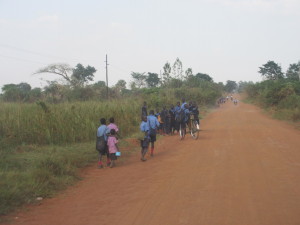
Everyone walks in Apac, long stretches of red dirt roads. Some have bikes, but most walk. These are kids walking home from school.
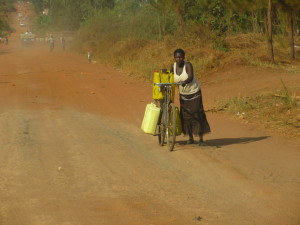
Water is scarce, so everyone has to go get it. Until the last 10 years or so, they’d have to travel long distances, maybe 5km. But with a government program called “Universal Coverage”, NGOs and govt groups have installed wells and pumps so that, at least in theory, no one has to walk more than 1km to get water, and every well serves no more than 300 people. This woman, with her bike, is bringing a few 5 gallon jugs back to her family. Usually they carry water, but she has a bike, owned or borrowed, for the task.
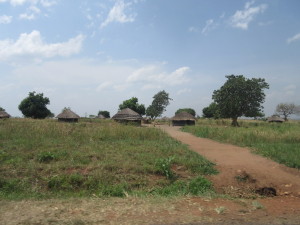
Typical village, a grouping of these homes, set back from the road. This group of buildings was probably for an extended family. Mom and Dad slept in one, kids slept in another, kitchen living space in another, although it was warm and dry so much that the space between them served as the living room.
Stay tuned for this entry….
I don’t know about you, but my first introduction to the life of Gandhi was through the movie Gandhi, by Richard Attenborough. I then bought books and read them, notably William Shirer’s Gandhi: A Memoir, and Richard Attenborough’s collection of Gandhi’s quotes, The Words of Gandhi.
So when I went to New Delhi, learning more about him and his life and his assassination became something of a Quest. My first day out was a FAIL, and I somehow ended up in Rajiv’s Gandhi’s memorial site. Wrong Gandhi. (But while I was wandering around central Delhi, quite lost yet still game, I did stumble across the impressive Humayun’s Tomb and made a good afternoon of it. )
The next few days I got what I was after. If you’re thinking about visiting, here’s my TripAdvisor entry to explain the 4 different confusing sites.
Right. So following are 20 pictures that I took that I hope you’ll like, or at least find interesting. I’m not going to do a biography of the man, see other sources!
I visited 4 sites devoted to Gandhi and his life. The older National Gandhi Museum, the Gandhi Smirti, which is a newer museum on the grounds of the Gandhi Research Center, Raj Ghat which is the official Gandhi Memorial, centered around his cremation platform, and the Birla House, where he last stayed and was assassinated. (If you’re using this to get around, be careful. What I’m calling the Gandhi Smriti is also in some places called the Gandhi Darshan, and the Birla House is also called the Gandhi Smriti. I could never figure out what was going on. According to Google Translate “smriti” means “memory” and “darshan” means “visit”. Google Translate is probably wrong about that. Good luck!)
When you enter the older National Gandhi Museum, you are struck by time. I didn’t check it out, but I felt like it had been set up in 1950 and not really touched since. The sign above was at the entrance and kind of sets a high bar for humans, I think. But it’s hard to deny the basic truthfulness, for me.
The Gandhi stuck in my imagination is the older Gandhi, in simple robe and sandals, very ascetic looking. Wise old man. But what I realized going through this Quest is how much of the real work he did as a young man, dressed like this. And I was struck also by how solidly he held his views. In one trial after which he was sent to prison (he went many times for annoying either the South Africans or the British), he had this to say to the British judge (the trial was about him breaking the law by publishing “seditious” articles in widely distributed magazines).
The judge, in response, said that he hoped that the law would be changed and that he would see the day when Gandhi would be released from this sentence. How many judges have said that to YOU when you’re standing before the bench?? Uh-huh, I thought so.
During his 1930 Salt March across India, he sat in this bench and addressed the crowds that followed him. Quick review: keen to raise awareness of the dependency the British had imposed on Indians, he needed a highly visible act of civil disobedience. So he decided to lead a march 240 miles across India to the Arabian Sea, collect salt extracted from the waters and then distribute that native salt to people instead of the British salt. It was not an easy trip, with many beatings by police and thousands arrested. So when he sat in this bench, the eyes of India, and the police, were watching. Remember a long post ago when I mentioned that I like to be in historical places and imagine what it was like to be there in that time? Standing before this bench, which he sat in at the early start of this man’s mission, 17 years before India would finally get independence, gave me chills. On this bench is where a man, his passion and his words inspired millions. In the village of Venjalpur in the state of Gurat. In March 1930.
This was the walking stick he used on that march. and below are the sandals he wore (not clear from the museum if he wore THESE sandals on that march in 1930 or he wore THESE sandals some other time, but they are located in the same display.) I’d say he was about a size 8. Small feet.
And below is the boat he used at the end of his march, in the Arabian Sea.
Another huge act of civil disobedience was the spinning of wool into cloth. At the time, the British forced Indians to buy cloth made in England, which put all the small spinners in villages across India, out of business. “Khadi” means handspun and handwoven cloth.
And so Gandhi would spent hours setting the example by making khadi.
Sorry for the poor photo quality, the display case hadn’t been dusted since 1950.
In the last 144 days of his life, Gandhi stayed at the Birla House, in New Delhi, which you can visit if you like.
This is where a militant Hindu man assassinated Gandhi on Jan 30, 1948.
The watch he was carrying at the time.
I apologize if this image is disturbing. It’s the bullet that killed him.
The outpouring of grief went around the world. The museum had quotes from leaders – political, spiritual, scientific, literary, musical – expressing admiration. Albert Einstein’s was perhaps the most famous: “Generations to come will scarcely believe that such a one as this ever in flesh and blood walked upon this earth”.
The funeral pyre then…..
And today, at the Raj Ghat.
What’s been so meaningful for me on this year’s journey, has been standing in the places where such sad human history has happened. Hiroshima, Korean DMZ, Tiananmen, Cu Chi Tunnels in Vietnam, Killing Fields in Cambodia, Uganda’s Apac region (where Joseph Kony had operated for so long), the Westgate Shopping Center in Nairobi (still closed). And while the sadness overpowers, time moves on. Hiroshima has an amazing anti nuclear museum. Tiananmen, well…mixed but no denying that the aspirations of those Chinese students in 1989 for more freedom is becoming more real for more Chinese who now have at least economic freedoms they never had. The people of Vietnam, Cambodia, Uganda and Kenya, while still struggling, at least can have open conversations and hopes that they couldn’t have during those hard times. And the people I’ve met in those places have shown me very sincere generosity, integrity, hope and, yes, humor. Most still do thanks to Facebook and emails.
So being in the place, with even the shoes, of Gandhi’s memory affirms my belief that we can figure all this mess out. I wasn’t really planning on getting all philosophical here, and it’s definitely something I’m going to think more about.
For those of you who have also been in historical places like this, what have you taken away? I’d really like to know. Thanks.
Boy, it’s been a long time since I had a chance to write a post. Last time we talked, I had just explored the soft underbelly of late night Calcutta, at least the part of that underbelly owned by crazed taxi drivers named Manoj.
I survived, but barely.
Calcutta was a challenge for me. I languished 5 nights in the 233 Park Street Hotel, 4 of those fearing food due to the Community of Molecules that took up residence. However, on my last day there I managed to hire a driver and car to cart me around to see the place. I’m still not sure what to say about Calcutta. I did not feel good there. The poverty and urban decay got to me. I tried my hardest to get past it, to find the beauty that I want to believe exists every where. But …I just couldn’t find it there. Victoria Hall showed what the British could build back in the time of Queen Victoria.
Mother Teresa’s House inspired a sense of what’s possible. Watching people bathe and drink from the Hooghly River (a branch of the Ganges) reminded me of so many National Geographic stories. The green parks that housed many sports clubs, mostly cricket and football, gave the city a welcome respite from the dilapidated buildings, and desperation (at least as I projected it) of the people living on the streets. Every taxi ride required an intense negotiation (“you foreigner, you pay double!”, drivers actual demand after dismissing the legal meter reading). Few people I met spoke English well enough to get my basic intentions across. The two highlights of my stay in Calcutta was the hotel staff, and the visit to Mother Teresa’s House. So let’s talk about that one for a bit.
The place where Mother Teresa performed her near saint-gaining work sits on a busy congested street not far from my hotel at Park Circus. The day of my tour, we arrived at her main building, Mother Teresa House, at 12:15p, just in time to find out that it was closed from 12-3. My driver, the one who the hotel had said was a “good tour guide”, said he knew nothing about that. Still, I did get to sit in the room with Mother Teresa’s tomb, which gave me a chance to meditate on what I knew of her life and spirit just a couple feet from what remains of her. Encased in a solid white marble tomb.
I learned that she managed to create a world wide enterprise, with 517 missions in more than 100 countries (cite). I had no idea how entrepreneurial she and her organization was, ignorantly I thought her work was focused in Calcutta.
So, here’s a conundrum I have this journey: how to deal with beggars. One of the signs in Mother Teresa’s House asked that visitors NOT give money to the beggars who sat outside the door, showing you the way to the House’s door. Giving money to the beggars also created weird feelings for me. On the one hand, what was 50 cents or even, cumulatively over a hundred of them, $50 to me? On the other hand, I heard time and again how the young mother holding a crying baby at the window of my tuk tuk, beseeching me for just a few rupees, would not, in fact, get much of that money. She likely worked for someone who “ran beggars”, and took most of the money. And then the sign in Mother Teresa’s House advising me to NOT give money, for reasons not explained there. My life’s purpose is to relieve suffering and raise dignity, so I took that advice to mean that giving beggars money will not increase their dignity. Of course, not eating that day doesn’t either, so ….this remains a conundrum for me. My policy in the US is to give $1 and a genuine smile to pretty much anyone who asks for it, without wondering how they will use the money, just because I don’t like ignoring people in dire straits. And I don’t want to have to think through this every time! But in India, heeding Mother Teresa’s request, I just gave the smile. Still not sure what the right thing to do is.
I also liked the Indian Museum because of its extensive collection of old Buddhist statues and art. It also had an astonishing collection of stuffed animals (elephants, gorillas, tigers, lions, chimpanzees, etc.) all, it seems, collected by British explorers in the 19th century. Kind of creepy, actually. See my TripAdvisor review here.
One last note on Calcutta. I bought a SIM card for my phone here, but it never worked. Evidently, after the 2008 Mumbai terrorist attacks the government passed laws requiring about as much vetting for a phone that the US requires for buying a gun. Background check, passport and visa check, and a 3 day wait. Well, for some reason, the guy that took my info at the store didn’t do it right, or at all, so my number never worked. I’ve grown accustomed to using GPS for navigating around new cities, so this kind of put a crimp in my game in Calcutta. And in Delhi too. After several (predictable) false starts in booking a room in Delhi, I found one that was willing to send me a driver. However, also predictable for India in general, they weren’t exactly speedy about arranging and getting back to me, so the end result was that I left Calcutta with no idea what awaited me in Delhi. All because I didn’t have a working SIM card. Sigh…
I’m glad I went to Calcutta, but I have no plans to return.
Here are some more pictures of my time in Kolkata:
(This one comes mostly written, because taking pictures during the following drama took a backseat to getting through it. I think you’ll understand. I have, however, stolen some shots from various sources that mostly accurately depict my experience.)
The 14-hour move from my room in Bali to my room in Kolkata was one of those adventures that I will recount to my grandchildren some day, with boring smugness, as I bounce them on my knee.
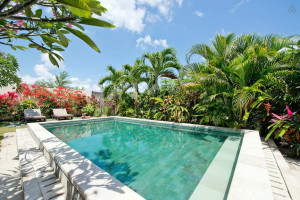
This was my view from the LEAST pretty place I stayed at in Bali. Keep it in mind as we move through this…..
Setting the scene: I’m in Bali, which – despite my first post – has a LOT of appeal. Friendly, beautiful, easy-going, clean air, and if you look for it, the kind of paradise you have in mind. Before that I was in Chiang Mai, Thailand for 2 months, which had similar qualities other than proximity to an ocean. In fact, my last 4+ months in SE Asia have been, in retrospect, very relaxing.
As I looked toward India, I sensed something different was on the horizon, and honestly, I am dubious about this next leg, from a “relaxation” point of view.
Tuesday, Feb. 14, Valentines Day and my Dad’s birthday (Happy Birthday again, Dad!), Marlen, my Bali innkeeper, offers to take me to the airport and everything goes well.
(As an aside, I enjoyed the entertainment of being in the passenger seat with Marlen. She drives between 8 and 18 mph, bursting ahead then braking and wobbling randomly, so watching the reactions of drivers around her is worth the price of admission).
I get to the airport early, check-in goes smoothly, I get my emergency row window seat, and it turns out I’m the only person in that row. Plane leaves on time and flies through fluffy white South Pacific clouds with mysterious green islands below. I’m feeling content.
Arrive in Kuala Lumpur, easy. Long-5 hour layover. Strange that they have NO power plugs available in the airport, this being the age of electronic devices with meh batteries. But I find an unused plug in a booth for a future ATM machine, and plug in.
(Another aside, an alarming portion of my meager luggage is allotted to electronics. I have chargers, adapters, USB cords for every situation. This provides an opportunity to be neighborly when a fellow traveler, a man traveling with his little daughter and wife, gazed covetously at my set up. His iPad was dead and he needed to power it up just enough to make an important phone call at his destination. So I rummage through my bag of accessories and pull out the right assortment to let him power up in the plug next to mine. We ended up having a fun conversation about family, work, and travel. He was Pakistani, his wife was English and converted to Islam, and they were living in Adelaide, Australia. I just think it’s cool how easy it is to connect with people of such diversity, and all while we’re waiting for 21st technology to power up, sitting on the floor of a distant airport.)
Anyway, back to the story, which is taking a long time to get to…. So I eat dinner, ordering the dish in which I recognized the most ingredients. It’s the only restaurant in this international terminal, which is odd, but the dish was tasty. However, lurking in that bowl of curried chicken, tofu, noodles and whatever else was a sinister Molecule, or perhaps a whole community of them, just waiting to get to work.
As we prepare to board the flight to Kolkata (“Calcutta” is SO colonial, don’t you think?), I sense a change in the air. An intensity, a competitiveness, as everyone starts to crowd the front of the gate, elbowing each other for position. The Malaysian counter clerk, clearly used to this, says in a very loud and authoritative voice, “You must move back behind that line. You will not get on the airplane until you do.” She said this no less than 8 times. I counted, but I might have missed a few as I was getting jostled as people tried to appear like they were accommodating her, but decidedly not giving up position. I, for my part, had been told by this very counter clerk to stand near the front since I was boarding first, given my emergency row seating assignment.
My sense of dark foreboding grew.
The flight itself was okay: 4 hours, mostly I slept. But there WAS one thing that rankled. – by itself, no big deal, but things were starting to accumulate. India is 13.5 hours ahead of San Francisco time. That .5 gave a slight nudge to my already increasing sense of impending disorder. So when they announced the time in India, it was… odd. Meanwhile, about halfway through the flight, I noticed ominous gastroenterological rumblings. The community of Molecules from dinner was starting to make its move.
We land, on time. For this second flight, I’m in the aisle seat and as soon as we land, the guy next to me – who held quarter for neither personal space nor deodorant – jumps up and pushes over me. The woman in front of me blocks me by putting her arm over my seat, apparently to clear a space for her husband to get out, which was totally unnecessary; no one was going anywhere until the doors opened. Furthering the slow demise of my usual Zen-like composure: the Molecules are in full operation now. It was just a matter of time….
We get off the plane, and I make my way to the Visa Upon Arrival station. I’m expecting no problems, I have the confirmation email on my phone, ready to show to the nice friendly welcoming man behind the counter. Except he’s not nice, friendly, or welcoming. He’s surly and judgmental. He wants that email printed on paper. I have no printer with me and, spewing disgust, he barks, “We have no printer here, stand over there!” Well, I would have, except the Molecules have other ideas. I excuse myself.
When I return, he resumes his reproach but also produces a blank sheet of paper, and asks me to write all my information from my email on this piece of paper. Fine. I do it and take it back to him. He grudgingly looks at it all and then his face lights up with fresh indignation: “You have not put your exit flight down!” Well, I hadn’t booked it yet, and told him so. “What? Why not? You need to have an exit flight!” Me: “Well, I don’t. Because I’m not sure where I’m going after India. So what can we do about that??” (The grasp on my Zen-like composure was growing ever more tenuous at this point. I WILL own that those are the rules, that I should have printed the email, and that I was supposed to have an exit flight, but….I didn’t. I just didn’t. (I wasn’t worried, though. I’ve been traveling enough to know when certain rules are unnecessary to follow; it just takes some resolve to push back against the bureaucracy! And so I pushed.)
He eventually stamps my Visa in my passport, and says “You have to leave by March 9! Welcome to India!” THEN he smiles. I thank him obsequiously, thinking only of getting back to my new favorite place in India, the second booth on the right in the men’s room.
Once I have my Visa stamped, the rest of the immigration process is easy. In fact, no one wanted to talk to me. “Why are you here? You HAVE a Visa!” Fine. I move on. Thanks for the warm reception.
Now, when I began this journey, I realized that landing in a strange country alone would not be ideal. I’m a social guy, and probably not the smartest traveler (too naïve, I suppose), and I get lonely. So I’ve mostly been able to arrange for someone to pick me up at each new airport. Usually that’s someone from the nonprofit I’m going to be working with, but, as with Bali, even just a trusted taxi driver holding a sign with my name on it makes me feel better. I tried to do that here in Kolkata, but it kind of fell apart. The Executive Director of the nonprofit I was going to work with emailed me shortly before I left Bali – after I’d booked everything – that she had to go to New Delhi and couldn’t meet with me. At all. I did get a recommendation for an area of Kolkata to get a hotel, so I checked TripAdvisor and got one. And I asked the hotel to send someone, or at least arrange for a taxi driver to show up with a sign with my name on it. I WAS arriving at 1am, after all.
Well, all of that fell through, so I end up coming out of the airport terminal, at 1am, in Kolkata, with no one to meet me. In my pocket I have a credit card, an ATM card, and about $80 in Indonesian rupiah. I see an open currency exchange window and hand over my rupiah. He shoves it back and barks, “We don’t take rupiah.” (Tip to you travelers: Always carry $50-$100 US currency for emergencies!) I find myself starting to explain to him that the rupiah is a legitimate foreign currency, and that the Indonesian currency crisis of 1997 is WAY behind us, and then realize that he just… doesn’t… care. Fine, where’s the ATM? “Over thatttaway.”
Let’s review: It’s 1:30am on a Saturday night in the Kolkata airport, a surreal empty cavernous place with eery, low fluorescent lighting. I sat 4 hours next to a stinky man slumping on my seat as he slept, I’ve been gruffly “welcomed” into the country, I’m all alone, I have no local currency, and I’m exhausted. I have a community of malevolent Molecules in full production mode wreaking havoc in my gut. And now I’m facing the increasingly daunting task of getting to a hotel that I have never seen, in some random part of a city I don’t know. Still, I’m breathing, so I smile to myself and think, “Remember, you PLANNED all this. Man up!”
I spot the “PrePaid Taxi” stand, which is also the Kolkata police booth, and I ask if I can use my credit card to pay the fare. Nope, of course not. Only cash. Right. I trudge over to the ATM. Well, at least I’ll have cash soon, I think. Card in, run through the routine, paper spits out, “Can’t complete transaction.” I try again. Same thing. I try twice more, same thing. Grrr…. I step out and I see only one other ATM, outside the terminal, across the dark street, through a group of at least 40 shadowy men standing around. Sigh…. I head out, dodge the chaotic traffic at the pick-up lane, and with full pack on my back, and defense abilities down to 10 points, I make my way through this throng of sullen-looking men. I think they were taxi drivers waiting, but still, dark thoughts surged through my tired brain. I step into the ATM and shove in my card. Run through the routine, paper spits out, “Can’t complete transaction.” I try again. Same thing. I try twice more, same thing. GRRR.
I step back out into the chaos. No other ATM in sight. So I go back to the terminal and am told by a very edgy military type, “You can’t go in there!!!!” This is not regular security, this guy has a machine gun, so I decide to not argue with him. Without smiling he ushers me rather forcefully out back into the dark night. Sigh…. Then, random guy – the first nice one I’ve met – tells me to go down to door 3C to get back in.
At this point, I have no money. No way of getting money. And no way of getting to my hotel. And of course the Molecules were happily making themselves home in my gut, with my favorite place in India unreachable. Things are looking not too good.
A solution existed, I just hadn’t found it yet. I mean, it was inconceivable to me that I was stuck in this airport like some Tom Hanks character. Thinking maybe I could do some bartering with the PrePaid taxi clerk (the fare was only $2.50), I start to go back into the terminal, and more military types stop me. Where’s my ticket? Well, of course, I don’t have one. I start to explain myself to the man with the machine gun, getting a little more didn’t go anywhere, but a man, Manoj it turns out, overhears me. “I’m a taxi driver, I’ll take you.”
Now, I’ve read all about opportunistic, smiley “taxi drivers,” and my antennae were in full buzz. I step away from the men with machine guns and approach this man. “You’re a taxi driver?” “Yes!” “You have a real taxi car that you use for the PrePaid Taxi service?” “Yes!” “I don’t have money, but I can get money at the hotel I’m going to.” “Okay!”
The only reason I go through with this, through the throng of shadowy sullen men, into an equally shadowy sullen parking structure, popping along like the naïve relatively rich (but cash poor!) big white foreigner that I am, was that I had seen him go up to the PrePaid Taxi window, where the drivers go to turn in their receipts for fares just completed. This is how they get paid. Customer pays the service money and gets back a receipt with the taxi number on it. Taxi driver delivers customer and customer gives this receipt to driver, who then exchanges it with the service for cash. I like this system, and the fact that I had just seen him do this gave me just enough confidence to follow him out into the dark. His motivation was twofold: He could negotiate a bigger fare than he’d get with the PrePaid service, and he didn’t have to wait with the throng of shadowy men for his turn for a fare, which might not come for hours. I decide to use this leverage to my advantage, and it sort of worked. We finally get to his car and am relieved to see it is a full-on metered taxi cab. Phew! Then I say, “OK, how much?” He says 600, I say 400 (which I knew was double the PrePaid fare he would have gotten). He says okay. Of course, halfway through the ride he says 200 more because it’s night or we stop here. Fine, whatever, 200 rupees is $3; I am NOT going to get myself abandoned in Kolkata, at 2am, with overzealous Molecules at work, over $3.
The ride was quite exciting! I had no idea a taxi could drive so fast, honk so incessantly, or veer around cars, trucks, dogs, beggars, and trash with such nimbleness! After the third red light he blasts through, I ask, “Don’t you have to pay attention to red lights?” He laughs, “What red lights?” Check mate. With such powers of denial, life would be much easier. I search for my seat belt. No seat belt.
After about 20 minutes of driving to a hotel neither he nor I know the precise location of, we show up in “Park Circus,” which is where it is supposed to be. The directions the hotel gave me didn’t mean much to Manoj, so we start going back and forth across and against traffic, and as we pull over to think about it, we stop right in front of the hotel. I blink at the good fortune, not sure what to make of it. We pile out of the car – leaving it illegally parked, of course – and the nice man at the hotel check-in counter says, “Yes, we’ve been expecting you, but no, we have no cash for you.” Taxi driver Manoj looks at me. I look at him. Awkward silence ensues.
Well, I decide, let’s go find an ATM! Manoj is up for the hunt, so we pile back into the taxi and start driving around Kolkata at 2:30am looking for an ATM. Now ATMs in Kolkata are not the same as ATMs in the US. They are hidden, they are often in very dark corners of random buildings, they work maybe sometimes (evidence: airport ATMs), and they are fickle. By fickle I mean they each have different limits and they each hand out cash in different denominations.
It takes us 15 minutes and 5 ATMs to get 1000 rupees. His fare was 600. So we drive on back to the hotel, and I ask the hotel clerk for change. He says, “No problem!” and pulls out a wad of cash. This, the same hotel clerk who 15 minutes earlier said they had no cash. Hmmm…. I pay Manoj, and I even toss in an extra 100 rupees ($1.50) for driving me on spec and showing me such a good time.
Manoj takes off. I’m shown my room (which is fine). And… I eye the bathroom.
Welcome to Kolkata!
Update: To show you how far my brain had shut down through all this, I found $50 US in my pocket after all of this was over.
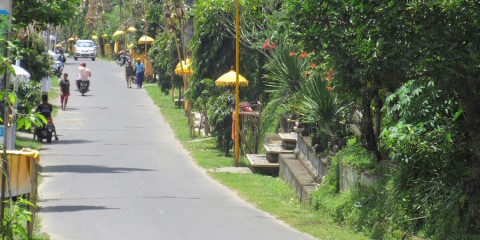
Tagalalang, Bali, Indonesia
In my last week at Bali, I took a lot of pictures. Around Ubud and in Pemuteran, mostly, but a few around Seminyak again as I did some businessy stuff before my flight out. Rather than provide another long insufferable writing piece, I’m going to offer up some shorter peppier photo essays. I use “photo essays” because it makes what’s about to happen sound fancy.
The first one: my lucky discovery of a Full Moon Festival in the town of Tegalalang just north of Bali. I had decided to go on an extended motorbike ride, cause it’s so much fun, drove past the rice terraces and noticed on my GPS that there was a little road that circled back to town through the country side. Perfect! Lovely drive, plus I happened to do it during a special day called Purnama., or Full Moon Festival. I came across this little village and the place was a’bustling! I parked my “iron horse”, and as I walked into a temple, a very nice man pulled me over and told me I had to change my ways if I wanted to stick around. Namely put on a hat and wear a sarong, which he gave me. So, I did that and wandered around the festivities, talking with people who were very friendly and welcoming. In fact, one guy pulled me over to a beruga (sitting platform) and offered me coffee. I ended up chatting with this group of men, who were taking a break from all the setting up, for about half an hour. All were interested in where I came from, and why I was there. Compared to other white visitors, an American was a relative novelty here, it seems. One guy wanted to talk Elvis. Another Arnold Schwarzegger. Another about the climate in America. I in turn asked them about the festival and about their families. Their English wasn’t great, but leagues better than my Balinese or Indonesian. (Evidently, English is mandatory at schools here until high school, and many take more classes so they can interact with tourists). Anyway, I promised a photo essay, so here it is. My shots taken before the festival (which wasn’t going to start until later that night). The temple is called Pura Sanghyana Alang and is in Tegalalang, Bali, just north of Ubud.
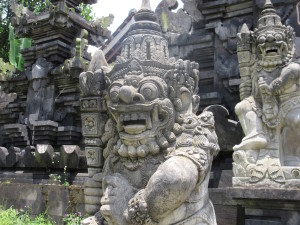
Puras all over Bali have various statues from both Balinese Hinduism and the older animism. This one was guarding an ancillary temple, where the people were preparing everything for the Pura.
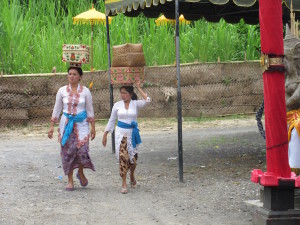
Women carry nearly everything on their heads. In this case, they are carrying offerings to the temple on their heads, because the head is the most sacred part of the body. So, not only is the head a good place to carry stuff, it’s respectful to their worship.
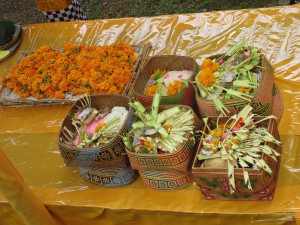
The ubiquituos offering bowl. Women, mostly, put these out before every meal, at the driveway, in front of businesses, on temples, on the street,….everywhere. Always has these kinds of ingredients plus incense burning. (As with all these photos, click on them to make them bigger)
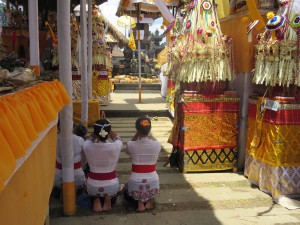
Women praying before they go into the temple. There isn’t ONE altar, like with Buddhism or Christianity. They have multiple altars, and while I couldn’t figure out why, it seems that they do serve different devotional purposes.
I didn’t take as many pictures of people as I could have, because I don’t have that nosy photojournalist mojo going for me. Plus, I really thought I was being intrusive to take pictures of people while they were going about a sacred endeavor. Maybe not, but…still.
Back on the road, I took a lovely hour long ride through the countryside. And here’s what I saw!
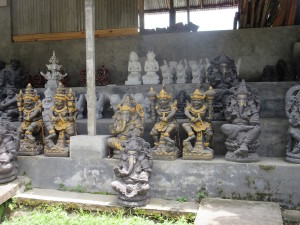
North of Ubud there is whole district of small factories, workshops really, that make the stone walls, towers and whatnot that temples need.
Every village has at least three temples. Every village. That’s a lot of temples, not to mention all the big ones and tiny ones, nor all the shrines that most families have in their homes, somewhere. So there’s a thriving business for temple replacement materials.
Since you asked, the three purrs are:
Pura Puseh: A temple dedicated to Lord Vishnu (the preserver). Vishnu can take on different incarnations, and can move freely between the earthly world and the heavenly world. All Pura Pusah are located at the upper end of the village, as the river/stream runs. Vishnu’s ability to settle the outburst of evil powers makes him the right deity for the entrance to the village.
Pura Desa: A temple dedicated to Lord Brahma (the creator). Pura Desa are located in the middle of the village, and people gather there to pray as well as hold community meetings. Lord Brahma is the god of creation, so he’s a good one to have on your side.
Pura Dalem: A temple of Lord Siva (Deva Siva), the destroyer. Pura Dalem guard the downstream exit / end of a village. Believers believe that Siva purifies ones ancestors and converts them into deities. He judges the good and evil deeds of a person and decides the punishment/reward. So, again, good to have on your side.
I talked with a Spanish hotel manager, who has lived in Bali for 2 years, and he told me that Balinese spend up to 1/3 of their annual income on donations to support their religion, including temple maintenance and the ceremonies that happen at their pure. That seems like a lot for a relatively poor population.
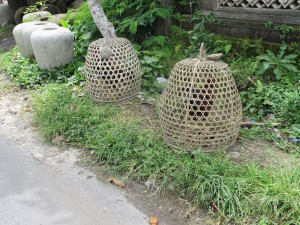
Roosters under basket arrest. I couldn’t figure out exactly why they do this. I know they keep roosters for the hens, they sell roosters to other farmers, and they also – long tradition here – sell roosters for cockfights.
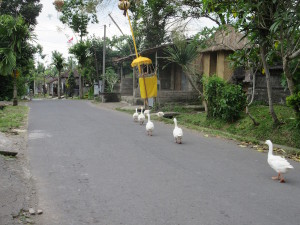
Toward the end of the drive, I came across these guys. They seemed to be intent with their march, but I had no idea where they were going. Didn’t mind me motoring by.
And that was it. Soon thereafter I entered Ubud, and bought a Coke Zero. 🙂
Fleeing the Madness.
After about a week in Seminyak / Kuta, I had had enough. I LOVED my lush digs with Marlen, but I had been completely denied in my desire to have a “Bali beach” experience. I was reading up on where to go next, and got curious about doing some scuba dives. (Aside: I’ve been saying that 1/3 of this trip is being a tourist, 1/3 is doing pro bono consulting for nonprofits, and 1/3 just going with whim. This one goes in the “whim” category. I had no plans to do this before I saw the brochure.) Getting PADI Certified has been on my bucket list (ever growing, it seems) and for a reason I can’t remember I settled on Bali Hai Diving Adventures. It was a whole package (resort stay and certification course), and it was on an island far away from Kuta. So I signed up, got picked up at Marlen’s by their driver, dropped off at the dock, boarded, and the adventure began!
The ferry ride was a bit odd. Nice boat, as far as ferry boats go. But this one had a 4 piece band on deck playing Beatle’s covers. For a 40 minute ride. They even had time to take a short break in the middle of their set. Hmmm…
Bali Hai Diving Adventures. We arrived at Nusa Lembongan (Nusa = Island), and before we even made it to land, we docked at a big platform, donned wetsuits and took a dive! Our first of 4 required dives. Really really cool! Rosie, our dive instructor, from England, was superb in every way. Smart, friendly, funny, skilled, and talented! So over the side we went! (my TripAdvisor review is here).
For those of you who have been PADI certified, you know how it goes. For the rest of us, it’s just not that hard. You learn how the reasonably simple equipment works. You learn how to not kill yourself. You learn how to not kill your buddy. You learn how to not kill the aquatic life. And you learn how to put on extremely tight neoprene tights. And look good in them. There’s other good stuff, like buoyancy control, gas contamination, O-ring inspection, damn dive tables (still!), and knowing when a trigger fish is angry and when it’s merely grumpy. And, thanks to Rosie, it was all easy, fun and occasionally hilarious. I was 120 feet under the surface, and it was amazing.
Bali Hai Beach Resort. During the course, I stayed at the Bali Hai Beach Resort, at about $147 / night (way out of my price range on this trip, but I think I got a deal for doing the scuba package). You get your own bungalow with A/C, with two pools, beach front, nice lagoon view outdoor bar/restaurant. And very friendly staff. Nothing bad about this place, but it is pricey for this part of the world.
Rama Garden Bungalows. After the course was over, I decided to check out the north end of the island, and booked a lumbung (traditional Balinese hut) through airbnb at Rama Zen Garden Bungalows, for about $30/night. Very clean and modern. Some have no A/C but mosquito netting around the bed, which I loved. And the outdoor shower and bathroom (underneath the bedroom) was well designed, modern and fun! Made me feel Bali that much more. There was something …connecting…about sweating at night under a ceiling fan, open windows, yet safely within the netting. And the lizard, that I’m saying is a big gecko. When you hear a loud croaking sound, directly above your bed, it’s just the friendly neighborhood gecko . He is harmless. And he is lonely. Imagine it’s like a frog in the summer time.
I really liked the host Trinity and her staff at Rama Gardens. She’s partly from Houston, so English clearly wasn’t an issue. And I loved that she was off surfing when I showed up! Her staff very capable of my check in, and was happy to make me anything I liked from their kitchen but excelled in tasty and healthy smoothies and fruit shakes. Meals were all healthy too. The special breakfast for guests was $4, two eggs, fruit, toast and coffee. As with most other restaurants anywhere I’ve traveled, if you order local dishes they are ½ – 2/3 the cost of “Western” dishes. Nasi campur costs $4. Pizza cost $10.
Rama Gardens has few amenities other than the restaurant, like a pool, but a mere 1 min walk down a funky path you’re at the beach and you can swim in the ocean. MUCH nicer beach than Kuta or Seminyak. On Friday nights, the local mostly ex pats, many dive instructors, show up from around the island to party at the Blue Corner Bar, which is a 3 min sandy walk from Rama Gardens. Nothing fancy here, just cold beer, an eclectic and simple but tasty menu, and lots of happy people who never again have to work in a grey cubicle.
Rama Gardens is kind of tricky to get find, but just trust your guts and your smartphone GPS, look for the signs, and you’ll make it. I rented a motorbike near Bali Hai Tides Hotel (south end of the island) and found my way. The trick – just keep driving until you think you’re on the wrong road, check your GPS, get back on track, and you’ll find it. Pretty good signage from the main road at the path to the place. You can also rent a “pick up”, but I was impatient waiting for the trucks to show up. (more on Lembongan taxi/pickups here). Full time local staff is very friendly and speaks English well enough.
If you REALLY want a Bali hut on the beach, I’d say look at Yoga Beach Villas. Same area as Rama Garden and Blue Corners Bar, but fancier (ie, a pool) and it’s on the beach (well, not sand under your bungalow, on the beach, but 10 short steps to it.
Nusa Ceningan. On my last full day in the island, I took my motorbike across the “Yellow Bridge” to Nusa Ceningan. Trucks/cars can’t go on this island because there are no roads for them. Just paths with some old pavement over rocks that largely has decomposed to roughness. But my rental motorbike handled it just fine. Key word: rental. As in Not Mine. It’s a very small island, so you take the circular path up a decent incline and have lunch at the Ceningan Cliff Rest Area (aka restaurant). Great view of the channel between Nusa Penida and of Nusa Penida as well. It was a sedate lunch for me, with the only other people being a German couple that didn’t want to talk with me (or couldn’t, who knows). Then a gaggle of Japanese students showed up and I was surrounded by bantering photographers. I was sitting at just ONE of the chairs along the table facing the channel, and I had, at one point, 3 such intrepids pointing cameras at me, and past me, from very close quarters. Like less than a foot. I remember fondly my time in Japan last summer, but I don’t remember that sort of frenzied descent on an otherwise serene viewpoint. Ah well, they seemed to be having fun, so what’s the harm? Anyway, a nice little tour of a different island.
Main road on Nusa Ceningan
As you’re riding around, on the coast, you’ll see the local industry out in full force. Seaweed cultivation! Seems every house along the way had long sheets of seaweed drying in the sun, sometimes near their house, sometimes in the road, sometimes…wherever there was relatively flat land. I didn’t figure out what they do with this seaweed, since none of the local dishes had it. Maybe export?
Motorscooter rental. Aim for about 50-70,000 per day ($4-6). If you run out of gas, don’t expect to find a filling station on Nusa Lembongan. Instead, look for the roadside Petrol businesses that will sell you a a liter or two of petrol from an old water or juice bottle. You buy it ($2) they pour it in your tank, and they refill the bottle later. If no one is at the stand, just leave 20,000, pour your own, and leave the bottle.
ATM. Since there is but ONE ATM on the island, with a location known only to locals, I advise you stock up on cash before you go to the island. If you must get to it, it’s on the road that runs to the beach just south of …well…never mind. Ask a local!
Bugs. There are mosquitos and flies. But not oppressively so. Still, prepare.
Laundry. The folks at Rama Garden did mine very nicely for $2/kg. It was more expensive at Bali Hai Beach Resort. Give them 24 hours.
Electricity. Same plugs as in the rest of SE Asia, the round two prong jobbies. You can buy a converter plug at any hardware store for $1. Again, since all of my electronics are made for the global market, I don’t need a power conditioner. My MacAir, Samsung Galaxy, Kindle, and even Canon camera battery charger all handle the dual voltage nicely.
Okay, that’s it for the first half of my Bali trip. Next few days are in Ubud and Permuteran. With a dive at Nusa Menjongan. Stay tuned….
Here are some random shots from Nusa Lembongan…
First off, for those who have faint memories of this song. Bali Hai means “Helloooooo Bali!”. (Hai in Balinese means hello. ☺ ) Might want to play it while you’re reading this post.
I’ve had some requests to reconnoiter Bali, for future visitors, and so what follows is more of a TripAdvisor sort of thing, than usual. Maybe you too will come to Bali!!! (I promise I’m trying to ween myself off exclamation marks.) You will land at Denpasar Airport (DPS), which is the main international airport on Bali Island. Officially known as Ngurah Rai International Airport, named after the leader of the Puputan (“fight to the death”) where locals rebelled against Dutch colonial rule. Every single one of the Balinese fighters died in this 1946 battle (story here and here). You will have to choose where to go first, and…well…I went to Seminyak (just north of the airport).
Accommodations. On the solid advice of friend Mark, I aimed at Seminyak rather than Kuta, and found a place on airbnb.com with Marlen, a friendly innkeeper. However, after a couple days at her first property, I moved to her second one because it was loads nicer. (My review is here.) If you can afford $50/night, definitely go to her nicer place. If you want to pay $25/night, for much less comfort but still safe, go for the modest place. Marlen manages both, and both are in the same neighborhood, about 5-10 minutes to a beach, depending on if you get lost or not. If you don’t like these, or they are not available, you should have no trouble finding accomodations. Unless you’re willing to pay top dollar, don’t expect to be ON the beach in Seminyak. If you can, try the W Hotel, which looks very nice indeed and good views of the ocean.
Transportation. When flying to a new country, I like to get met at the airport by a friendly local smile. So before I flew to Bali, I asked Marlen to arrange for an airport pick up, and she sent Ketut, an English speaking local who came with the desired smile. He has a nice Toyota miniSUV, with A/C, and I am happy to recommend him for your taxi needs. I hired him for 5 rides. Just text or call him at 0813-3844-5438. He charged 150,000 Rp / $11, no tip, for the 30 minute trip from the airport to Marlen’s; and later he charged 300,000 Rp / $24 for the 1 hour trip from Sanur to Ubed, to give you an idea. (While we’re at it, the one way taxi ride from Ubud to relatively far off the beaten trail Permuteran on the north shore was 600,000 Rp / $48. Buses….not so practical.) Marlen also arranged to have a motorbike rental delivered to my place, which I bargained down to 320,000 / $25 / week, no tax. A nice little 125cc Honda job (Bali Jaya Tours, 0819-3304-2826 or info@balijayatours.com. In Seminyak.)
I like Marlen! She’s a good resource for getting settled in (taxis, motorbikes, SIM cards, clubs, restaurants, etc.), and a delight to hang out with.
Communications. If you have an unlocked smartphone, buy a SIM Card (or, if not, arrange for international coverage from your carrier). With Marlen’s help, I bought a Telkomsel SIM card for about $8, topped it another $8 for a “mostly data” plan and it lasted my whole 3 weeks here. Guy at store (well, roadside hut) popped it in for me, worked his magic fingers on my phone and handed me a card with my working Indonesian phone number on it. I found that I need cell network coverage because wifi hotspots are spottier and much less available than ubiquitous cell coverage. And GPS works better too. I did lots of texting, some photo uploads to FB, and that was all I needed. Coverage worked all over the island, and even on Lembongan island. I also found that internet in Indonesia is not that great. S L O W, and cuts out regularly. Especially in rooms or bungalows. So I’ve relied on cell coverage for most of my internet access needs when the internet wasn’t working. (Curiously, wifi signals that I could find within a hotel or restaurant were uniformly strong, it’s just the internet connection that sucked.)
I’m not a big “go outer”, especially because night clubs are awkward alone and I like to eat cheaply on this trip. However, I did get out to a few places.
Potato Head Beach Club. If you’re in Seminyak, or even Kuta, and want a Western style beach experience that’s not over the top tourist/drunken, then I highly recommend the Potato Head Beach Club. It’s free to get in, and opens at 11am. If you want one of the seaside 2-4 person “beds” with umbrellas, get their close to that. Otherwise, it’s never more than a short wait for a nice table, and there are plenty of other places to sit. For merely the cost of a beer, you will receive a fabulous view of the ocean, a big clean pool, hot tub, cool green grass, tasty cuisine, music (popular not “island”, although a reggae mix does sneak in periodically), and access to a well kept beach. The staff are extraordinarily friendly and perky. Potato Head caters to English speaking tourists, lots of Aussies, but some East Asians too. Not many Americans.
The staff was surprisingly surprised that I was American. As proof of the staff’s coolness….The manager stopped by my table for a chat, and I told her what I was up to. We talked for maybe 15 minutes. Then, after dinner, this showed up unannounced:
I like Potato Head!
Ku De Ta This is another beach club in Seminyak, but I just didn’t like it. No pool, small outside compare to Potato Head. On the other hand Ku De Ta has a much bigger indoor dining area, so maybe that’s the draw. I preferred Potato Head. Newer, shiner, and more outdoors!
La Plancha Marlen recommended La Plancha for sunset dinner, so off I motored, searching for La Plancha. Eventually, with the help of my GPS and a few questions asked of folks along the way that resulted in lots of arm waving in the direction of “back thattaway”, I found it. Turns out you need to drive to the very west end of Jl. Camplung Tanduk (that’s a street). In front of you, westward ho, you’ll see the Indian Ocean. To the left, you’ll see a nice looking restaurant called Chez Gado Gado (more on this in a moment). Between Chez Gado Gado and the ocean, you’ll see a path. This is not a path. This is a road. Turn left (south) and keep driving (cars not so much recommended, motorbike is best). Keep looking on the right and about 300 meters down and you’ll find La Plancha. As you park your bike, some guy with a big grin will approach you as you park along the wall in the evening, and if you don’t want to cause an incident, you’ll hand him the 2,000 Rp / 18 cents) he requests, for parking. Feel good that you’re supporting the local economy, I have no idea if he’s official or not.
La Plancha is just one of many beach side shacks, but this one offers a special whimsy and bit of fun. Bean bag chairs! Just find one among the many strewn across the beach, and plop down. Servers bring you drinks and food and you watch the sunset or surf while on BEAN BAG CHAIRS. Pretty cool. (I ate the Slider Sampler, and the ubiquitous Balinese beer, Bitnang. Yum!) Only downside – loud popular music (why don’t they like island music here???).
If you want the same view and are in the same place, but want real tables and chairs up off the beach, then Chez Gado Gado is a good choice. Very nice.
And then I stopped at some random places that just looked good at the moment: “Bestest Café” (Greek), Chat Café (Italian, but mostly a 24 hour coffee shop), Capil Beach Bar & Grill (on the beach near La Plancha, simple Indonesian fare), and a few more. If you want more info about these, ask! Although, you’ll be just as well off discovering eateries on your own. Just wander, sniff, and enter.
Security Soldiers: Because of the terrorist attack in 2002, I think, every beach club or place frequented by tourists has a private security detail watching closely. I’m glad they were there, but did seem a bit overkill. For their part, the guards were all fun happy chill people, and did not add any sense of foreboding to the days activities at all.
One word. Ugh. If you like Waikiki or Ft. Lauderdale, then you’ll like Kuta. If you don’t, just….don’t go there. It’s just NOT the Bali of my dreams. More dystopian, sadly. There is no reason to go there at all. Just. Don’t. Go. I did, because I couldn’t believe that Bali wasn’t uniformly romantic and mythical. Crowded with tourists and hundreds of businesses trying to make money off tourists, international chains like Hard Rock Hotel try to recreate within their walls what Bali should be outside the walls, traffic cops looking to shake down foreigners, beaches that had black water and plastic crap strewn about the surf and beach, endless vendors (albeit friendly and earnest, they have to earn a living somehow) approaching you insisting you buy something…. Just don’t. If you insist on going to Kuta, look elsewhere for tips. I fled.
The Shake Down. I fled, but not before getting nailed by the aforementioned traffic cop. As I’m leaving Kuta, The Heat struck. He drove up along side me, leaned into me a bit, and pointed to the side. Clear sign to pulls over.
Being a newbie, I did as I was told. Traffic Cop saunters up to me, asks for my International Drivers Permit, which of course I do not have. He makes me pull out the motorbike contract and sure enough, the first thing on the contract is “You must have an International Drivers Permit”. Fine. I don’t have it. I plead ignorance, which is my default play, and works disturbingly often, but he’s having none of it. “You need to go to the police station and pay 600,000 rupiah fine.” (pause) “Or do you want to take care of it here, for 400,000?” So I paid the $32 “convenience fee” and was on my way. Not being one to take such effrontery lying down, I whined about it to the locals I met, with indignation. They schooled me on several ways to do it better next time.
It probably doesn’t matter if you have an International Drivers Permit or not anyway. You’ve probably broken a dozen laws you don’t know about, just by being there, so they can pull any idea out (such as “people over 6 feet tall have to slow down when they drive past a Mini Mart”, or something). They just want an easy way to supplement their meager income, which is hard to find fault with.
Still, motorscooters. Rent one, they’re fun! And really they’re the only way to get around, by any measure, unless you have a family or are hauling luggage. With a good motorscooter and a good smartphone GPS, there’s no where you can’t go in Bali. Oh, and drive on the left side of the road.
Quick note: Cash is king for everything. Some restaurants and most hotels will take your credit card, but this will make them grumpy. And they will add 2-3% to your bill to pass on the credit card service fee. On the plus side, they don’t expect a tip, and tax is buried in the published price, so you’re still ahead. But…take cash. Don’t bring it, just use your ATM card.
Chiang Mai has at least 16 different wats or temples, all built by or for some royalty in the history of Thailand (which has also been called Siam). In all of these temples are various symbols mostly originally from Buddhism or stories about Buddhism, and also to some extent Hinduism. The distance from Chiang Mai to Kolkata is just a bit over 700 miles, about the same distance from Detroit to Boston, or San Francisco to Tucson. So it’s not too surprising that the strong Hindu culture has had influence here too.
During my meditation retreat at Doi Suthep, I had a chance to wander among the dozens of statues and icons that filled that wat. Buddhas of many forms, expressions, colors, even materials. And within that variety were many different positions and hand gestures. When you encounter something new, all the variety blends together into a kind of mush –“oh look, another gold Buddha!” Being the curious guy I am, wanted to know more. Surely there was SOME reason why one Buddha was standing with his hands up palms facing out, and the next Buddha was sitting with his hands folded in his lap. And so the purpose of this blog entry is to tell you what I learned. All of this material is on the web in much more learned and undoubtedly accurate form. But this is MY journey, so all the explanations and pictures are mine.
In the previous post, I offered up a short intro to Buddhism. Most of the Buddha iconography was created to illustrate some aspect of The Four Noble Truths for followers; most aim to help followers follow the Middle Path. They also have a significance related to an important event in the life – or past lives – of the Historical Buddha.
First we’ll look at the four major body positions found in Thailand, and then we’ll dig into some of the gestures, or mudras, that I found.
The Buddha is presented in 4 positions (not related to the 4 Truths).
The Buddha is shown sitting whenever he is meditating or teaching the Dharma, which is the Buddhist understanding of the Nature of Life.
According to the stories, upon attaining enlightenment, the Buddha stood under the Banyan tree for 7 days, contemplating the suffering of all beings. Often, standing Buddhas reflect this time in his life.
(Aside: I got confused about the difference between the Banyan Tree and the Bodhi Tree, both peppered around Buddhist stories. Here’s what I found out, but please tell me where I’m wrong. The historical Buddha sat under the Bodhi Tree (Ficus religiosa) when he attained enlightenment (the word “Bodhi” means “enlightenment), and then he stood for 7 days under the Banyan Tree (Ficus urostigma) to contemplate the suffering of all beings with this newfound enlightenment. (more)
The reclining Buddha depicts the Buddha in his last few moments on earth, before dying and entering Nirvana. If he is using his hand to hold up his head, then he is merely resting, moments before dying. If his head is laying on the ground, then he is dying or gone.
When the Buddha statue is walking, it represents a time when the Buddha was returning to earth after delivering a sermon on the Dharma in Heaven. This position is shown with the Buddha standing with the right foot behind the left, starting to raise off the ground. We were taught this way of walking in my retreat.
Within each position, the Buddha is shown holding his hands in certain ways or gestures (called mudras in Sanskrit for “token” or “sign”). There are many, many mudras across the Buddhist world (see here), but I’ll just focus on the ones I actually saw here in Thailand. These are:
| Sanskrit Name | Meaning |
| Abhaya | Gesture of Imparting Fearlessness & Protection |
| Anjali | Gesture of Greeting and Adoration |
| Bhumisparsha | Gesture of Touching Earth – Enlightenment |
| Dhyana | Gesture of Meditation |
| Karana | Gesture of Warding off Evil |
| Vajrapradama | Gesture of Unshakable Self Confidence |
| Varada | Gesture of Compassion and Granting Wishes |
| Vitarka | Gesture of Teaching |
Abhaya Gesture of Imparting Fearlessness, Protection, and Reassurance
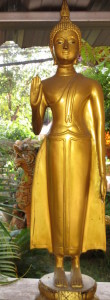 |
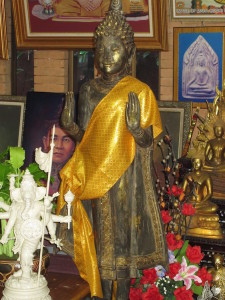 Double Abhaya |
Description:
Right hand up at chest level, palm facing forward. Sometimes the left hand resting on left thigh, in the lap, palm facing up, and sometimes the left hand is also at chest level, palm facing forward. Mostly I’ve seen both palms facing forward in Standing Buddhas, and one palm facing forward in Sitting Buddhas (which sort of makes sense since a sitting Buddha has a lap to place the left hand.)
Meaning:
Gesture of Imparting Fearlessness and Reassurance.
The idea is that the open palm shows a hand empty of weapons, and therefore is the sign of friendship and peace. It also looks like a “stop” signal to an enemy (as my guide in Cambodia explained). So in both interpretations, it means fearlessness.
According to tradition, the Buddha made this gesture immediately after gaining enlightenment. And later, when he was about to be attacked by an angry elephant, he held up his hand in the fearlessness gesture and immediately calmed it. So if you’re ever attacked by an angry elephant, you know what to do! (more)
Anjali Gesture of Greeting and Adoration (also known as Namaskara or Namaste)
Description:
Palms together at forehead or heart. Why? Because only with the heart, or with a deeper spiritual insight (third eye, which is at the forehead) can one truly see that we are all expressions of the same Divine force.
Meaning:
Gesture of Greeting and Adoration
Anjali means “double handful”(cite), and translates from Sanskrit to “offerings” (cite). The gesture is offered as a greeting of great respect for the Divine in all. Using two hands in Anjali expresses the co-existence of two worlds that form a duality: the spiritual and the material world, as well as the static and dynamic nature of things.
A note: Because this is a gesture of homage, you never see a statue of Buddha doing it, only followers who have attained enlightenment (called bodhisattvas). This is because the Buddha IS the one with all the power and light and divinity. One doesn’t show homage to oneself, now does one? (Well…)
Interestingly, the Thai people today use the Anjali when they express wai, which is a greeting to almost everyone. Where Westerners might shake hands in greeting, Thais do wai instead. Thais do wai everywhere; the counter clerk even shows me wai (the Anjali gesture), after I buy a bag of popcorn at the movies, and my golf caddy, aptly named Pin, does wai for me at the end of my round when I tip her (of course, given her excessively optimistic scoring of my game, I should be expressing my high respect and adoration for her).
Bhumisparsa Gesture of Enlightenment
Description:
Right hand is palm down, bent over the right knee. And ideally the fingers are touching the ground (earth). The left hand lies in the lap, palm facing up.
Meaning:
Gesture of Touching Earth, Gesture of Enlightenment
Bhumisparsa was reported to be the gesture the Buddha showed the moment he attained enlightenment, and so for contemporary Buddhists, symbolizes the hope for their own enlightenment. (If I get that far, I imagine mine will be a self smack across the forehead. Doh!) This gesture expresses the strength and truth of his commitment to enlightenment, which helped him overcome all the temptations and darkness (Mara) that came to him right before enlightenment.
“During meditation, Siddhartha is subjected to many temptations, many posed by the evil Mara, who bombards him with his demons, monsters, violent storms as well as his three seductive daughters. The Buddha remains steadfast! Then, to testify to Mara of his meritorious past, he points to the earth with his hand and calls the Earth Goddess, Thorani. She rises from the ground and wrings the water from her long black hair, by this action raising a torrential flood that drowns Mara and his army of demons.“ From here.
Note: Before the historical man became known as the Buddha, he was a Northern Indian prince named Siddhartha Gautama. Herman Hesse’s novel “Siddhartha” which I really enjoyed is, I think, one accessible account of how the Buddha came to be.
By all accounts, and my own experience, Bhumisparsa is easily the most common Buddha gesture in Thai wats.
Dhyana Gesture of Meditation (Also known as Samadhi )
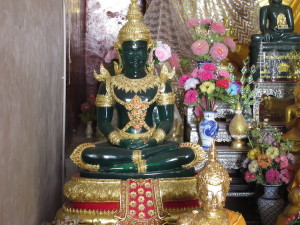
An “Emerald” Buddha, replicating the original Emerald Buddha which sits in Bangkok. The original was created in, some say, 40 BCE.
Description:
Both hands in lap, palms facing up. Right hand rests in left hand. Sometimes the thumbs touch, forming a triangle which is seen to be the circle of energy. Usually in a sitting Buddha.
Meaning:
Gesture of Meditation
This mudra signifies meditation and contemplation, one of the primary practices that Buddhists use to follow the Middle Path. The Bodhisattva makes a vow and is determined not the leave the spot (where he is sitting on the grass) until he achieves enlightenment. The Bodhisattva determines to find the cause of suffering and its cessation.
Sometimes the Dhyāna mudrā is used in certain representations of Bhaiṣajyaguru as the Medicine Buddha, with a medicine bowl placed on the hands.
For your meditation practice, you use this mudra inspire you to get deeper contemplation with higher energy.
Karana Gesture of Warding off Evil and Expelling Negativity
Description:
Right hand up and palm facing out, middle finger and ring finger crooked, middle finger touching thumb.
Meaning:
Gesture of Warding off Evil and Expelling Negativity
The karana mudra expresses a very powerful energy with which you can get rid of any negative energy you carry, like sickness, negative thoughts, anger, etc. If you sense evil coming your way, you can also use it to ward it off. Which is nice. More generally, the karana mudra is used to overcome any mental obstacles you have in your life. “You can sense a very determined, focused energy just by looking at this hand gesture.” As with other mudras, you can recite mantras slowly and intentionally. Here are two suggested mantras for Karana.
“May obstacles be removed.”
“May negative energy be thwarted.”
(I always have liked the word “thwart”)
Vajrapradama Gesture of Unshakable Self Confidence
Description:
Hands folded on chest, typically on standing Buddha.
Meaning:
Gesture of Unshakable Self Confidence
Vajrapradama expresses the kind of self confidence that doesn’t come from ego, or arrogance or even personal competence. It comes from the realization that we are at peace because we are at one with peace. This is the Buddhist idea that we are all connected, we are all part of Divine Life, and that we can draw self confidence from that realization, rather than from individual and personal achievement. So it’s confidence in the Self that is part of the Divine. Nice phrase I found: “When this confidence is there, the Heart becomes the strongest communicator.”
Varada Gesture of Compassion and Granting Wishes
Description:
Usually the left hand palm up of the left hand. . This mudra is made with the left hand, palm up and most often with other gestures, such as the Bhumisparsa or the Abhaya mudras.
Meaning:
Gesture of Compassion and Granting Wishes
Varada mudra expresses the energy of compassion, liberation and an offering of acceptance. It also is the mudra of the Buddha’s charity, and is the gesture of dispensing the kind of favors you’d want to get from an enlightened being (no, not winning lottery numbers).
The right hand is directed downward with palm open to the viewer, empty; fingers may be slightly bent as if to support a round object. If standing, the arm is slightly extended to the front. If seated, hand remains at breast level, a little to side, palm up, and often the other hand holds a corner of the kesa.
Varada represents offering, giving, welcome, charity, compassion and sincerity. It is the mudra of accomplishment of the wish to devote oneself to human salvation. The open hand and extended fingers symbolise the flowering of the Buddha’s Gift of Truth.
Varada is frequently seen combined with Abhaya mudra, where right hand makes the gesture of fearlessness, the left of wish granting. Standing Buddha figures often show abhaya and varada together.
Vitarka Gesture of Teaching
Description:
The hand is held closer to the chest than in the Abhaya mudra. The palm faces outward. The index finger and the thumb make a circle. The other three fingers point upward. Initially made with just the right hand, later on in history the gesture became often expressed with both hands.
Meaning:
Gesture of Teaching
Vitarka mudra evokes the energy of teaching and intellectual discussion, or argument. It mostly feels like the transmission of a particular teaching with no words, and the circle formed by the thumb and index finger creates a constant flow of energy/information. Close to Abhaya mudra , the energy created by this hand gesture allows for a transmission of knowledge in a protected way, without being impeded by fear.
And….that’s it for now. There are probably more mudras that I didn’t see, but because I didn’t see them, I’m not reporting on them.
There are also many different icons and assorted symbols in Thai wats, and my next post will cover them. Stay tuned for Ganesha, the Fat Buddha (who isn’t really a Buddha), Thorani, and more!
Can you add (or correct) anything you know about these mudras?
The next 3 posts will be about Buddhism.
Part 1 is a short intro to Buddhism off the top of my head, for those who know little about it, at least as I practice it.
Part 2 is a study of all the types of Buddha statues and iconography that I’ve found in scouring Northern Thailand temples: fascinating for me, and I hope you too!
Part 3 is a study of all the iconography I found in the temples that are NOT Buddha, which are fascinating in their own right.
In this first part, to illustrate how I “use” Buddhist principles, I also let you in on my very personal divorce recovery story.
Around the 5th century BCE an Indian prince named Siddartha Gautama became disenchanted with his privileged life in Northern India, reportedly after seeing someone dying. So he left his wealthy family and sumptuous, well-bubbled home, and began a quest to look for the answer. As you might imagine “stuff happened” which I won’t describe since it’s described so much in other places (see Herman Hesse’s book “Siddhartha” for a good fictional Western interpretation). One day, after much contemplation, Siddartha attained enlightenment and in that instant became the Buddha. The word “Buddha” means “awakened one” in Sanskrit. The Buddha’s teachings spread throughout India and then on to East Asia, getting assimilated in Japan alongside Shintoism, in China with Confucianism, and in SE Asia. Thailand, for example, is a deeply Buddhist country, even giving Buddhist monks special lines and sitting areas in airports. (More on the history of Buddha here.)
To understand my next two posts about the iconography of Thai Buddhism, it helps to understand a little bit about Buddhist principles, because the variance of the statues is due to the effort to express the different aspects and nuances of these principles, as well as the life of the historical Buddha. I won’t go too deep, but most forms of Buddhism start with the Four Noble Truths about life. The interpretations are all mine, and my learning of these is really just starting. And, as promised at the outset of this post, and at the risk of making some of you uncomfortable, I offer up a (formerly) painful personal example to make my experience with each Noble Truth more illustrative!
The Four Noble Truths (by Buddha)
Let’s look at these a bit more closely.
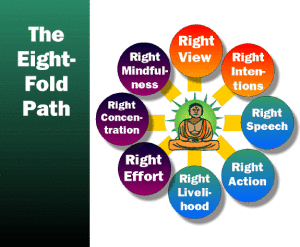
Those are the Four Noble Truths of Buddhism and most of the statues and depictions of Buddha have something to do with some aspect of them, most concerned with helping followers follow the Middle Path. They also have a significance related to an important event in the life – or past lives – of the Historical Buddha.
So I’ve told you all that to set up the next two posts about the iconography I found in Thai wats. Coming very soon!
Before we get there, though, if you have any corrections, clarifications, amplifications or thoughts of any kind to what I’ve written here, please add them in so I can learn more. Thank you!
Some of you may know, some may not, that I’ve adopted a Northern California version of Buddhism as my spiritual and philosophical orientation. It just makes the most sense to me. However, a huge chunk of the world, namely ASIA, approaches Buddhism much differently than the “whatever feels right to you” version I’ve been practicing. So one goal of this journey, while in Asia, was to learn how Asians practice Buddhism. And it’s different. The knowledge is the same, but the practice is much different. Here they worship Buddha in a somewhat similar way that Christians worship Jesus, or Muslims worship Allah. But more on that later. This is the story of my much-too-brief-yet-still-important 4 day retreat to an important Thai Buddhist Monastary. So let’s get started!
A Wat is a Buddhist temple, often with a monastery associated with it. For this adventure, I went to the Doi Suthep Wat, which is on Doi Suthep Mountain near Chiang Mai, Thailand. I discovered it while bemusedly searching online for such a Buddhist retreat center somewhere in Thailand. And it turned out to be in the city I was heading to. How…serendipitous. I originally wanted to do a 5 day visit, but they only had a free space for 3 nights (4 days). So, I took it!
From the Nimman district in Chiang Mai I took a taxi (well, a mini pick up truck with a people carrier on the back, open door, bench seating). Cost was 400 Baht ($12) for the ride up the mountain.
It was raining, which added some drama to the mad dash up the twisty turny mountain road, me sloshing around in the cargo section alone. But we arrived safely.
After eschewing the 309 step stairs up to the Wat proper, I took the funicular, found the office, and joined 2 other newbies, both women from Japan, one from Tokyo, the other from Fukuoka. The Intake Monk, nice guy from Bangkok, oriented us, and gave us some primer information including how to do 2 ways to meditating (walking and sitting) and how to do each.
Sitting. Cross legged, left leg under right leg, back straight, hands in front, palms up, left hand holding right hand. Eyes closed. Two styles. Breathing (“breathe in”, “breathe out”; or “rising”, “falling”) and Belly (hand on belly, “belly out”- on inhale, “belly in” – on exhale).
Intake Monk also taught us how to prostrate ourselves before the Buddha, hands clasped in front of face toward Buddha, sitting on knees, then lean forward and touch forehead to ground. Do this 3 times. (Everything is done in 3s). It is an act of reverence and submission to the Buddha, the Dharma and the Sangha.
Walking mediation. Mindfully focus on picking your foot up, moving it, putting it down. State, to yourself, your observation of what you are doing in THAT moment (“Standing”, “Standing”, “Standing”. “Intending to walk”, “Intending to walk”, “Intending to walk”, etc.) From the 5:30am Dharma talk, I learned there’s an important difference between saying “I am standing” and just “standing”. The latter is “better” because it puts you in the mind of observer, while the former puts you in the mind of actor. Important for later.
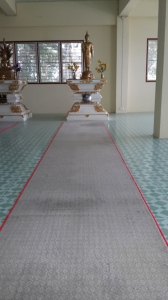
One of my walking meditation “paths” during my time at Doi Suthep. There are 7 of them in this room for others to use. All silently. Back and forth for 15 -25 minutes at a time.
Intake Monk then gave us the rules for the monastery. No alcohol, no killing, no lying, no eating after 11am lunch, wear white, keep talking to minimum (to let individuals have a chance to notice monkey mind). As a male monk, he has 206 rules. Women monks (nuns) have 326 rules (one version of these).
After he got us oriented, he took us HALFWAY to the next stop which was the office manager who would give us our room keys. This was a very sketchy path, involving slippery broken concrete, stepping along a skinny board placed over a large puddle, clambering over a rail system that I’m guessing they use to haul supplies up the steep hill. There were signs, but only directional. No identifying as in “you’re here!”, “Register here”. So my 2 accomplices and I navigated the best we could, stuck our head in an open door and I asked the guy in the back, behind a computer, if we were supposed to be here. He said, yes and so we ended up getting our keys. He then just pointed us down the hill and said “your rooms are down there”. Which we took to mean, “find them on your own”. 4 buildings, first two for women, second two for men. Fortunately, the room numbers were reasonably conceived: Room 201 was room 1 in Building 2. Mine was 410, the furthest away. It had been raining, a lot, and the old uneven concrete path was slippery – seems to be algae or moss on it.
Anyway, I almost got to my room but hit an especially dark slimy step and went down hard on my shin / knee. Tore my pants, skinned my shin pretty well, big swelling on my knee. There were no lights nor handrails on the stairs, so I started off my meditation weekend with some grumpy words about the Monastery staff and designers. In the US, this would have violated about a dozen safety rules. Anyway, I finally had a reason to open up my first aid kit and had everything I needed – antibacterial cream, gauze bandages, Ace bandage to wrap the whole thing up.
However, this injury – aside from the aforementioned grumpiness – also made it hard to sit and especially sit on my knees (important for prostrating before the Buddha). So I didn’t. And no one said anything.
Since it was Loc Krathong, the big Buddha Day of the year, I got to spend the early evening watching and listening to an hour of special chanting by the monks in the Big Stupa.
After that, I went back to my room, along the same treacherous path as I first took, but this time managed to avoid further injury. My all white outfit didn’t survive in its most sacred form, though, with splattered muddy pants ruining my otherwise “pure as the driven snow” look.
Got back to my ascetic room. Let me describe it for you. Size was about 10×12 feet, and the only furniture was a bed/cot with a hard mattress. Two windows on opposite walls with screens. There was a single fluorescent light hanging from the ceiling, casting a rather harsh cool light. Floor was faux bamboo, made of linoleum or some such plastic, walls were painted a yellowed white. The door was solid dark brown painted wood, and the lock was a simple padlock. Since the room had no furniture or fabric, any movement or noise I made echoed around. Outside the back window, jungle. Yet from down the mountain the noises of the city rose, and since it was Loc Krathong, fireworks, explosions and music filled the air in a distant sort of way.
Once in my room, with nothing to do, no activities, no internet, nada, my mind started yearning for stimuli of any sort. I resisted eating the snacks (peanuts, crackers) I had in my bag because I wanted to (a) respect their rules and (b) see if could do it. A little grumbling from the tummy, but I realized I wasn’t going to die, have lots of fat stored that my body could eat over night if it needed to. Read a bit. But really. When you cut yourself off from people, media, internet and hobbies – in a room as ascetic as this, there’s just not much to do. So I turned the lights out at 8pm and went to sleep. Which wasn’t easy. In addition to the Loc Krathong festivities, several of the Wat dogs were in heat, and so their “love making” in the barking and growling added to the distinctly NOT quiet setting. (The next morning, the Teacher Monk giggled about this, as he explained what was going on.)
Wake up at 5:00am! Good thing I went to sleep early. We sat for a dharma talk by Teacher Monk from 5:30am-6:30am, and while he spoke in heavily accented English, his message was good. All about how we are in charge of our happiness by being the director of our constantly ongoing internal story/movie. He used Titanic and Avatar references, even Tom Hanks. I knew a lot of this from before, but two things I liked. He pointed out that we tend to forget factual memories (like what we did for lunch last Tuesday) pretty easily, but we tend not to forget emotional memories (like the first time we fell in love, or the time someone offended us) as easily. And yet our lives would be so much happier if we could just as easily forget the negative emotional memories. We don’t, because we run the movie of that negative memory CONSTANTLY. We may see Titanic a dozen times and get bored with it, but we can run a “movie” of being offended thousands of times and that’s why we don’t get over it. We are the Directors of our own movies. Are we going to be good directors or bad directors?
Daily Schedule!
| 5:00a | Wake up by rooster alarm |
| 5:30a-6:30a | Dharma talk by Teacher Monk for all visitors, about 10-15 |
| 7:00a | Breakfast. Noodles with vegetables and tofu. |
| 8:00a–11:00a | Individual Meditation Practice, no guide. Everyone silent and doing largely the same thing. 15 minutes of walking meditation, then 15 minutes of sitting meditation. Repeat as long as possible. I was usually good for 3 rounds, then I needed to take a walk outside. Which was possible, no one was watching over us. No one forced or required us to do anything except be as silent as possible. We were mostly left alone. |
| 11:00am | Lunch. Vegetarian Buffet, lots of white rice. Eat in silence. |
| 12:00-1:30p | Individual Meditation Practice |
| 1:30p | Short 1 on 1 with Teacher Monk, who gave instructions for how to meditate. No real conversation. (He did make the mistake of asking me if I had any questions, and so I did ask a few impertinent ones. Like what was that high shrill whistle that regularly blasts us out of contemplation? His response: That’s to discourage mosquitos from staying here. Remember? We don’t kill things here. – Rule #1 from Intake Monk.) |
| 2:00p-4:00p | Individual Meditation |
| 4:00p-6:00p | Free time, including showers. |
| 6:00p-7:00p | Chanting with Everyone. (Note: No Dinner) |
| 7:00p on | Relax, meditate, read, write, whatever. Go to sleep when you like, but Teacher Monk taught that we get our best healing “hormones” between 10pm and 12 midnight, so it would be best if we were sleeping then. |
I did this for 3 nights, and 2 half days and 2 full days. A too short of a time, really. They recommend 5-7 days for beginners because it’s after Day 3 that you really start to feel right about it all. But this was the only time they had an open room through January (Busy Wat!). So I took it. When I left, I had a 30 minute exit talk with Teacher Monk, where we chanted, I offered him flowers, and he talked a little bit about how I could continue my practice out in the real world. Then I said good bye to Teacher Monk with a wai, and moved on to the business office where they took my donation (no set charge, they leave it up to the individual to donate what they feel is right). I was off on my own!
So that’s the “what happened” part of the retreat. Next….
What I Got Out of It
Understand that I’ve been practicing some form of meditation for a long time, and have been reading and trying to follow Buddhist practice for a long time too. So I came here with a lot of knowledge about the teachings of the Buddha. But less about the practice.
Two parts of this short stay made big impressions on me.
Accepting Reality As It Is
I learned a lesson before I even got properly started. When I arrived, it was raining, I was lugging all my stuff with me, and I had become acclimated, I guess, to the customer service of hotels and touristy areas. So when I got there and found “customer service” and even the facilities as not the main priority, I got a little grumpy. For example, the Intake Monk told me to wait outside, in the rain, for another 10 minutes until 2pm. Then, after the orientation, as I was making my way down the steep hill, in the rain, on slippery, unlit, broken concrete paths and stairways, clambering over puddles, and trying to follow the signs after Intake Monk left me and my two similarly bewildered new meditators, to find our way….I was grumpy, and a not a little indignant. I observed this and called it out….”grumpy”, “indignant”….but still. Grumpy and Indignant. We made it to the registration office, after guessing at a few doors (no sign), and got my room key. The staffer pointed down the dark hill and said “women’s buildings are the first two, men’s buildings are the second two”. I was room 410, which I presumed meant I was the last one. Which turned out to be right! However, as I made my way down another especially dark, slippery set of stairs to my building I finally lost it, and slipped. Went down pretty hard on my right knee and shin, tearing my pants, and got a bloody skinned shin, about 8 inches long, in addition to, as I watched, a rapidly swelling knee. I limped to my private room, opened the door and….the generous word would be ascetic, the less generous word would be bleak. My room was a 10×12 empty space with a simple cot and mattress against the wall and a cold fluorescent light dangling from the ceiling. Nothing else in the room. (see room picture above)
It was at this point that I cursed the Buddha, I cursed the monks, I cursed the stairs, I cursed the accommodations, and I generally lost it. For about 10 minutes.
And then……I took a breath, and realized where I was and why I was here. Life gives us challenges and things don’t go as we want them all the time. We make decisions and we must own those decisions. The reality …the REAL reality…was that I was in the Doi Suthep Buddhist monastery near Chiang Mai, Thailand this day in November 2014 for 4 days and 3 nights. I CHOSE to be here. I DESIRED to be here. And it’s the nature of this particular Buddhist Monastery to host me in the way the monks see fit. If they choose to have a version of customer service different from mine, then that’s the reality. If they choose to have slippery dark roads and stairways, then that’s the reality. As I sat there on my cot, unpacked bag sitting at my feet, under the cool blue light of the over head lamp, I realized that I had a choice. How was I going to live in this reality? I could leave. I could stay grumpy and indignant. Or I could “go Buddhist” and accept what my reality was. So before I did anything else, I breathed. I sat. I calmed myself down. I….meditated. Just there, like that. For several minutes. And in a few minutes, my experience with the Reality As It Is changed.
I heard the raindrops on the roof. I noticed that the temperature here was cool, not the oppressive heat and humidity that I’d been trying to acclimate to for the past few months. I was breathing. My leg hurt, but I was otherwise very healthy. I was in a real Thai Buddhist Monastery! And yes, this room was bleak. But it also must be this way for a reason. I doubted I’d learn the real reason (this IS a silent retreat, after all) so in that moment I chose to believe that everything was exactly as it should be for me to get the most out of this 4 days.
The asceticism gives me an opportunity to avoid distractions of comfort. The dark and slippery walkways give me the opportunity to be mindful of each step I took. My leg wound was going to be constant reminder of what can happen when I’m doing something in a Grumpy and Indignant Way. The 5am wake up call, the purposeful fasting after the 11am lunch, the intentional silence when I was really wanting human connection, the discipline of meditating exactly as the teacher instructed despite the discomfort it offered me, the frustration of trying to understand what the teacher was saying despite his very heavy Thai accent, the hard mattress and musty smelly pillow; all of these were opportunities for me to accept Reality As It Is.
Meditating Is Hard
I knew this going in, but I had never meditated for several days. For those who meditate, you know that everyone has an active intrapersonal dialogue going on, constantly, bringing up stories, dialogues, monologues, simple thoughts – all keeping us from just….being….in…the….moment. With the basic breathing meditation, where all you are supposed to do is observe your breath going in and out, it’s really quite impossible to stay in just that moment for very long. So when that happens, you observe it, call it out (“Planning Mind”, “Wanting Mind”, “Regretting Mind”, “Judging Mind”, etc.) and gently, without beating yourself over it, with loving kindness for yourself, return to “breathing in”, “breathing out”. That’s all there is to it. So I knew all that.
What was different for me this time was the emergence of “Bored Mind”. Meditating for hours, I got bored. And I noticed how much my mind needs stimulation.
The point of any practice, be it drawing, sports, music, public speaking…is to train yourself to do the behavior and thinking required to do that particular activity better. I hit golf shots to train my muscles to move in certain ways without me having to think about it. I practice public speaking to train my brain to be clearer with my message. And so it is with meditating.
Practicing meditation helps me train my consciousness to notice when I’m not being present. And not being present – not being mindful of THIS moment – is when I get in trouble. It’s why I slipped on those dark steps and skinned my knee. It’s why I react to unmet expectations, like an ascetic room, with irritation. It’s why I misunderstand what someone is telling me. It’s why I let fear or regret drive my choices. (Pema Chodron (link) points out that when we feel fear we’re living in the future, and when we feel regret we’re living in the past. Neither is now. And neither is “real” yet, or every again. Yet when we feel joy, we’re living in the present.)
So I was taught yet again through this few days of silent meditation that I am a healthier, more loving, even more effective person when I am mindful. And through a meditation practice, I can train myself to be more mindful, more often.
And that was a bit about my visit to a Buddhist Monastery!
I’m curious, if you’ve read this far. What is YOUR experience with mindfulness and meditation?
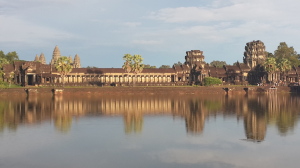 So. I went to Angkor Wat, in northwest Cambodia. If you’ve been here, you know how extensive it is. If you have not been here….it’s really extensive. Not just a single temple but dozens of them, some huge, some quite small. Lots has been written about Angkor Wat (Wiki) and researched (cool 3D imaging of Angkor Wat). And other than open mouthed wonder, I don’t have much to say about this visit beyond a small sampling of the hundreds of pictures I took. Too many to upload to this blog, but here’s the link for some of them on my Google Drive (Dave’s Angkor Wat pictures).
So. I went to Angkor Wat, in northwest Cambodia. If you’ve been here, you know how extensive it is. If you have not been here….it’s really extensive. Not just a single temple but dozens of them, some huge, some quite small. Lots has been written about Angkor Wat (Wiki) and researched (cool 3D imaging of Angkor Wat). And other than open mouthed wonder, I don’t have much to say about this visit beyond a small sampling of the hundreds of pictures I took. Too many to upload to this blog, but here’s the link for some of them on my Google Drive (Dave’s Angkor Wat pictures).
What I will tell you is how I got there. I took a bus from Phnom Penh to Siem Reap and then hired a tuk tuk to take me to my hotel, a very nice guesthouse run by Gary, that I found through airbnb (Golden Dynasty Guesthouse) . Ratha and Chandra, my new friends at the front desk, arranged for an English speaking guide for me, $35 for the day, plus a tuk tuk to drive us around $20. A good friend in Vietnam, Morgan, had given me a strategy: go in reverse order from what the tourists do. Skip the dawn East Gate at the Angkor Wat, which tends to draw lots of tourists, and start at Bayon then move back to Angkor Wat later in the day. I liked the sneakiness and contrariness of this plan, and suggested it to my guide, Densith. To whom had I paid a day’s wages. And he said, “Nice idea…No. We’re going to Angkor Wat first.” I’m finding, during these travels, that without a solid communication ability, it’s hard to change mindsets. And The Standard Tour For Day 1 starts at Angkor Wat. That’s just how it is. I had thought about just renting a tuk tuk and exploring on my own, but realizing how ignorant I am of the history and archeology, I decided the $35 would be well spent. And, aside from insisting that we STICK TO THE PLAN, Densith was a good guy and we got along fine. So off we rambled to Angkor Wat.
Honestly, the crowds weren’t too bad. And Densith had LOADS of statistics that he was insistent upon sharing with me. To a listener nearby, our conversation may have sounded like this:
Densith (earnestly): This wall is 356 meters long and was built in 1186, but that wall there is only 285 meters long, built by the king after that.”
Dave: How come?
Densith: How come what?
Dave: How come that wall is longer than the other one? Was the king after the first king lazy?
Densith: (pausing) No, I don’t think so.
Dave: I’ll bet he was lazy. (looking in an A.D.D. manner toward another building) Where do those stairs go to?
Densith: Um, that staircase was built in 1175, and has 99 steps, because 9 is an auspicious number. It goes to what they believed was Heaven, or the closest they could get to Heaven.
Dave: You mean that floor only about 50 feet up? Doesn’t look that close to Heaven to me.
Densith: (struggling to stay in control) Only the royal family could go up to Heaven.
Dave: Can I go up there now?
Densith: No. Those stairs are closed. Because tourists kept hurting themselves on them. But there is a special set of stairs around the corner where you can get up there. I don’t want to go with you, my knees hurt. I’ve done it too many times.
Dave: I’ll go without you then. Will you wait for me?
Densith: Perhaps.
Dave: Perhaps?
Densith: Ok, I’ll wait for you. Don’t take too long.
This was a fun tour.
You can see the pictures here….
Too small? PICTURES ARE ON GOOGLE PLUS HERE.
Here are some to whet your appetite… (and remember, click on them to embiggen them)
And then…..this happened.
Okay, enough whetting. Go see the pictures. PICTURES ARE ON GOOGLE PLUS HERE.
What I knew of Cambodia before I came here is sad. Spillover from the Vietnam/American war. Followed by genocide of their own people (3 million murdered/starved of a population of 8 million). Followed by invasion by Vietnam that stopped the genocide, but aside from that hasn’t done any favors for the remaining Kampucheans (interesting discussion about this between present day Cambodians and Vietnamese in the comments section of this blog post). This is a beautiful yet poor and sad country (Siem Reap / Angkor Wat is like an island in this, which I’ll report on soon).
I met two men. My tuk tuk driver in Phnom Penh, Teah, and my Angkor Wat guide, Densith. Born in 1977, when the Khmer Rouge was killing everyone, including infants, Teah’s family miraculously escaped the genocide, while losing all their property in the big relocation. Densith was born in 1973, so was a child then. His father was murdered, and his grandparents starved as so many did in the forced relocation to the country. For more background on the Khmer Rouge regime in the late 1970s, go here. But the quick summary as I learned it from these men who lived it was that the US/Vietnam war left the eastern part of Cambodia in ruins and instability, after many “illegal” bombings pursuing the “illegal” North Vietnamese whose Ho Chi Minh Trail supply trail went through Cambodia. I read that the US dropped more bombs on Cambodia than they did on North Vietnam (sources here, here and here). As a result, the existing Cambodian government was weak, and a school teacher named Pol Pot took over with an extreme vision of Communism. The Khmer Rouge divided the population up into “old” citizens and “new” citizens. The “old” citizens were the problem and were enemies of the state. They were basically the intellectual and professional, and just generally educated, social class. They mostly lived in cities, like Phnom Penh. The Khmer Rouge saw the only way to attain their vision of society was to forcibly move everyone out of the cities into the fields to work as farmers. Which is what they did.
Image Source://cityofwater.files.wordpress.com/2012/01/untitled.png
They also saw a need to eradicate the “old” citizens, and through systematic killing, did just that. In addition to outright murder, the city folks had no clue how to grow food in the fields, and so starvation was another cause. Again, in all 3 million of 8 million died during the late 1970s. In trying to make sense of this, in the same way I tried to make sense for myself of the war in Vietnam, I visited the “Killing Fields” memorial and “S-21”, the brutal school turned interrogation/torture center in PP (official site here). I saw horrific images, but will not include most of them here. I’m sure you can find the terror online. But here’s a sample of what I saw.
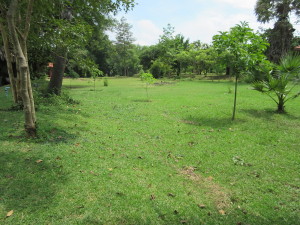
Benign looking now, but this is where many of the tens of thousands were killed, typically not with guns, but with crude weapons. Sticks, shovels, axes, etc. The site is just one of hundreds of killing fields throughout Cambodia. This one is where the biggest memorial is. Outside of Phnom Penh.
This only happened 35 years ago, so anyone over the age of 35 now…was here. And I didn’t meet, and talk, with any Cambodian (Kampuchean) that did NOT have some personal and/or family connection with tragedy from that time. And it still goes on. Landmines are all over the place, in the country.
Densith, my Angkor Wat guide, told me how the Khmer Rouge soldiers, on the move, would make camp and line the perimeter of that night’s camp with landmines for protection. And when they moved on the next day, they left the mines, unmarked. So these little caches of landmines are everywhere. Still. And people are still dying and getting maimed by them.
Several other people I talked to were quite adamant that the war is not over. They call it the “Cold War” with Vietnam, and their own Cambodian government the “puppets” of Vietnam. I have not had a chance to corroborate any of this, but the claims I heard more than once include:
Again, I haven’t corroborated any of these claims. These are the perspectives of a very few Cambodians. However, I did read in the local English language newspaper about the lack of progress made by the government in deporting the “Vietnamese illegals” (the newspapers’s term). If you’re interested in this issue, let me know and I’ll see if I can find some sources that seem credible to me.
Despite all that, without an exception, every Cambodian I met this trip was friendly, helpful and….hopeful. True, I’m a tourist, and a primary source of income. But I’ve been other places where that still didn’t matter. I really like the Cambodian people I met, and feel sad they have so few opportunities.
This was a hard piece to write after seeing what I saw, and talking to actual people who have personally suffered from this tragedy.
I was astounded at how big the Mekong is! It starts in the South China Sea and winds all the way up to SE Asia, with its source coming from a spring in Tibet. Who knew?
I didn’t go that far north, on account of it being so far north, and instead started my day tour in Mỹ Tho, which is about an hour south of Ho Chi Minh City by air conditioned bus! (Commercial pitch: if you’re looking for good cheap day trips out of Ho Chi Minh City, I can highly recommend Sinh Tours. I paid $12 for a day on the Mekong Delta, including lunch. And just $7 for the Cu Chi tour, lunch not included.) The river reminded me of my time on the Amazon out of Iquitos, Peru. Same big, wide brown water, with tropical vegetation growing on the shores and floating in huge clumps along the current. Hot, humid, rich smelling. Amazing clouds. The whole deal. I love being on these rivers!
People of course have been living here for millennia, and despite modernity, still do things like grow fish in floating houses, like above. No one lives in these houses, just fish!
Like other rivers, the boats plying the waters are low, slender rigs, that do a lot of putt putting, rather than roaring. They have to contend with widely fluctuating water levels, so don’t draw too much. While I was ON my boat taking this picture, this is what mine looked like.
I wasn’t sure what these were. I don’t think they were fishing houses. And I’m not sure that people lived in them. But they looked awfully rustic and so I present them to you for your speculation!
Just a working family, on the river.
I’m not real big into selfies, I always think I look like a a dork. So I had Vo, my tour guide, take this one of me doing my Huck Finn Goes to Vietnam pose. Our boat was able to go into some of the side rivers, on our way to lunch, and some interesting “factories”: rice chips, coconut candy, baskets, and of course tourist souvenir shops!
Looks tropical right? Lots of bugs right? Hot bed of malaria and dengue fever carrying mosquitos, right? So…not so much. At least not to me. I’ve been in SE Asia for nearly 3 months, and have YET to see a damn mosquito. I had the same issue in the Amazon, nary a bite. I’m not sure what this means, and I’d love to hear from you if you do. Is my body scent repulsive to bugs? I’m grateful, but confused. Anyway, I was expecting to find clouds of bugs in this particular turn of the river, but all I saw were butterflies and a few dragon flies. Odd. Not many birds either, which still confounds me. With all the water and fish in that water, I don’t get why I’m not seeing seagulls, or other water birds. In the US, those things are everywhere. Anyone know where the seagulls are in Vietnam???
So this was lunch. A river fish, cooked and presented thusly. I had no idea how to approach it, but thankfully I didn’t have to. A restaurant worker expertly pulled succulent meat out of it, and rolled it with vegetables and spices in rice paper to make a fantastically tasty fat spring roll!
And of course, making a living on the Delta doesn’t mean you have to fish. We were regaled by these two singers, and their accompanying band (a guitar, a flute and bass – all acoustic). Vo, my trusty guide, loosely interpreted for me. Songs about love, and romance. And love and romance gone wrong. So, Vietnamese COUNTRY songs! They played for tips, and I’m happy to say that our group was generous.
People live on the river, and since the river rises and falls with the rains, they have to build berms to keep it from sloshing over into their homes.
Back on the river, these guys swam past. Not wild, but domestic ducks, chickens, and cows would wander by wherever we were. I’m no farmer, so there must be some secret to getting them back.
I love palms!
At one of our last stops, we came to a rice chip making factory. First, they grind rice with water to create a paste. Then they spread the paste onto these hot surface (top picture), and cook it for awhile. Then they lay the resulting cooked rice “big chip” onto bamboo to cool and dry. And finally they break them up to look like the bottom. I LIKE rice chips. Very tasty!
I took many many more pictures of this trip, but this gives you taste of what river live on the Mighty Mekong is like.
Cu Chi. If you’re any kind of aware of the war in Vietnam in the 1960s, you’ve heard about Cu Chi, a vast network of tunnels and bunkers in the hills north of Saigon (now Ho Chi Minh City), where the North Vietnamese regular army, and the Viet Cong hid out. You can read all about the place here. If you want to see a Communist video about the tunnels and the war, rather than all the tourist videos, here’s your link. I had heard about them for a long time, and have been deeply curious how this placed worked. So I came up on a day tour out of HCMC, and wandered around. This is what I found – in pictures!
This was creepy when I walked up to it! Mannequins of NVA and VC soldiers reenacting what they did when they weren’t being bombed by B52s. They lived on very little food, maybe a couple rice balls and tapioca (see below). I still don’t know how the Vietnamese people, even today, can wear jackets when I’m sweating like a mafia accountant accused of embezzling. I don’t notice them sweating. Very odd. It makes a HUGE difference being in the shade though, and a when a little breeze comes up…you feel like life is worth living again.
Some of the tunnels were very deep, maybe 30 meters down, and of course they needed air down there. So throughout the system they’d dig air holes in random places. Sometimes in natural mounds like this, sometimes in mounds they made. For the most part, the holes faced east, where the wind usually came from (the South China Sea). But during an attack by the US or S. Vietnamese forces, they would step away from these holes because gas would get blown into them by the soldiers.
One of the tactics the NVA and VC would use would be to shoot at enemy soldiers on the ground, and then disappear into these trap doors, quickly covering themselves up with camouflaged lids. They demonstrated, and even though I saw where the hold had been, I couldn’t see it once the lids were in place. Sometimes they’d pop out, shoot, grab whatever weapons they could, and then jump back down in the hole. I can’t imagine how frustrating and terrifying it was.
This, I was told, is what the Cu Chi soldiers lived on. The food on the left is ground peanuts with spices, and on the left is tapioca, a kind of root. I ate some of both, and they tasted good! But 3 times a day for months on end? Still, it kept them alive, if not in great health.
I’m not sure they wore Vans, and I know for a fact that they’ve embiggened the tunnels so fat Westerners can get through, but this is what a tunnel looks like with someone in it. I knew it would be a tight fight, and not so comfortable to walked hunched over like a drunk looking for his keys. But I thought underground would be cooler. Not so much. The sweating became embarrassingly torrential in this thing. Again, how they lived in here for months, or in some cases years, I can’t imagine.
At some point, the US decided they needed to bomb the bejesus out of this place. The NVA and VC used it to stage attacks on South Vietnam targets, and that was intolerable. So they sent out B52s to drop tons of bombs. Here are a few that did NOT explode. These unexploded bombs turned out to be excellent resources for the NVA and VC to use to make their own weapons – mostly booby traps, but other kinds of more offensive weapons.
This is one of dozens of bomb craters I saw still here, made by bombs dropped from B52s In fact, the little sign on the tree says so. It turns out that these craters eventually fill with water, and locals – after the war I think – would use them as fish ponds to grow food.
This tank was blown up by a mine, and stayed here. So there were plenty of ground battles on Cu Chi as well as bombings.
Because of those ground battles, the NVA and VC put in lots and lots of booby traps. They weren’t designed to kill, just maim on the theory that they didn’t need to kill to take out US soldiers. So if you were a US soldier, or S. Vietnamese soldier, in addition to VC soldiers popping out of trap doors and shooting at you and then disappearing, you’d have all sorts of these contraptions around just waiting to skewer you with bamboo punji sticks.
Here’s one example, called a Bear Trap. It had a swinging door that you couldn’t see, because it was covered with leaves and stuff. You step on one edge of it and…..
This is what you fell into. Again, hundreds, if not thousands of these things around.
Another thing that continues to be deadly are land mines. Still around, and still blowing people up. No one knows where they are, exactly, other than “over there”, and there haven’t been enough resources to clear all of them. This is more of a problem, I learned, in Cambodia, than in Vietnam. But still a legacy of the war here.
That’s it for Cu Chi. While I marveled at the ingenuity, industry and deprivation of the inhabitants, I came away with an even deeper sense of how stupid- and utterly inhuman – wars are. (Heavy sigh….)
I’ve been a bit frustrated during this trip that I haven’t been able to travel slowly, by rail or bus. Instead, for a lot of reasons, I’ve only been able to fly. So I was keenly wanting to take the train on my way south from Da Nang, to se the countryside!
This first bit is for a cool site I’m using, seat61.com, which is all about taking the rail around the world. I thought Mark’s readership might like a bit of detail about this trip. Following this review, I’ll add some additional commentary for you, my loyal readers!
———
Bought my ticket online at vietnameimpressive.com, $75, about the same as a flight. Straight forward purchase process online. I booked a week ahead of time, and they delivered my ticket (along with travel tips), to my hotel in DaNang 2 days before my train. They recommended we get there an hour before, but really, 15 minutes would be fine, if you have your ticket. Waiting room is no frills, but comfortable. There’s a convenience shop in the DaNang station where I bought water and carbo snacks. The train boarded at 1:00pm and left promptly at 1:15pm. (A word about the travel tips. None of their dire warnings happened for me. No one asked for more money, or was in my seat.)
I had Coach 10, lower berth 22 (which put me in compartment 6). The ticket taker told me in English where to go (“Go to six!”). The compartments on this train are strictly sleepers, no conversions. There are four sleepers in each compartment, two up , two down. I found mine, threw my luggage underneath, and settled in.
When you get in your compartment, the linens will likely be used, but just wait. As soon as you get moving, the attendant will come by and give you fresh ones, which you put on. The cabins are clean but not new and at all fancy. I’m 73 inches tall and my sleeper was just long enough and wide enough, about 24 inches wide. Sitting was comfortable, albeit in a legs crossed position. My head didn’t reach the berth above me. There are two power plugs in the compartment. No wifi, but cell coverage worked fine so I was texting with my friends all night, and using my phone’s GPS to see where I was. Definitely reserve a lower berth if you can, it’s simply more comfortable (ie, you get the use of the floor). There’s a short table between the two lower bunks, which was nice to put snacks on.
You can close the door to your compartment, I left it during the afternoon, to just look out the window from my sleeper. At night, I closed it, and turned off the lights. For the first few hours of the trip I shared the cabin with one nice young woman who mostly slept. When she got off, two other smiling women got on for the rest of the trip. Then around 10pm, a man got on the bunk above me. Not sure if he was smiling or not. All reserved seating. All I had to do was move my feet over a bit so he could get a leg up. Again, they mostly slept. Neither my Vietnamese nor their English was strong enough for conversation.
The night went uneventfully, although the 2 inch thick mattresses weren’t really great for my 56 year old bones. So I was little stiff when we arrived, right on time at 5:30am, in the HCMC station. I slept in my clothes, which seemed easier since I didn’t know my sleeping mates – no curtains between the bunks. The sheet didn’t stay on during the night so I’m glad I had my clothes on. While the mattresses looked clean, who knows? The good news, no bedbugs or anything creepy crawly.
Summary: a no frills, adventurous alternative to flying, at the same cost. 16 hours, most of it in the dark. Bring your own entertainment, including a flashlight if you’re bringing non electronic reading.
——- Further commentary for my friends!
The reason I wanted to take the train, instead of a flight, was to see the countryside. And for the 4.5 hours of daylight, I was not disappointed. Granted, taking pictures out of a speeding train isn’t the best way to show, but here we are.
My train stopped every hour or so for a town, and preceding each was an announcement in Vietnamese. Except one time. It was a warning, in English as well as Vietnamese, explaining the reasons someone might get thrown off the train. The usual…”no ticket, trashing the place, bothering others, drunkenness..” And then: “those carrying corpses or body parts”. Hmmm. I look next to me, and notice, with fresh vivid insight, the large Styrofoam box, tightly wrapped with packing tape, on the floor just 2 inches from my face, as I sleep. That a new passenger had been perhaps a bit too furtive in moving on. My imagination, in my half asleep state ran with it. Taking Grandpa back to his ancestral grounds for proper burial, in the most cost effective mode available? I was flummoxed. What are ones options? I couldn’t very well ask the woman , “is there someone you knew in that box?”. I didn’t know Vietnamese well enough, and the Vietnamese I do know is all in the context of dining. Which is not the proper context at all. So….I just let it go. I just let…..it…..go. And went back to sleep.
I hadn’t really done a good job of preparing my food for this trip, aside from a roll of Ritz crackers, a bag of peanuts, a couple Snickers bars and water. So when the man with the rickety cart rolled by yelling out who knows what, I hailed him, “Em!” (which is sort like “sumi masen” in Japanese, only “em” means the person you are addressing is younger than you, which nearly everyone I meet on this trip is). Em! He stops in mid ramble and glances at me in my cabin. And then he gets this look that I get a lot which I have come to interpret as “You are a big strange looking beast. I suppose I need to deal with you, but I don’t know English, and don’t want to know English. I’m guessing you know even less Vietnamese. And it’s a hassle dealing with beasts like you. So here I am. Stuck with you. Sigh….What do you want?” All of this I pick up in a glance. Amazing. However, he is shocked and then laughs with glee when I simply say “tôi muốn ba gà”. (I want 3 pieces of chicken!). It astonishes me how so much joy and acceptance and downright hospitality I’m getting from the most hardened customer service people here when I trot out even a tiny bit of Vietnamese. With the newfound warmth of an old friend he dishes me up 3 fried legs of chicken, and tosses in a “chicken on a stick” (think shawarma) to boot. At that moment, a mouse decides to run the length of the coach – we see it coming – right under our feet, and disappears under the garbage can at the opposite end. We both watched it run past, and then look up at each other. My look was, I’m sure, one of “uh….really?”. He laughs and says something that he found amusing, Then the moment shifts and he gets that worried look back as we approach the payment issue. So I say to him, “bảy mươi?” (Seventy?) And he lights up again and says “no (in English!), NAM mươi!” (Fifty!) A deal is struck and I pass him the money he wants. 3 pieces of chicken and a “chicken on a stick” for $2.50. Not bad. As I return to my berth, he continues moving down the coach and I swear I heard him cackle in glee, shaking his head and looking back at me, not once, but twice, utterly bemused. The chicken wasn’t bad.
I took a video outside the window with my Smartphone. Not great quality, but you’ll get to see bucolic Vietnam, with rice paddies, water buffaloes, and mountains.
And that was it!
I know when my life is not in the center. I get desirously involved with my relation to some achievement or system that is tangential to the real centering of my life. And I know when I’m on track – that is, when everything is in a harmonious relationship to what I regard as the best I’ve got in me.
In the Grail legends, the land of people doing what they think they ought to do or have to do is the wasteland. What is the wasteland for you?
One of the joys of this journey is the time to read. I’m reading both fiction (just finished The Good Earth, by Pearl S. Buck; only got through a third of Catcher in the Rye, too whiny for me; LOVED 100 Year Old Man!) and nonfiction (in particular Campbell and Pema Chodron). These books all seem to have a common thread: how COULD one live a life? And I’m picking up a thread from the past year where I really challenged myself to ask Campbell’s questions: what is the wasteland for me? What achievements or systems am I buying into that keep me off center? For most of my life I have made what I thought at the time were good choices, mindful of my roles and responsibilities. I regret little. AND, at the same time,…..along that path I’ve picked up assumptions, and stories, and beliefs and values that no longer serve me.
So I did an exercise last year in the lead up to this journey that I’ll share with you, although at the time I thought it was going to stay private. I wanted to examine all of my assumptions and operating beliefs, no matter how naïve, stupid, awkward or even plain wrong they were. As long as a word or phrase rang true for me, at a core intuitive level, I wrote it down. True in the sense that, yeah, I DO believe that belief, or act that belief out, or fantasize about that belief in a way that creates my reality. I realized yesterday, after reading the Campbell passage, that I was striving to answer the question: What is the wasteland for you?
I asked myself three questions:
First I meditated and got quiet, real quiet. I wanted to get quiet so that the filters, stories and rationalizations that typically run through my brain constantly wouldn’t drown out the sometimes whisper of my center. (Can you tell I’ve lived in Northern California a long time?). Then I just listed to what came to me, never filtering, never disagreeing. Basically I did an individual brainstorm, with the same rules as group brainstorming. And after about 30 minutes, this is the list I came up with:
I have told myself that I am supposed to be:
Again, I wanted to get at those assumptions and beliefs that I had taken on over the years, without judgment. Then I took a breath, and asked the next question.
Which of these do I actually want to be?
For this I just cut and pasted pretty much exactly what was in the first list. No embellishments. (Well, #9 summarized some similar beliefs.)
Then I did a short meditation, and asked the next question.
What ELSE do I actually want to be?
Campbell answered his question this way: “I know damned well what the wasteland would be for me: the academic approach to my material; or a marriage to someone who had no thoughts or feelings for me or my work. I find working for money to be the wasteland – doing something that somebody else wants instead of the thing that is my next step.”
I will continue to work at my answer to Campbell’s question. For now, my wasteland is where I find myself living in my old beliefs.
What’s your wasteland?
Xi’an is an Important City in China. Here are the opening lines from the Wikipedia entry:
“One of the oldest cities in China, with more than 6,000 years of history, the city was known as Chang’an before the Ming dynasty. Xi’an is one of the Four Great Ancient Capitals of China, having held the position under several of the most important dynasties in Chinese history, including Zhou, Qin, Han, Sui, and Tang. Xi’an is the starting point of the Silk Road and home to the Terracotta Army of Emperor Qin Shi Huang.”
Most of you have heard of it because it’s where thousands of terra cotta soldiers were buried with the China’s first emperor in 300 BCE, that guy Qin. I’m including just a few pictures of the chalky soldiers that greeted us with stony expressions, since you can get all you need with a search here.
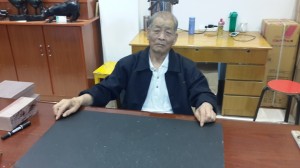
The Guy: This is the farmer that discovered the site in 1976. Despite his playful demeanor, and the sign that said, “No Autographs!”, I got his autograph! But since I can’t read Chinese, I’m not really sure what he wrote.
But Xi’an is much more than these dusty relics of a past megalomaniac’s vain vision. In nearby Yan’an live a people who have dwelled for millennia in caves carved out of mountains – and still live in them – although the family we visited also had a house in front of their cave. The mom (pictured below on a nifty tractor) preferred to live in the cave while her daughter-in-law and grandchildren preferred to live in the house. Her son was away working in a coastal city, and her husband passed away. They make their money showing off their home to our tour agency, as well as growing and selling persimmons. ALSO featured below.
Xi’an is also known for it’s culture, and so we saw a wonderful show featuring music, dance and theater of the Tang Period at the – surprise! – Tang Palace Theater. This is something I really wanted to see. I know it’s touristy, but I like music and theater and wanted to see traditional forms of it. Not just the ubiquitous K-Pop like genres. This was a dinner theater, retail price about $70 per person, although I’m sure our tour agency got a smoking’ hot deal. The food was dim sum, which was tasty. However, the highlight of the evening (aside from the show) was our grumpy, sullen server who went to no lengths at all to hide her displeasure at, we never found out. She looked on our table with dripping disdain, and it became a Thing for us to see how grumpy she would get. No tip for her!
Our penultimate stop in Xi’an was the Great Wild Goose Pagoda, originally built in 652 to house the original Buddhist texts and statues that Xuanzang (remember him? Devout, spoke softly, but could whip your butt and take your money in chess.) brought with him from India.
Pictures of Pagoda – forthcoming!
Our final stop in Xi’an was the Muslim Street, where the oldest mosque in China hid amidst the warren of tiny alleys, streets and walkways, filled with every conceivable product or food. I bought a pair of fake Beat headphones for $3. Score! And there were lots of these knock offs around. Walking through this section of town was intense – sometimes dark, continually noisy with yells, honking and sizzling from the grills. I loved it!
Pictures of Muslim Street – forthcoming!
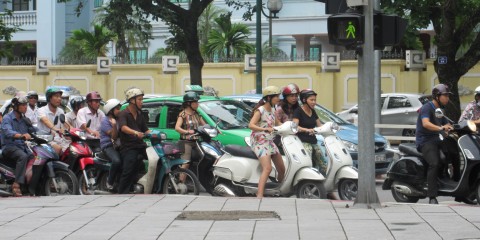
For those of you who have traveled abroad, or perhaps visited Miami, you know that much of the rest of the world treats traffic laws as a quaint yet utterly irrelevant feature of modern society. Vietnam provides a case in point. When you first walk on the streets, say in the Old Quarter of Hanoi, you are struck, if not by a moving vehicle, then by the mindboggling number of near misses about your person. Chaos!
As a little background, realize that you start with a vast number of motorbikes, that came on the scene well after the roads were built for a society with mostly bicycles in mind. In Hanoi alone, for 7 million people, 4 million of these things zip around (true fact as reported by Sunny, my tour guide). Each of these has one or more drivers, who may or may not be thinking of the esoteric concept called “rules”.
One possible rule to follow, when it’s convenient, is to drive on the right side of the road. But there are many MANY other factors that precede convenience in navigating the roads. Including whim. For your edification, I have recorded the following.
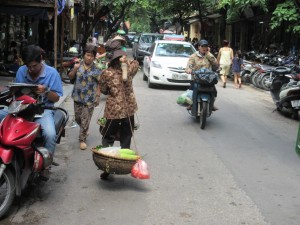
How To Cross The Street When No One Will Stop For You
That’s it for now. Stay tuned as I explore the rest of SE Asia traffic patterns. Next up: an overnight train ride from Danang to Saigon (or, for the truly stodgy, Ho Chi Minh City).
As part of my consulting plan here, I decided to look at my clients processes to see if we can do some redesign. Tooth whitening has always had an allure to me, for some reason I really don’t want to get into here, so I signed up to get my choppers whitened as a way to learn the process. The idea of Medical Tourism has also intrigued me too.
What did I find?
Finding 1: The East Meets West Dental Center staff, all Vietnamese, provide as skilled and modern dental service as my dentists in the U.S. They took the same care, used the same instruments, went through the same processes, and had the same results as I’d get in the US. Nothing in the staff’s service, other than the fact that their first language is Vietnamese, was different. And the customer facing nurses and dentists spoke good enough English to make it a non issue.
Finding 2: Since this is a nonprofit social enterprise, nearly all of their equipment is second hand (my chair came from a donor in China, the one next to me came from a donor in the US). But…..a chair feels like a chair, regardless of how many people have sat it in, right? Lighting lit, trays held stuff, instruments intruded in my mouth as usual. No differences. Supplies such as gloves, sponges, etc. were, of course, new. Who wants to re-use a pair of gloves??? Not me!
Finding 3: It’s a LOT cheaper! This office did a process called Vital Whitening, which cleans your teeth, applies a powerful peroxide gel on the teeth, and then uses special lights to activate the gel and increase the bleaching of my nasty coffee stained teeth. Took about 2 hours. In the US, and I priced it before leaving, doing this in a dentist office costs anywhere from $600 – $1,000. Here, in lovely Danang Vietnam, I paid $85. Makes me very happy.
Finding 4: I LIKE thinking about what to do with the $500-$900 I just saved! And I’m happy with my treatment, my teeth are much brighter and all with no pain or suffering. I just can’t have coffee, tea, coke, or curry for 10 days. Harumph!
I arrive in Hanoi wondering what I’ll find. I mean, my country bombed the hell out of these people 45 years ago, in a war that most, including Robert McNamara, admit was a horrific mistake. Hanoi. From the time I was 7 years old until, really, 17, the Vietnam war was always on our mind. Walter Cronkite reporting body counts nightly. War protests in Ann Arbor down on campus. Vietnam. In 1965, when I was just a little kid, a 20 yr old who lived just 3 houses down, David McKenzie, was killed in Vietnam after jumping on a hand grenade to protect his friends. I had dreams of the Viet Cong in black pajamas coming for me. And as the war kept going, and I approached 18, the fact that the draft was a lottery didn’t help my fear of having to go myself. I remember vividly one day, I guess I was about 10, sitting alone in my bathroom, terrified that I would have to go to Vietnam. Eventually, movies like Platoon, Red Line, Apocolypse Now, even Good Morning, Vietnam, brought visualizations of what that war was. And all of this was supposed to be coming from the evil Communists led by Ho Chi Minh, and backed by the equally evil Soviets.
So when do I happen to arrive in Hanoi? Why during their national holiday, of course, celebrating their independence from the French, and Ho Chi Minh’s historical speech declaring the establishment of the Democratic Peoples Republic of Vietnam! The red flag with the yellow star in the middle, that I remember anti-war demonstrators waving on campus during the protests, the same flag that for many instilled fear of the inevitable march of Communism through the “Domino Theory”….these flags are out every where I go today, like we put up our American flag on July 4.
So with this as psychological baggage, I walked up to the passport control at Hanoi airport, truly nervous. I know….I’m not ignorant (well, with this sort of thing). I’ve read enough and talked with friends and people who have been here recently. Their reports: Since 1995 and Bill Clinton’s visit, Vietnam has moved on, they truly want to develop their society, and nearly all see most of us Americans as helpful in that. The war was a couple generations ago. Yet, memories are sticky things, and mine, from the musty recesses of my child’s brain, was that Americans came to Vietnam to die. But the woman at the passport window simply looked at my USA passport, smiled (okay, it was more of a bureaucratic perfunctory grimace), checked my visa, handed it back, and said thank you. In English. Thus began the unraveling of my musty memories of Hanoi.
Today I went straight to it. Visited the Hoa Lo prison, the notorious “Hanoi Hilton” that tortured US pilots, including John McCain. Walked up to the ticket booth, paid 20,000 dong (<$1) and just walked in. Remember a few posts ago where I talked about being in an historical place and connecting to it? I did that here too. Most of the prison museum is about how the French imprisoned Vietnamese dissidents (patriots, as presented in the museum posters). And it wasn’t pretty. Even have on display the guillotine they used on some of them. I learned that most of the prison where the American POWs were kept had been torn down for a new shiny shopping mall. But I found two rooms dedicated to the Vietnam War time. Now whether or not the display was propaganda depends on which side you’re on. All I can say is that there is no mention of torture, but plenty of mention of the destruction the 1972 Christmas bombing program (Operation Linebacker II ) did to Hanoi and its residents. And, while being a POW wasn’t great, as the tour guide I was eavesdropping in on explained to the couple from Missouri, the prisoners “were treated well, and could do things like read books, play cards, play basketball, decorate their rooms, ….”. The stories of torture are pretty well documented elsewhere. Anyway, I’ve seen the movie Hanoi Hilton, and it was strange being in that same place. What I left with was a feeling of how badly we humans treat each other. Sobering.
I took more pictures, and may post them eventually, but they’re kind of depressing. If you’re interested, search here.
[A fascinating story of resolve and ingenuity, that I have learned since I wrote this, is that of one particular POW, Jeremiah Denton (who later became a US Senator). During a 1966 TV interview that the North Vietnamese intended to use a propaganda, he blinked out, in Morse Code, “T-O-R-T-U-R-E” without his captors knowing it. A Navy intelligence officer watching the interview noticed it, and that’s how he communicated the real story of what was happening in that prison to American POWs. See clip here. And story here.
After the prison, I needed a break. It was lunch time, so I wandered around and thought I’d found something new and adventurous, but it turned out to the be the same great restaurant I’d been to the day before with Forest, my new Chinese truck sales man buddy (who I’d met in the hotel over breakfast). Decided that I wanted to branch out and try something different so ordered up Pho Ga (chicken noodle soup), not so different, aaaaannndddd…. Green Papaya Salad with Sparrow. That’s right, I ate sparrow. It did NOT taste like chicken , because it was WAY crunchier than chicken. I declined eating the head and beak. But the taste was very nice, rich and slightly gamey, in a good way. As you can imagine, there wasn’t much. I think I got one sparrow, not a flock. Anyway, tasty meal for less than $10, including beer.
Next stop today was the Army Museum, which I heard had a lot of Vietnam War era weapons but not much description. And that pretty much turned out to be true. They had lots of captured materiel. Tanks, jets, howitzers, and plenty of smaller weapons and equipment captured at various times. All of the signs on the US weapons talked about the damage they had done, while all of the Vietnamese weapons talked about the victorious battles they had helped win. Fair enough, it’s their museum. What was odd was seeing specific weapons (like anti-aircraft guns) with the stories about which planes they had shot down, piloted by which US servicemen. With names. I don’t know what to say about this, except it felt odd reading the other side of the story. There is a bust of an old woman, who was quite famous, I guess, for having lost 9 brothers and sons to the wars against the French and US. Can’t imagine losing that many brothers and sons.
Across the street from the museum was a big old Cold War statue of yours and my favorite social engineer, straight from 1919, none other than…….one V. I. Lenin himself! I think this must be one the last remaining public statues of him in the world.
In 2014, when even the Russians don’t have many statues of him any more, as I’ve read, yet his presence in a place of honor just struck me as anachronistic.
My last stop today was Thuc Bach Lake, where Hanoi residents and soldiers hauled John McCain out of, after shooting him down as he was bombing Hanoi . Again, a weird place to be. I mean, a future US Presidential candidate had been pulled out of this lake in front of me, body broken, and near death. Then put in the Hanoi Hilton.
So that was my day of connecting to the Vietnam War in Hanoi. And what it did for me was resolve and reset the decades long mental images and beliefs I’ve carried of this place. This, I think, is how we get over any obsolete and purely invented emotions and thoughts. Get in touch with the reality, and get out of our Shadow thinking. The stark contrast between these images, seen in person, to the experience I’ve had with today’s Hanoi and Vietnam, did the trick.
So next post, TODAY’S Hanoi, and Vietnam! And I think I’ll start off with the fascinating, crazy, almost unbelievable until you see it world of traffic, and scootering!
If you’re a going to be a regular reader of this blog, prepare yourself for some rather raw thoughts from me. I’m at the point where I’ve held on to so many identities so cautiously (son, husband, parent, teacher, consultant, “responsible got it together friend”) that this year is my year of letting all that go and reclaiming what’s beneath. Mostly it will be a whimsical travelogue, because I like to write those kinds of posts, and I want you to be entertained as I am by what happens. But it will not be all rosy and peppy. I’m going to put some very personal stuff up here, partly because I need to write it, and partly because putting it out to all of you is an edgy kind of honest risk that I want to take now. Since some of you have decided or been forced to, for better or worse, to join me on some part of my Life, (Thank you!), let me assure you that the only person I’ll embarrass is myself. And I’m no longer really worried about the consequences of that.
So, let’s begin. There’s an element of wanting to improve myself on this trip. To somehow find wisdom, to come back, like Moses on the mountain top, a changed man. My Ego is doing a good job on me of building expectations of enlightenment, that I will somehow gain something from this trip. That I will do such good deeds, think such deep and profound thoughts, act in such mature and evolved ways…that all that justifies this year long journey.
Instead…..I’m just sorta not doing anything. I’m meeting people, but not deeply. The language barrier, and my shyness prevent that. I’m not the Worlds Most Interesting Man here. I’m not Dave Barry, or Mark Twain, or Joseph Campbell, or Bill Bryson…. This morning I puttered around my tiny Hong Kong airbnb room wondering what to do (I’m talking TINY…the bathroom is in the closet!). Made up the story to myself of “going to the coffee shop to write” to give meaning to the day. Presumably to write deep thoughts. Instead, I wandered around the crowded sweltering streets, got mildly lost, came across a post office and mailed home a box of souvenirs from China, walked into a random low rent, claustrophobic indoor shopping mall (intensely populated by desperate Asian Indians who all implored me to buy women’s bags – “good quality”, watches – likely fake, or some other such stuff that I have no interest in).
I checked out the menu from the Outback restaurant and found myself saying ,”Really? You’re checking out Outback? Where is your adventure? Aren’t you supposed to be diving into some back alley to try Andrew Zimmerman or Anthony Bourdain delicacies, have a few beers and then like Ernest Hemingway come away with stories about a Cambodian man I’ve met, same birthdate as me, who escaped slavery on a Thai shrimping boat to make his way on a rickety craft on the South China Sea with 200 others to Hong Kong, where he’s scraping together a meager yet honorable existence so he can send back his remittances to his extended family of 15 in Cambodia? And we become fast friends, vowing to stay close the rest of our lives here on earth?” Jimmy Buffet “African Friend” stuff! But no.
Instead I’m sitting here alone, at a short table, in some random ex pat bar named Mes Amis on Ashley Street , in Tsim Sha Tsui (Hong Kong), surrounded by mostly non Asians around me, drinking a second pint of Asahi, for godssake!! THIS is the Big Year Traveling Around the World? THIS is going to make me an Enlightened Global Citizen? Harumph…
I wonder why I did this. I’m not scared or sad or anxious. I believe I can “not do anything” anywhere in the world. (Well, maybe except for war zones, where I’m not too interested in going to at the moment). This Trip Around the World became a thing in my mind a couple years ago and when nothing and no one resisted it, that idea became a Thing that gained its own momentum. And once ideas like this get momentum, you just get carried along by it.
So here I am. Sitting alone in a bar that looks no different from bars in San Francisco, or Ann Arbor, or Munich, or even Dubai….with drunk ex pats, over half of them squinting into their smartphones. Even the music is the same as it is in those other places…some sort of Western Top 40 pop tunes (with some classic stuff too, Santana’s Black Magic Woman is up now!) And, after a month of “checking out East Asia”, I’m ruminating on the questions: Why am I here? Why am I doing this?
Okay, so it’s true that I begin contributing again Sep 4 in Danang, Vietnam. Offered my pro bono business consulting services to the East Meets West Dental Clinic, whose staff seem genuinely excited about my coming. For 6 weeks.
So I’ll get to something meaningful (ie, contribution) soon. But this past month of touring Japan, S. Korea, China and now Hong Kong (okay, still part of China but feels MUCH different)…. this past month of touring has left me wondering why I’m doing this. It’s nice to SEE stuff (see previous and future blog entries). But is that enough? Shouldn’t I be improving something? Or making an impact of some sort? At the very least, being 56, shouldn’t I be in the prime of my earning potential, gathering the bucks so I can retire comfortably? I’m not rich now. I can’t retire unless I buy an RV and live in Quartzsite, Arizona. I should be making money, right?
But there was something in my awareness, over the last few years, that said….why not? These are the thoughts that have been coming back to me time and again: “You can always make more money. You can’t make more time.“ “If not now, when?” “You’re a global citizen, not just an American, so get to know the rest of the world” “ I feel more comfortable with the sensibilities (selectively chosen) of the rest of the world than of the strident chest thumping of American superiority political discourse.” (okay, that last one isn’t as pithy, but….it’s there). “Isn’t it just plain cool to know that I can live in different cultures and worlds, and connect with people from those different cultures and worlds? So get out there and do it some more!” “Your career is kinda stalled now, so why not?” “I can live cheaper on the road, than I can in SF, so this is a shrewd economic choice!” “I’ll always be a dad, but my sons don’t need me they way they used to, and it’s probably better if I’m gone for a year”. These are the questions that pushed me along to leaving everything – and everyone – to go on this journey.
New tune! Neil Young’s Keep on Rockin’ in the Free World filling the bar as one guy hauls a too drunk friend to the bathroom in the back of Mes Amis.
There are no conclusions to this sort of musing. But this sort of musing may be THE reason why I am taking this journey. To give myself space from the urgencies of making a living in the Bay Area to peel back the layers of ossified beliefs that 56 years of living has accumulated.
If you’ve read this far, what do you think? What opportunities do you feel a calling to give yourself, to lay bare and strip away the stories and filters and assumptions that you’ve accumulated over your time here on earth so far? And what would you do with a year away from everything, except yourself?
Take a good look at that picture again. Where in the world is Dave? Nooo…not LA. Not Florida. Give up? Sure you do!! I’m in Hong Kong Disneyland Resort, home of one of 3 Asian Disney theme parks. How many of you knew there were three? Tokyo was the first, then Hong Kong and they’re building a new one in Shanghai. And I’m here to report on the one in Hong Kong.
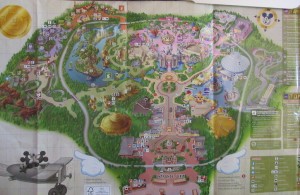 I have no official numbers for these things, but I’d say the Hong Kong park is about 67.8% of the size of the one in Anaheim. The same layout and features: Main Street USA, Adventureland, Tomorrowland, Fantasyland. Rides that are the same: Small World, Thunder Mountain railroad (called Grizzly Peak Railroad here), Space Mountain, Jungle Cruise, Disney Railroad, a tree house (in LA it’s called Robinson Family Treehouse, or used to be, here, it’s called Tarzan’s Treehouse).
I have no official numbers for these things, but I’d say the Hong Kong park is about 67.8% of the size of the one in Anaheim. The same layout and features: Main Street USA, Adventureland, Tomorrowland, Fantasyland. Rides that are the same: Small World, Thunder Mountain railroad (called Grizzly Peak Railroad here), Space Mountain, Jungle Cruise, Disney Railroad, a tree house (in LA it’s called Robinson Family Treehouse, or used to be, here, it’s called Tarzan’s Treehouse).
What’s different? Instead of Frontierland, they have Grizzly Gulch. Instead of New Orleans Square they have Mystic Point (more of a global explorers club theme, like “80 Days Around the World”). Instead of Toontown, they have Toy Story Land. Instead of Tom Sawyers island they have Rafts to Tarzans Treehouse. For rides, they have a really nice ride called “Mystic Manor” which is a fusion of Haunted House (ride and building set up) and Indiana Jones (adventure motif). I really like this ride and it could easily work in the US parks.
What don’t they have? Tiki Room, Indiana Jones, Star Tours, Pirates of the Caribbean, Splash Mountain, Hall of Presidents / Mr. Lincoln (duh), Country Bear Jamboree, the Golden Horseshoe Saloon, the shooting galleries, the Mark Twain boat ride, and probably some other stuff. Look it up if you really care.
They have some pretty spiffy rides in Toy Story Land that they don’t have in LA. RC Racer, a ride on a U shaped track that slides up and down and up and down, forwards and backwards, forwards and backwards. The Toy Soldier Parachute Drop, where you go way high up in the air and then free fall. And the Slinky Dog Spin. Which is sort of like a Tilt A Whirl, without the spinning. Tomorrowland has a fun Encounters With Stich show, and a laser shoot up ride called Buzz Lightyear Astro Blasters. And, for nostalgia buffs….Autopia!
What’s most different is the food they offer up. Where LA has just popcorn and cotton candy here they have popcorn, cotton candy AND packets of dried squid and shrimp balls. Yum!
Here’s a sampling of tasty dishes offered around the park. Not the same as in the US, eh?
One other design feature that strikes me as odd. Clearly Disney has put lots of money and care into making this just as high quality as any other park, albeit slightly smaller. However, lining Main Street towards the Enchanted Castle, they’ve opted to use painted screens for some of the facades, rather than “real” wood, paint and window facades.
Not sure why they did this. It doesn’t LOOK like they’re doing construction behind it, and inside are real retail stores. But it had the effect on me, as I walked down the street, of cheapness. And so I expected a less than great experience (which changed as I actually went through the park). So, who knows?
All signs have both English and Chinese. The Jungle Cruise had two lines, one for Chinese speakers and one for English speakers. The line for the Grizzly Peak Railroad rollercoaster was about 15 minutes long. But since I was a single, they put me in a separate line to fill in. I was one of just 4 people in that line. In the US, that line would be almost as filled up with families and groups who were happy to go single. Here, all empty while the other line was full. Strange…
Songs were mostly in English. Dialogue was mostly in English, sometimes with bits of Chinese spoken or subtitles on a screen. I mean, I GET that the British were here for a long time but they left 14 years ago, and this is China! However, I saw NO indication of mainland China control here. I’m sure there were people from mainland China, but it really felt like LA or FL. Except for the damn umbrellas. Every other person is carrying an umbrella, in the sun, so they won’t tan. And these umbrellas are hazardous to people over, oh say, 6 feet tall! LIKE ME! My sunglasses serve as safety goggles around here. Oh, and almost no one wears sunglasses. I don’t know why. Do you?
Best sign I saw all day was in the line to Small World: “You Should Be Sober and in Good Health To Ride”. Who knew drunks liked the Small World ride so much?
Cost was US$60 for the day, I think the LA cost is around US$100. Took the train from downtown Kowloon to the special Disney train that fed into the Sunny Hill stop. Cost round trip: US$ 6
All in all, not much different from the LA/FL parks. Felt very American. Which I was both wanting and curious about. The only real dissonance to me was (a) being alone and (b) seeing no Americans. Which is another thing: why don’t Americans travel? I see a good representation of Australians/Kiwis, Europeans and even Middle Easterners. But rarely do I find an American not in an organized tour. Not just Disneyland, but this whole last month. What gives, Americans??? Get out in the world!
Well, anyway, that’s the report from Disneyland Hong Kong. Well worth the shot of Americana if you’re traipsing around the globe and need it. Like I did. Disney haters…sorry.
First up…Tiananmen Square! the largest public square in the world, capable of holding a million, Chairman Mao’s Mausoleum, the Monument to the People’s Heroes, and the Great Hall of the People – home of the National People’s Congress, flank the Square. Walk through the Gate of Heavenly Peace, under the famed portrait of Chairman Mao.
So let me start this off with my impressions. There’s plenty of, and most certainly more accurate, information about this part of Beijing online. So I won’t try to add too much to that stuff. Instead, I’ll just provide my impressions about things I’m pretty sure you don’t know about. Garrison Keillor has a great insight into telling stories about people and events that readers have not experienced: it gives the story teller some latitude with the truth, which is a helpful thing for a story teller.
Tiananmen has been a very important place in Chinese history , not the least of which for me was the 1989 protests when perhaps hundreds of civilians and 50-60 policement were killed. So I took a moment to just stand there, looking at Mao’s portrait before me, Mao’s mausoleum behind me, the People’s Congress Hall, home of the Communist Party, to the left and the Forbidden City ahead of me. One thing I do when I visit a place that has been important to human history (Machu Picchu, Dachau, Anne Frank’s home in Amsterdam, Boston, the Portland ME air terminal where several of the 9/11 terrorists took off from, Hiroshima, the DMZ in Korea, even Angel Island), is turn on whatever senses I have to feel the place. To imagine being in that space when the events happened. It’s kinda weird, I suppose (maybe I’ve been living in California too long), and whether it’s real or just psychological projections, I usually can tap into an emotion of the place. What I tapped into in Tiananmen was surprising, since I was expecting something about the 1989 uprising. Instead I had a feeling of the movement of immense history, standing in front of the Forbidden City, where Emperors had lived and ruled since the 1400s. This place has a history of thousands of years, even before the Forbidden City was built.
Part of my curiosity in doing this is to have a feeling. Feeling a part of the flow of humanity and history, feeling an extension of those that have come before me and connected, somehow, to the generations that will follow me. At some level, there is nothing more to come from that feeling, it’s just to have it. I like to imagine myself belonging to that flow. Another part of my curiosity in doing this is to learn from it, and notice where I get inspiration from it. And then apply what I learn. For example, standing in the quiet of Anne Frank’s room, I noticed a new insight into the fear of a child from horrific forces beyond her control. And that let me understand my own fears better, and with that understanding I can let them go, rather than take me over. Standing in the rain in Machu Picchu, I noticed a new insight into how I relate to the earth, as I felt and thought about how the Inca related to the earth in that very space and air. And that lets me understand what I can do for the earth, which in my case inspired me to approach my work with double bottom line businesses more passionately. So being in a place, reflecting on what went on there moments, decades, centuries, even millennia before, even connecting to it in some tangible way, is something I’ve found great value in doing. Tiananmen, this time, makes me understand how unique and astonishing it is for me to live with such personal freedom, a freedom that millions before me never could imagine due to caste or social systems that they were simply born into. I can already feel that insight changing the way I think about how to “use” that freedom to make my contribution to this world as I make this journey. (Stay tuned!!)
Anyway. Another thing that I noticed on Tiananmen was the novelty of the blonde haired kids in our tour group! It was our group’s first experience with “paparazzi”, where Chinese families would shove their kids into a picture with our kids, and sometimes me and the other parents, for some reason. This happened again and again throughout our stay in China, no matter where we were. We should have charged.
Michelle, my friend who joined me for this trip, is an attractive blonde, and she got a LOT of attention from Chinese men, who would just look her up and down with no shame, didn’t even try to hide it. She handled it very well, I thought, basically ignoring them. I learned to use this to my advantage. I found that interesting people didn’t mind me taking pictures of them, as long as they could look at Michelle. Worked for me! Thanks, Michelle!
There are so many shots and stories about the Forbidden City on the web, that I won’t go into those. Here are a few shots I took, and like, though.
Our next Beijing adventure was a bicycle rickshaw ride through the Hutong just west of the Forbidden City, along Zhong Hai (lake). Our rickshaw driver was a hoot! He wore a faux straw hat with Ronaldhino on it, after the Brazilian footballer. He drew Michelle and me from our tour group (all small slender people), looked at me, shook his head and held his hands out in a circle in front of his belly. He wasn’t too pleased with my weight. But I told him to suck it up, in English, which he may or may not have understood literally, but he got the idea so Michelle and I mounted the rickshaw and he took off after the rest of the rickshaws hauling our group around.
Several things about the rickshaw trip are worth reporting. Hutong means “narrow streets”. And these were indeed narrow streets, but filled to the gills with virtually every type of conveyance you can imagine. Cars, trucks, rickshaws, electric scooters, bicycles, bicycle “trucks”, and pedestrians all vied for the precious ephemeral vector provided them.
At first I was impressed with the fact that no one gets in accidents with such seemingly chaotic driving and maneuvering. Just then a slight, bent over woman, at least 145 years old, tottered towards our path and instead of slowing down, our driver rang his little bell, yelled and kept moving. She looked up and stopped…half a second before we would have plowed her over. No apologies, no cursing. She just pulled up, let us pass less than an inch in front of her aged self, and….the craziness continued.
And then we crashed. Into another rickshaw whose driver had the same attitude as ours did regarding oncoming traffic. It was a fairly violent crash, as much as rickshaw crashes can be violent. We struck amidships, our canopy was jerked back hard, the sun was again bearing down on us, and we were unhurt. But the metal frame was severely bent, strong metal bands rippled along their length.
Our driver actually stopped this time, and came around to the side of the impact, muttering something I can only assume was Chinese cussing. But the way he looked at us, a disgusted, scowling glance through the sides of his eyes, made me think that he held us accountable for at least part of this annoyance. I, of course, as a stupid tourist, smiled at him and said “You crashed!”. I don’t know if he understood me or not, or wanted to, but he grunted, grabbed the canopy and – with his bare hands – bent the heavy metal frame back into relative straightness. He looked at me again, with continued disgust, walked back to his seat, scowled over his shoulder AGAIN at me, and drove off. I should say, at this point, that despite all the apparent grumpiness of our man, he had a twinkle in his eye throughout. So I never felt threatened, or at risk of being tossed into the lake. I think he was having fun playing the Grumpy Old Rickshaw Driver.
We had no more incidents on our way to our destination; lunch in a traditional Beijing courtyard home. Homes in the Hutong were clustered around a common courtyard, maybe 8-10 homes per cluster. Sometimes different families lived in them, sometimes extended families lived within a cluster. In extremely tight space, with little space between homes, people lived, cooked, grew vegetables and fruits, hung cages with song birds in them, stored scooters and barrels full of who knows what, and probably snored, yelled and blew their nose too (lots of loud nose blowing here).
Our hostess for lunch was one Mrs. Fang. A widow whose children moved away, she makes money, in addition to her pension, by providing lunch for tours like ours, in her home. On a day she is hosting such a group, she goes to the market very early, picks out the food, comes home and prepares it for a 1pm meal. Then cleans it all up. And, judging by the ginormous portions and number of dishes, manages to use the left overs for herself…for the next week or so.
Her house was “typical”, whatever that means. But one thing I have to say at this point is the impact that the 2008 Beijing Olympics had on ALL of Beijing. Evidently, before 2007, houses like these were not that great. Now they are still small and simple, but they have been renovated: fixed walls, fresh paint, room A/C, internet service, new plumbing. And this apparently has happened throughout Beijing, and more recently has continued in other parts of the country. More about the impact of the Olympics later, but the House of Mrs. Fang was very nice. Spartan by most US standards, but…hey!..she has wifi!
After thanking Mrs. Fang, we ventured back to Our Man in the rickshaw, who seemed to be in a better mood. Although he again rolled his eyes after I told him I had just had a big meal and was heavier. (I think he understood more English than he let on.) We hopped into our chariot of fatigued metal and drove on, basically retracing our route to the rickshaw stand out side the Forbidden City. Michelle and I decided that a tip was in order, despite the country tradition of no tips. I mean, we had clearly subjected Our Man to an unreasonably traumatic experience that his weary and sore thighs would keep reminding him of for days to come. At least that’s what we read into his eyes, smiling though they were. So at the end, we hopped out (well, Michelle hopped, I more lugubriously lumbered) handed him some yuan (6 yuan to 1 US$) and he smiled, thanked us, rolled his eyes again and turned back to his rickshaw stand.
Well! My first censorship issue with the Chinese government arises the first day I’m here. Evidently, many of the sites I use to communicate with everyone (including Google, my email accounts on Google, and Facebook) are being blocked. I can’t get to them. I get a server timeout when I try to access them. And updating my WordPress site takes a LOOOOONG time. Grrr..
I’ll try to work around this (I have some ideas about US proxies and cloaking), but my posts may be delayed for awhile. And if you email me, I may not be able to get it. Viber, the smartphone/desktop chat app, seems to work, so if you’re so inclined, look me up there.
If anyone has some bright ideas, let me know. By the way, it COULD be my wifi connection, but I’m in the Marriott Beijing and they seem not so sketchy.
Thanks, Chinese government!
UPDATE: If you’re ever in this situation, I can highly recommend PandaPow as a VPN to get around this pesky issue. I recommend you install it before you come to China.
So I’m sitting here at Coffee Smith, in the Itaewon district of Seoul Korea, and I’m noticing the connection I have to the rest of the world of people. The place is big for a coffee shop, contoured concrete walls, exposed concrete ceiling with open ductwork. Tables are rough hewn dark wood, solidly constructed, some upholsdtered with dark faux leather, some padded on the seat only with wood backs, some just solid wood. Floor is dark hardwood, scratched and scuffled by the thousands of feet that have passed over it. Lighting is low but sufficient at night (now), the front is floor to ceiling picture windows looking out on Itaewon street, with a southern exposure. The A/C, this hot humid August day is pumped up, and comfortable.
It’s about 8pm on a Monday night, and I’m surrounded by young South Koreans, not understanding a word they say, but getting the clear feeling of their beautiful optimism. The 3 guys in front of me talking earnestly, breaking up in laughter occasionally. Dressed, this Monday night, in t shirts and ball caps. An orange cap on straight, a camo cap with a black bill on backwards, and the navy cap on the table next to their coffee drinks. The guys are just talking, nodding, smiling. At the table next to them sits a couple, chairs shoved up close side by side. Leaning into each other as they she shows him pictures on her phone, he commenting on each one with a flirty smile, she laughing and moving her body away… and then back against him to show the next shot. The next table with a young woman dressed in a black shirt and dark pants, earbuds plugged in as she holds a book open with her left hand while she writes in her notebook or journal with her right. An empty bottle of mango juice in front of her. From time to time she taps on her phone, checks her messages, then stretches. Fidgets with her earbud cord, and reads some more from the book. All the while English language pop music pumps out here in Seoul Korea as it does in a San Francisco (Coffee Bar, Stable) or Lima Peru coffee shop (Café Zed).
There is a culture of coffee shops that, so far in my experience, is universal. The differences are superficial – slightly different products, prices. Décor is universally diverse (except for Starbucks, which I’m not visiting or talking about). Coffee shops around the world are a place where people under 35 meet, work alone or collaboratively, socialize, relax. Some stay hours, some 15 minutes or less. As I’m traveling around the world, intentionally immersing myself in cultures and languages I am largely clueless about, I’m finding that these coffee shops give me a place to relax, to let the flood of new stimuli flow over and through me. Coffee shops give me a home base of sorts, to reconnect to myself, to calm and self-soothe when I get anxious about the loneliness, the uncertainty and chaos, and density of the new place. While I can’t speak the local language and actually talk to people, I can look at those around me and pretty much know (or at least project!) what they’re doing, and from that feel an affinity with the world of people that I don’t get outside the coffee shop as readily. And the ubiquitous wifi lets me stay in touch with my friends and family.
I’m glad I know this about coffee shops as I begin this year.
Took a tour of the recreated village from the Joseon dynasty about an hour south of Seoul: the Namsangol Hanok Village. TripAdvisor Review here. What I did NOT include in that review were pictures. So here are some. I’ll add more later. This is just a picture post!
I’ve been having so much fun looking around, that I’ve neglected my blog. Sorry gang. I’ll see what I can do about that.
I HAVE been putting all my daily stuff on the What I Did page (take a look if you haven’t), but it’s time to start putting up snippets of what’s been going on during this trip.
It’s been almost 2 weeks since I landed in Tokyo, and now find myself in Seoul after a Not So Harrowing / More Annoying encounter with typhoon 12. The blasted thing blew of out of the South China see and cancelled my sea voyage on the JR Kyushu Jet Ferry BEETLE, a ferry serving Fukuoka, Japan with Busan, S. Korea. My plans for a leisurely and other-timely train journey north through the Korean peninsula were DASHED on the 6 foot waves of the Tshushima Trough. The BEETLE’s owners were kind enough to send me an email me the night before departure, which put me into Emergency mode. Here’s a little peak into how my brain worked that night.
“Dammit! I wanted to take a boat! Really? A TYPHOON??? Stupid typhoon! Sigh…okay, what are my options? My Japan Rail Pass expires tomorrow, and it will probably cost $150 or so to get to Fukuoka in a few days after the typhoon is past. And I don’t want to spend any more money than I have to. I have the hotel reservation in Busan for after the ferry ride. Guess I need to cancel that.. Hmmm… okay, when should I leave – before or after the typhoon? Since my Japan Rail Pass expires tomorrow, should I just get my butt down to Fukuoka and wait out the storm? No! A quick check of airbnb and booking.com shows NO hotels under $250 a night less than 40KM from Fukuoka. Grrr. . Okay, what else? What if I just stayed here in Kyoto and THEN took a train to Fukuoka?? (I zip down to the front desk of my guesthouse and inquire of Maki, the innkeeper, if another night is possible. YES! I scuttle back to my room/planning HQ.) Okay, so I can stay here. But wait. My Japan Rail Pass STILL expires tomorrow. Dammit! Okay, what about flying? No, no, no..I want to fly as little as possible to have a LEISURELY trip around the world. Sigh….But there’s no other way. Fine. Just……fine. Check hipmunk for flights, bingo! Asiana has a flight out of Osaka Airport tomorrow. I could get a bus to the airport, looks like one gets there from Kyoto station in about 50 minutes. It’ll be break even, financially, from here to Seoul, so…get to it! But what do I do when I land in Seoul??? Quick email to my airbnb host in Seoul asking if I could come a night earlier. In due time, she says yes, no problem. So there it is. Flight booked. Current reservations cancelled. New night booked. Just need to figure out which bus to take in the morning! Aaackk… Back to the front desk where Corri, another staffer, calmly tells me that my web research must be wrong because there IS no bus that goes from Kyoto station to Osaka Kaisen airport. Dammit! But there IS an express train. Which will take my Japan Railpass (ha! Get MORE value out of that pass!!!). Seeing my manic state of affairs, she writes the info down carefully and in penmanship that no current American school child could pull off, hands it to me as if I’m on the edge, which I may be, and backs away. Smiling. I go up to my room and resume packing.”
That’s about how it happened. The next day was magical. Every connection I made – city bus to train to gate to flight to flight time to Korean express train into the city to prearranged taxi to rendezvous point at the Hamilton Hotel in Itaewon – was absolutely perfectly timed. Just enough time to be relaxed and never waited more than a few restful minutes to get to the next ride. I can’t remember when I’ve traveled so easily. And the typhoon was still out there…
There are loads of shrines and temples in Kyoto, so not all of them get the attention from the tourists. This one has just one tourist enjoying it. The door was open, and no one is here to greet me. No ticket booth, no signs saying “do not walk here”, no maintenance men. Just me and cicadas. With the sounds of distant thunder, maybe bringing rain, maybe just “heat” thunder as we used to call it in Michigan summers.
I got here by sheer luck. Eschewing the tourist bus that was recommended, I just started walking and got “lost” in a medium sized neighborhood. I kinda had my compass bearings set for a southeasterly amble, trusting that eventually I would run into the main Marutamachi / Higashioji-dori intersection. Which we all do, at some point in our lives. And I came across this open gate that looked like a driveway into some sort of school. Nothing said “do not enter”, so I entered. And it turned out to be this Yoshida Shrine! (shorter wiki entry in English)\
I know next to nothing about the history of shrines like this. I’ve read a few books, and I know a few facts (mostly about eras, patronage, various deities both Shinto and Buddhist and architecture). But what I am most interested in is what I know least about – the meanings people throughout the century created and reified in Shrines like this one.
And, I can’t ignore this one, I keep thinking of what it was like here during the early 1940s. I KNOW everyone has moved beyond WWII, and I wasn’t even alive then, but after a few days absorbing the history of Hiroshima, knowing Kyoto was on the short list for an A Bomb too, I wonder what life must have been like. How many families in this neighborhood, who asked for safety from this shrine, lost their men to the war? Was this a recruitment center for the armies that fought against the US? After the war, what role did this Shrine play as Japanese society rebuilt it’s entire being? It’s sense of what it meant to be Japanese.
As I’m typing off behind this tree, a Japanese man, middle aged, strides up to the shrine from the gate 100 yards to the left. It’s about 5pm, so maybe he’s coming home from work. He’s dressed in casual light clothing, not a business suit, so maybe he’s retired. He puts his bag down at his feet. Takes off his hat. Stands quietly with eyes closed (yes, I can see all this). He bows slightly. Stands again. Lightly claps his hands twice. Stands again. Seems to be reflecting or deliberating or asking, quietly. After 3-4 minutes he bows again, picks up his bag, and walks off in another direction. I wonder who he is. What he does. What kind of life he has led here, while I have led mine on the other side of the globe. We could be the same age. Curious.
I don’t have any insights or conclusions here. It’s a beautiful, peaceful day in Kyoto, Japan this last day of July, 2014. I’m on a year long trip around the world with some desires and goals, but no real overall agenda. I’m not trying to “find myself”, but I do want to put myself in unfamiliar places for long periods of time to see if more of me emerges, the parts of me that have been quiet for a long time, or maybe forever. There’s a Buddhist homily I really like: the useful part of the bowl is the empty space. I think in this trip I want to create empty space; to let go of old familiar beliefs and limitations and clinging, and then notice what else comes, maybe meekly, to fill it.
So that’s what I ask for today. To create some empty space. And, amid a crowded, frantic city with tens of thousands of tourists clambering to see as many temples as they can…..somehow I found my own, private, quiet, ancient Kyoto Shrine.
Speeding west at over 150mph on the Tokyo to Shin-Osaka Shinkansen “bullet train”, I’m struck by how fast my mind has been processing the last 36 hours. Landed in Tokyo’s Narita airport, with no sleep because the cute kid in behind me had entertained herself for 8 hours by poking at the game on the screen embedded in my chair. Had to lie on my customs form because no, I had no cell number that worked and no, I had no idea where I was going to be staying while in Japan, and no, I wasn’t sure EXACTLY when I was going to leave…so I gave answers that had no meaning, they liked it, and let me in. Didn’t check my luggage, nor question me except to ask “Why are you here?” THAT could answer honestly. “I want to look around” The nice man harumphed, stamped my passport, and I was in. Then I discovered that the Narita “free wifi” connects with a laptop, but not a smartphone (important because I needed to connect with my SV2 friend Stephanie who was picking me up!). Made that connection due to her resourcefulness and email, which feels positively ancient compared to texting and took the Narita Express to S’s place near Shibuya station.
Entry into Japan successful!
The first 48 hours were speedy. The language is dense, compared to my other travels in non English lands like Germany, Peru, and even United Arab Emirates, where my language skills or their wide adoption of English made it easy to get around. Here….not so much. Almost no one speaks English. Plus, Japanese has 3 “alphabets”, none of which are Latin based, so I can’t cheat. The effect of this, as could be expected, but for some of you may seem incredible, is that I have been rendered largely mute. I’ve learned some key phrases from my friend S who lives here, like “sumi masen”, which roughly translates to “excuse me, I’m sorry, my fault, forgive me”. When I want to get the attention of a food server, I confidently call out “sumi masen!”. When I want to ask someone a question, like “where am I?”, I politely open with “sumi masen”. When I stepped on that woman’s heel in an oafish way that caused daggers to fly out of her eyes, I plaintively offered “sumi masen”. For a guy with no local language or social skills, “sumi masen” is my go-to phrase.
I’m trying to avoid being annoying to people, but sometimes it’s just inevitable. For example, when I checked into my capsule hotel, the front clerk almost went apoplectic as I continually failed to understand that I was offending everyone’s sensibilities by wearing my shoes. They belonged in the locker behind me, against the wall…no shoes allowed in the hotel. He retaliated by giving me what I can only guess was the least desirable “capsule” in the place – on top and right at the entrance where all the noise happened. Oh well. I had successfully, without S’s expert assistance, found my way across Tokyo to this little back water hotel near the Ueno train station. Yes! Coupled with a very short jet lag (really just one night), I feel ready to go on this trip.
I actually enjoyed the capsule hotel experience. For those of you not fully up to date, Japan has these “hotels” that provide not a room, but a coffin-shaped capsule, complete with bedding, lighting and a TV. Plus a convenient screen to pull down for privacy. My capsule was 438, which was basically on the coveted top row. My TripAdvisor review of the Sauna & Capsule Hotel Hokuoh in Tokyo is here, but for my more personal audience, here is my capsule!
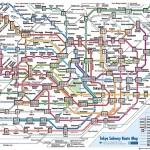 A couple quick observations about Tokyo and its denizens to this wide eyed naïve traveler. First, this is a Big City! Seems much bigger and denser than New York, and I’m not sure why. Could be the city’s organization (addresses are just as often out of order as they are sequential, streets just go all over the place, no grid like SF), could be the sheer volume of humanity and interactions, or it could be that all the signs are obviously in Japanese which floods my cognition like…uh…like (don’t go there, too insensitive…) like being in the middle of the grand finale of a July 4 fireworks display. (Phew). In any case, it’s overwhelming. In a Good Way! I’m like a Kansas farmboy going to the city for the first time. Mouth agape. Smiling at the newness and pure stimuli overload.
A couple quick observations about Tokyo and its denizens to this wide eyed naïve traveler. First, this is a Big City! Seems much bigger and denser than New York, and I’m not sure why. Could be the city’s organization (addresses are just as often out of order as they are sequential, streets just go all over the place, no grid like SF), could be the sheer volume of humanity and interactions, or it could be that all the signs are obviously in Japanese which floods my cognition like…uh…like (don’t go there, too insensitive…) like being in the middle of the grand finale of a July 4 fireworks display. (Phew). In any case, it’s overwhelming. In a Good Way! I’m like a Kansas farmboy going to the city for the first time. Mouth agape. Smiling at the newness and pure stimuli overload.
Second quick observation, aside from “normal” clothing attire, there seem to be three modes of dress that are different for me. First, for the “salary man”, the one who works in offices, there is the standard white shirt / dark grey slacks look. You see this effect especially on the train platforms, just hundreds of similarly dressed men. What’s fascinating is that they are in the middle of “Cool Biz” days, started when the Fukushima nuclear plant went down, and electricity supply (i.e., A/C, was suspect). At some point in the summer, everyone gets the signal that they can wear short sleeve dress shirts and no tie or suit. Until sometime in the fall when they go back to suits and ties. Not sure how they get this signal, but evidently they all do and one one day, everyone is in short sleeve shirts and no tie. Since it’s been 90 degrees and 80% humidity, make sense to me.
The second mode of dress is what I can best call “adventurous”. Mostly by the youth – bright and cartoonish or, less often, dark and brooding. (and remember, this is in 90 degree sweltering weather)
However, there is a third mode on that just befuddles me – Lolita Street Fashion. Women of ALL ages are wearing clothes that a young girl might put on a doll. I don’t think it’s goth, it seems like they just want to look like dolls. Here are some pictures ….you tell me.
I tried to take a few pictures of women on the street but they declined. Which was wise, I suppose. So these pictures are what I found that look pretty much like what I saw. Curious.
All in all, Tokyo to this wide eyed innocent jet lagged traveler, seems like a very thriving, affluent and happy place. Even more so than San Francisco – no homeless people or panhandlers, streets uniformly clean and non smelly. And quirky in their own way (see above “Lolita”).
Tomorrow….I travel to Hiroshima.
And….it’s time for another journey! Two years ago I spent a couple months in Peru, and had a predictably amazing time. Now I’m turning my sights to a Round The World Trip starting Summer 2014.
My plan is to do some touring and just looking around, some working or volunteering in places for a month or so, some living in a place for a while, and lots of openness for possibilities that I can’t imagine right now. And here’s where I’d love your help. What could I see/do? Who can I visit? I like to start off with a theme or two, to help guide me in making choices about what to do, and where to do it. And I could use your help here too! For example, three of my themes for Peru were “Adventure, Philanthropy, and Dave 3.0” Not bad, and they’ll probably be continued, but it seems like a Quest could be fun. I’ve been influenced by Joseph Campbell and his travel journal, “Sake and Satori”, so I’m thinking one theme could be “Meaning”. As in, how do people create meaning in the work in the year 2014? I’m imagining getting to know locals as personally as I can, in going to important cultural events and rituals, in learning histories and seeing how current society carries them to today. Another theme I’m thinking about is History – visiting places where important events have happened (where the Buddha sat under the tree, Hiroshima, Gandhi’s home, etc.). Anyway, I would love to hear about more themes, or places, people, and experiences to have. If you have some ideas, leave a comment here or send me an email! If you feel intrepid enough to JOIN me for a segment of my journey, let me know that too! While I do want some alone time, I’ll would love to have a friend or two (or more!) join in the adventure. Is there a place you’ve wanted to go but don’t want to go alone, or need a motivation to do it? Go with Dave! Next……my initial, almost-certain-to-change itinerary!
Europe
Europe
Europe
Europe
Europe
Europe
Europe
Europe
Europe

Europe

Europe

Europe
Europe

Europe

Europe

Europe

Africa

Africa

Africa

Africa

Africa, Europe

Europe

Europe

Europe
United States
United States
Africa

Africa

Africa

Africa

Africa
India

India

India

India

South Asia

South Asia

South Asia

East Asia

East Asia

East Asia

East Asia

East Asia

East Asia

East Asia

East Asia

East Asia

East Asia

East Asia
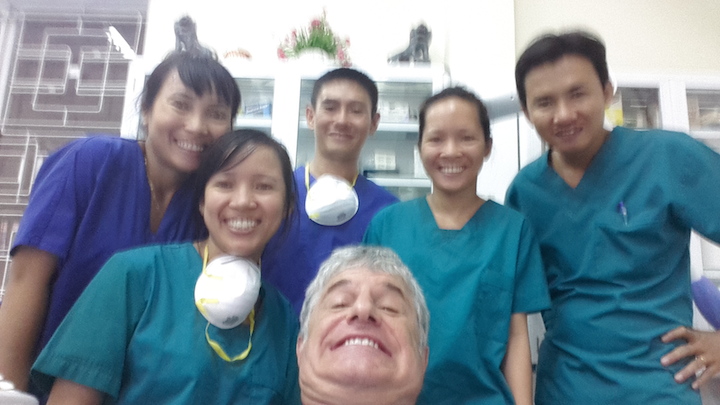
East Asia
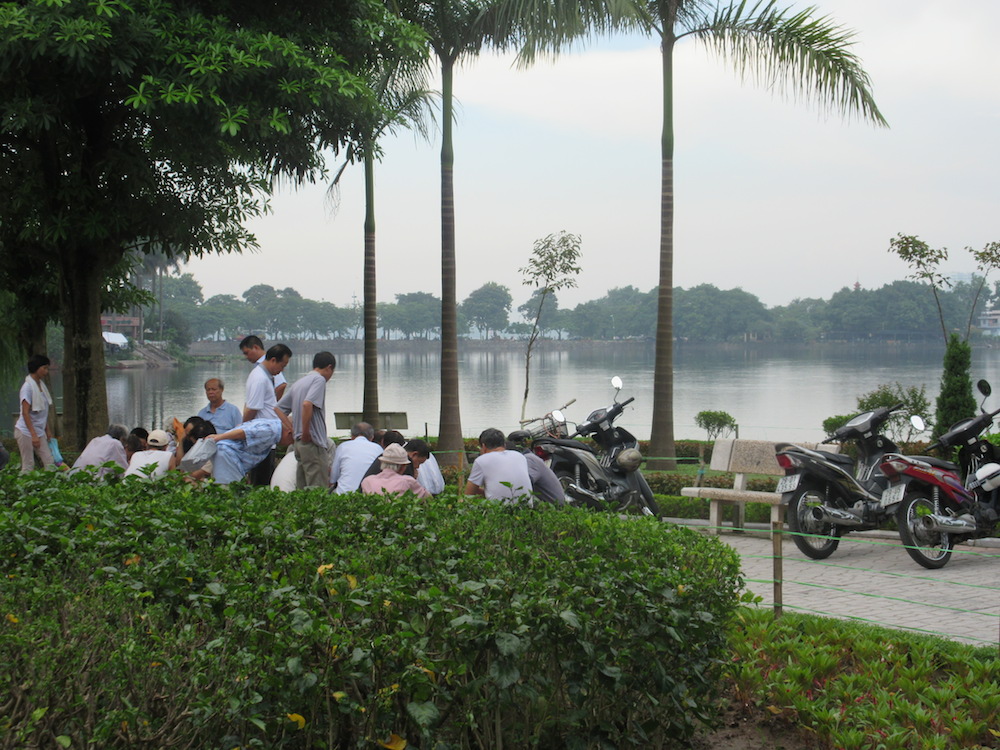
East Asia
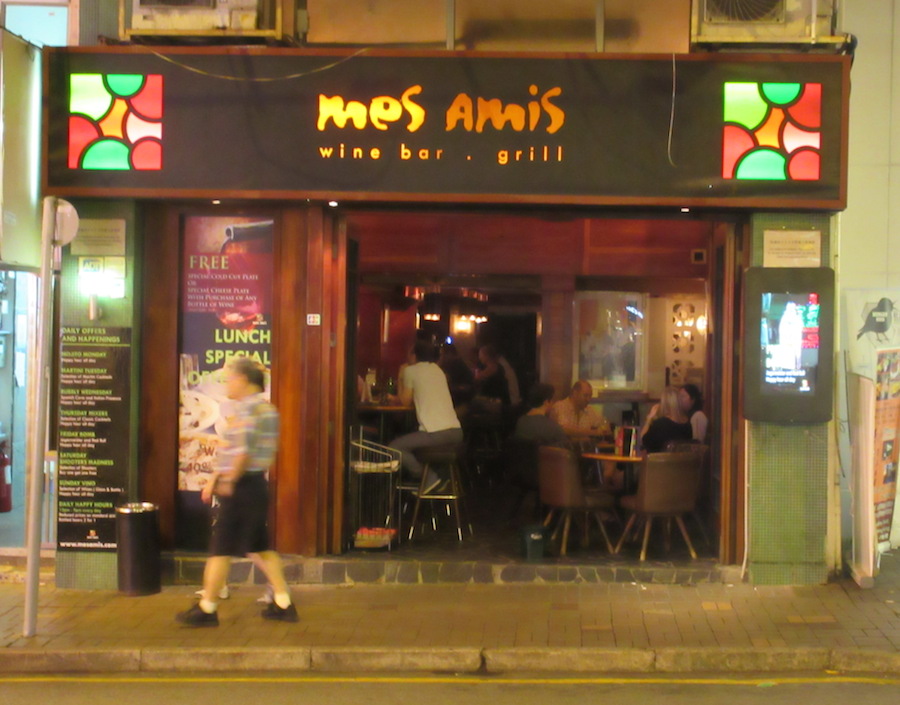
East Asia
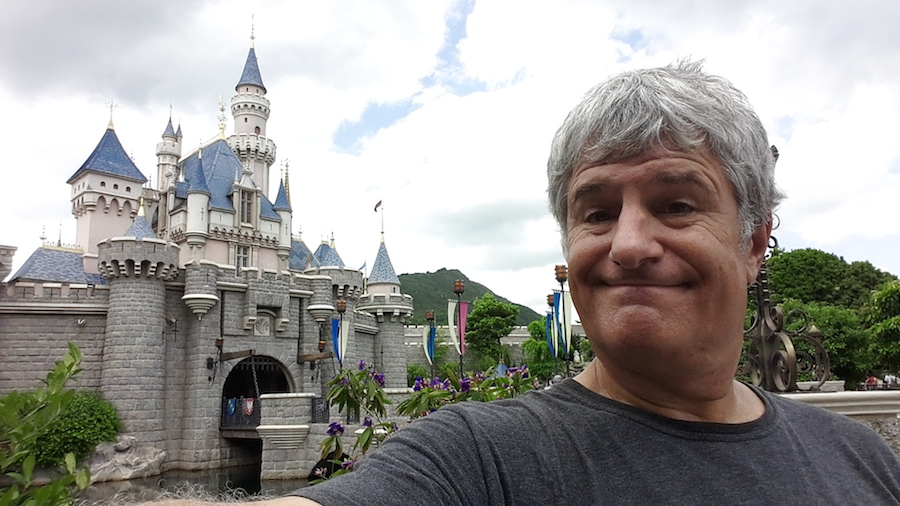
East Asia
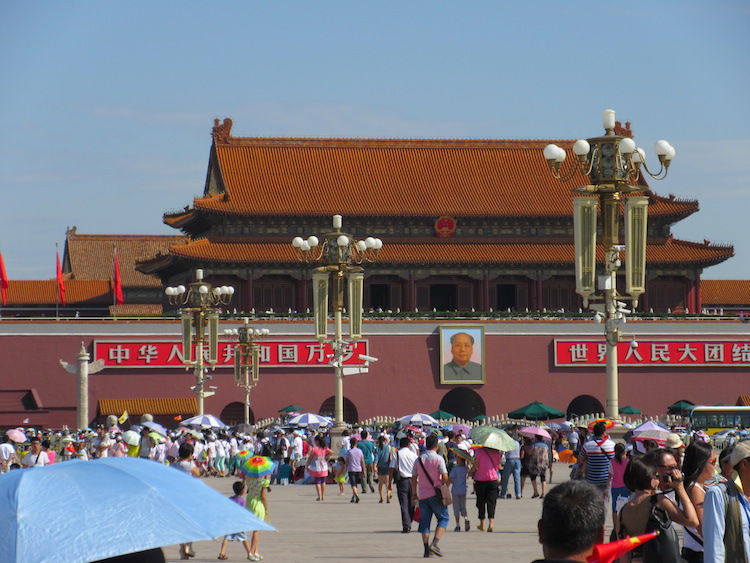
East Asia
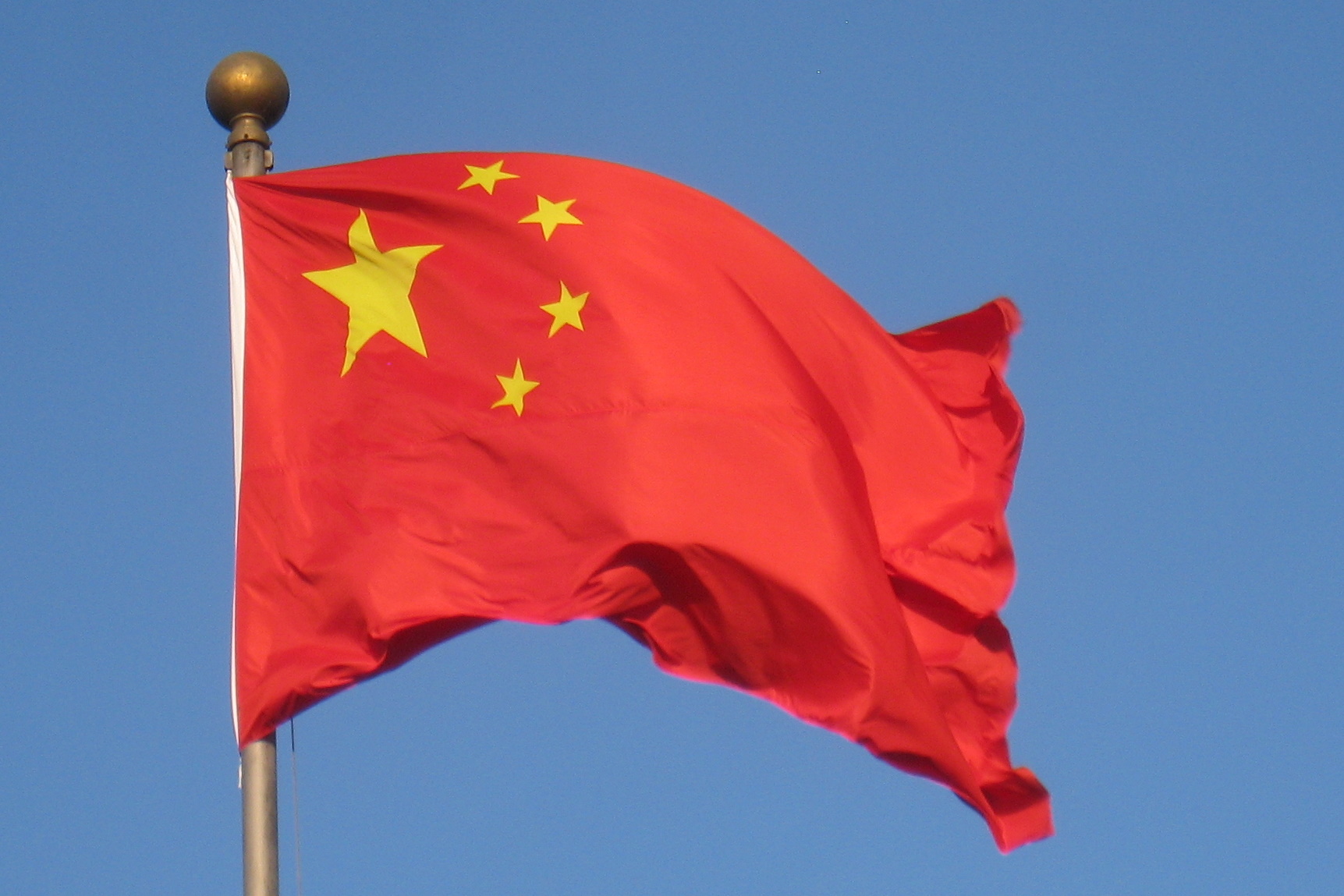
East Asia
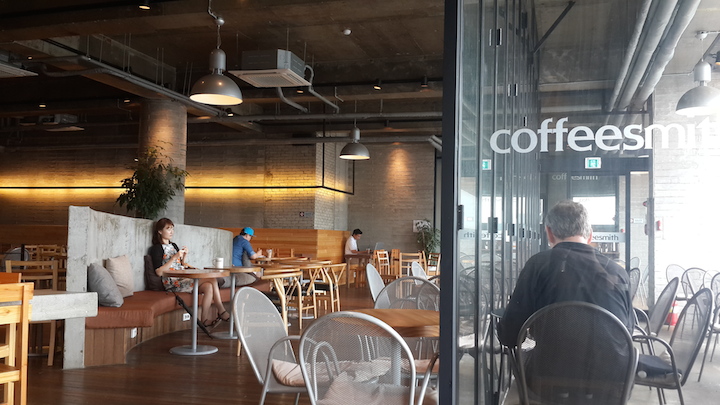
East Asia
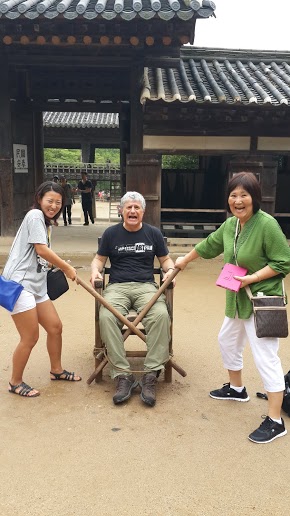
East Asia
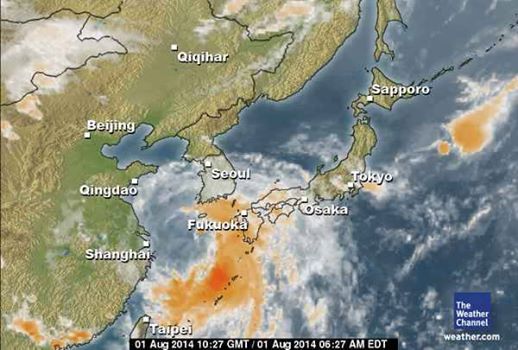
East Asia
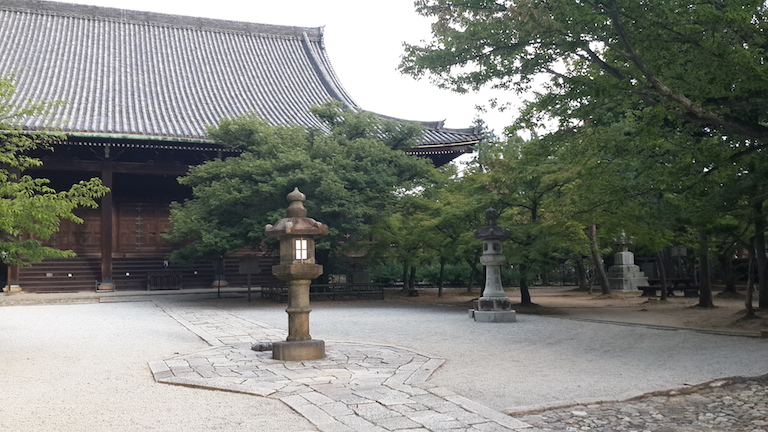
East Asia
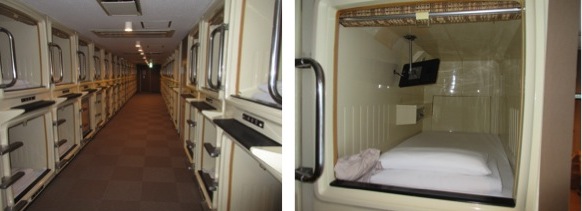
East Asia
East Asia

United States
